Still hurt and lost

This story originally appeared in the November 16, 1964 issue of Sports Illustrated. Subscribe to the magazine here.
This is a joke making the rounds: "Don't invite Cassius Clay and Sonny Liston to the same party—it seems last time they almost had a fight." Which is better humor than history. Whatever happens next week in the Boston Garden, the fact is that last February in Miami, Cassius Clay won the heavyweight title in what was conspicuously a fight (see cover) and, moreover, one that was eventful, exciting, probable, and as dismaying to most of the nation's sportswriters as it was to Liston, who still peevishly insists that Clay is only a "fair" fighter, and not as "brave" as Patterson. Liston not only failed to win, as both he and the daily press had foreordained, but the fight ended with him sitting ambiguously on his stool, his face swollen and altered as much by intimations of mortality as by Clay's lists; and this, this almost tragic expression of hurt and irremediable loss, remains. "You can see it in his eyes," says one of Liston's sparring partners. "They don't look so scary any more. They look sad and confused." "Liston is burnt out," says Cassius Clay.
Although life, unlike fiction, cannot demand a logical or rational ending, the sportswriters felt they had been took. Consequently, they reported it was a lousy fight, a fix, and what is called a Setback To Boxing. Evidently it was these things because Liston, who was the nearest piece of talent to Godzilla, failed to knock out Clay, whose only known asset was his mouth. The merits of the fight may well be a matter of de gustibus, but there has been no evidence of a fix. Furthermore, it had been written that if any commission had the gall (read greed) to sanction the rematch, no one would pay money to see it. Last week Harold Conrad who, as the fight's publicist, is trying to convince Liston to leave his brain to Harvard, announced that a record gross of $4.7 million is anticipated, a figure that includes 600,000 theater TV seats at an average of $6 a chair and a live gate of $450,000 and change. But such are the effects of journalistic vanity that Liston is a 9-to-5 favorite in Las Vegas; it is almost as though, by some supreme effort of the will, the last fight can be scrubbed from history.
But it happened, and one day last month in the living room of his rented house at 4610 NW 15th Court in Miami, Clay, who now signs in as Muhammad Ali, asked his chauffeur to turn off a taped broadcast by Elijah Muhammad, the leader of the Black Muslim sect to which Clay belongs, and to turn on the movie of the fight. There, on the wall below a handmade sign which reads "Allah Is The Greatest," it inevitably unfolded. Clay watched the film every afternoon before he went to the gym, and he has it with him at the Sherry Biltmore in Boston. "It keeps me in shape," he says. Once more, in the first round, he was fleeing the obsessed, despairing Liston. Luis Serria, a Cuban who gravely leads Clay in calisthenics and rubs him down, says that Clay was "distraught with fear" in those early moments. Clay admits he was "a little nervous. In Miami I was Columbus," he adds. "I was traveling into the unknown. I had to be cautious because I didn't know what to expect. Now I know."
What Clay discovered first of all, and what was, in effect, the point upon which the fight turned, was that he could duck Liston's vaunted jab. "Man can't lead with a hook, get me," Clay said,-watching Liston pursuing him across the plaster with great, futile hooks. (Alas, the sound track did not pick up the anguished and unheeded cries of Willie Reddish, Liston's trainer: "Cut down on your punches! Shorten your stance!") Clay found, too, that on the infrequent occasions that Liston was able to hit him, he could take the punch. But not only was Clay evading the majority of Liston's ill-considered blows, he was hitting Sonny as freely as he wished, and forcefully. Indeed, there was Liston, a shadow on the wall—bleeding, tired, suddenly aged, an impostor. "He's backing up now," Clay said. "He's never backed up." "Cook on him," Clay's brother shouted from across the room. "Cook on him, Brother Muhammad."
"One day you are the champ and your friends say, 'Yes, champ, no one in the world can beat you, champ.' Then you are no longer the champ and you are all alone." This is Liston. He was walking one evening last week with his wife, Geraldine, carrying a bag of groceries, returning to the White Cliffs hotel, his training camp at Plymouth, Mass. He went on. "After that, your friends and the people who have been making a big payday off of you aren't talking to you but about you, and what they say isn't what they said the day before. Look at there," he said, pointing to the horizon, where the setting sun colored Cape Cod Bay. "Isn't that the most beautifulest sight you've ever seen? When I first came here the moon was full and all the men kept going outside to see the moon on the water."
Liston is trying to return to the hard, narrow way that led him to the championship, even attempting to duplicate, in his anguish, the things he did two years ago, such as balancing himself on high fences. While Clay's retinue now includes an assistant to the assistant trainer, three Muslim cooks and Stepin Fetchit, who tells the audience at Clay's workouts, "Please don't smoke or spit on the carpet," the troupe that stayed up late with Liston in Miami while he played tonk and ate potato chips is gone—like his title, his arrogance, his intimidating majesty. Liston has also divested his body of so much weight (last weekend he was 208, compared to 218 for the Miami fight) that he no longer resembles himself. It is chiefly missing from his hips and buttocks, so that he looks strangely deformed, his head huge and unsettling, like some monstrous, morose dwarf. "I'll be able to bend easier," he explains.
Until recently, these deprivations had not enhanced Liston's boxing. In Denver he had not been able to put any of his sparring partners down. He had beaten some up, hurt them, but not overpowered them. Not until October 26 was Liston's confidence, to any measure, restored. That day he hit a sparring partner named Lee Williams between the eyes and busted him open. Afterward, all Liston could talk about was the blood and the eight stitches it took to sew Williams up. "Blood is like champagne to a fighter," says Al Lacey, an oldtime trainer. "It gives his ego bubbly sensations. It helps the fighter's inner man; he begins to believe in himself. They used to feed Dempsey old has-beens in the last days of his training just so he could knock them down, and it never failed to pick up his spirit."
But it still appears that Liston has done little to correct the inadequacies Clay exploited in Miami. When Liston brings his jab back, his fist hangs by his waist. In the interval it takes him to cock it, Clay will be able to hit him on the head two, three times. When Liston remembers to bob and weave, it is in a simple, predictable pattern, like a pendulum, and Clay will have no trouble timing and penetrating this defense. It is evident that Liston is practicing restraint—"biding my time," he says—holding fire until he is decidedly within range. But any unexpected move breaks his muscular tension and disconcerts him and, as Angelo Dundee, Clay's trainer, says, "My guy is no conformist."
Only rarely does Liston punch in combinations, and he never throws a straight right hand to the body. When Clay leans back to evade Liston's jab, his jaw is beyond reach, but not his midsection. If, after the jab, Liston follows with a right to the body, he might well slow Clay down enough to beat on his head and, by his own admission, Clay was hurt by right hands to the body in the second and fifth rounds. "Liston should be working on a straight right to the body," says one of his sparring partners, "but he don't seem able to throw the punch that way. He's working on another round punch, and Clay can twist away from that. If you watch Liston closely you can avoid getting hurt. He's slow and plants himself before he punches. Any sudden movement, a shoulder feint or head fake, and his concentration is broken."
"Liston buys everything," Dundee says. "He's a one-way fighter. He can't lick a two-way, let alone a four-way fighter, a guy that can go forward and back, side to side. A fellow that can go side to side can beat him! I first got enthused about Clay's chances when I saw what Machen did to Liston. He can only go one way—forward. He's big, ponderous, and every one of his movements is predictable. Liston can't lick Clay. He can't lick that format. He can't lick a tall guy. Liston punching down is powerful. Banging down on you he can hurt, but banging up.... It's like hitting a nail with a hammer. It you hit down, you have power, but when you hit up.... And Liston can't change nothing. Liston is Liston."
"I feel every man is two men," says Drew (Bundini) Brown, Clay's assistant trainer. "This is particularly true of the champ. He talks to himself and he listens. The champ is a free man. He is one of a kind. He is hand-carved. He is a poor man's dream. He is the baddest man on earth—earth, baddest man, that's better. He won't take orders, but if you say something that makes sense then he will hear it and play it back to himself. That is why me and Angelo never give him a command, but we use psychology. We come up with expressions. A Guy Gets Hit Don't Look Good. Slide And Glide, Take A Ride. Hit And Don't Be Hit. Your Left Hand Is Your Best Friend. The Ropes Are Your Enemy, So Stay Away From Them. The champ remembers these lines, and he uses them himself and he does these things. He is doing new things, marvelous things, all the time."
Clay is also a new man. While Liston seems to have become almost wizened, Clay has grown half an inch since February—he now stands 6 feet 3—and has put on six pounds. He weighed 216½ a week before the fight. More significantly, Clay's biceps measure 17 inches, his thighs 27 inches, a two-inch increment in both places, and, at 13½ inches, his forearm is an inch bigger than it was prior to the Miami fight. His waist remains the same, however—34 inches. When Clay returned from his African pilgrimage last June, he was 240 but, as he said the other day after trying on a sweater in a shop on Boston's Massachusetts Avenue, "Jackie Gleason is gone. I have lost my big stomach. I never drink or smoke, so none of that was bad flesh. It was health fat, that's what it was, health fat. I'm so beautiful I should be chiseled in gold. Look at that build. It's pretty. I mean, it's ready to dance. Right now!"
Clay truly is in marvelous shape. "I had to get unfit before I learned to stay in condition," he says ruefully. In July, when he was still keeping company with Gleason, Chip Johnson, a sparring partner, put him down with a short right hand. "I froze on the spot," Johnson recalls. " 'Chip Johnson,' I said to myself, 'you know you just dropped the champ. Get up, get up,' I cried. 'Stop jiving.' He said to me, 'Chip Johnson, you hit me with the true thing.' Liston better not knock him down. I don't want to lose my prestige with the champ."
"He wants to work," Dundee says. "That's his biggest asset—he wants to train. No one has to push him. This is everything he wants." "I'm filling up his tank," says Bundini. "I got him running with a pound-and-a-half weight in each hand. I got him running with heavy boots on. [Clay says the boots weigh five pounds apiece, whereas the ones he wore before the first fight only weighed half that much, and that they are 13½, although he wears a size 12 shoe.] Makes his ankles feel like he had two pair of wings on. If you clip his wings, he be dead, he be dead."
For one reason or another, Clay's genius as a fighter has never been fully appreciated. Perhaps it is on account of his often abrasive personality, or that he is, essentially, a romantic figure in an unromantic age, or perhaps because so few can grasp the extraordinary, advanced way he fights. As a person, Clay has become more subdued and mannerly. "The champion has to have dignity," he explains. "That's why I ain't going to pull any more stunts on Liston or run around shouting all those crazy things." Nevertheless, Liston is the sentimental as well as the betting choice—a result, doubtless, of the echoes of Clay's tedious braying and his espousal of the Muslim cause. In the past. Clay frequently has been indolent, even insolent, in the ring, and there are those who know in their hearts that Billy Daniels was giving him a real good whipping before the ref stopped it, and that Doug Jones actually beat him. In truth, Clay was well ahead of Daniels, and though he took Jones too lightly he win it big and gave Jones such a licking in the final rounds he hasn't been the same fighter since.
So who kids whom how many times? Clay is undefeated. As well as can be reckoned, he has called the round 11 times and made it stand up nine, which is on the order of climbing Mount Everest on roller skates. This time he contends Liston will fall in nine. "I give him three more rounds for being in better shape," says Clay. (In fact, Liston may well have been overtrained in Miami—reaching his peak so early he had to be laid off—particularly for a man of his apparent age, which has to be closer to 40 than the official 30.) Someone asked Clay how many seconds will have elapsed in the ninth before Liston falls. "Seconds are gimmick talk," said Clay, hotly. "There's nothing spooky or ghosty about calling the round—it's all science. I go into conference with myself and then I prophesy. You start with the thought and then you turn it into reality, like the scientist figured out how to make the jet before he built it."
Bundini recalls: "When I first met the champ, I told him he was a phony, doing all that predicting. He said to me, "Every time I call it, I'm scared to death." There were tears in both of our eyes. The champ does not agree with everything I do, but he loves me."
"Clay does more things by accident than most big men do on purpose," says Dundee, intending it as a compliment. "In Miami you only seen one quarter of the things this kid can do," says Bundini. For example, Clay is working on a sequence that goes pop-pop-pop (that is the sound of the jab), step back, step in, right cross. Or he will go pop-pop-po...instead, he stops the jab halfway and turns it over into a hook. "He throws right uppercuts," says Dundee, full of wonder.
"Liston's going to try to grab my jab," says Clay, "pull me to him with his left, and chop me in close with his right. My strategy is to dance, stick and move. In the clinch, spin, grab and hold. I'll be hitting harder. I'll be more confident and determined."
"You can never become great unless you take chances," says Bundini. "How can you take a pot unless you make a bet? The scared man do not push his chips in. Once the champ was like a kid holding four aces—he talked too much. Now he knows that when he is holding four aces all he has to do is spread them out and take the pot. A cucumber is a cucumber until it has been in vinegar. Then it is a pickle. The champ is seasoned now, but experience is dangerous."
Indeed, this leads to one of the major imponderables of this fight. In Miami a degree of fear moved Clay, kept him out of harm's way until Liston had worn himself out. How will Clay react without as much help from his adrenal glands? For him the difference between victory and defeat may be measured in fractions of inches—the breadth of air he can keep in front of his chin. In Miami, Liston forced Clay into corners, but was not able to violate his air space. The corners are still where Liston is looking to put him, for in the corners Clay cannot go back. If Clay can stay off the ropes, the fight is most likely his; when he is on the ropes his mobility is restricted, and Liston's relative immobility does not count so much against him.
In several of his training sessions last week Clay looked bad because, as he explained, he was allowing himself to be worked against the ropes. "I must be prepared in case the Big Bear gets tough," he said. He then went into an elaborate metaphor—the Clay camp is very poetic—about how an airplane pilot undergoes simulated emergencies in his training so he will learn how to react to them if they occur in actuality. "I face reality," Clay said. "I may not sound human, but behind closed doors I worry and pray."
Another imponderable is how Liston will fight now that he is driven by desperation. Is he, in fact, a bully who cannot perform well unless he believes he is assured of winning? To defeat Clay, Liston must stalk him, not chase him. He must cut the ring in half, which he learned to do for the first Patterson fight. He must throw his right hand—in which he has so little faith, although it demonstrably set Patterson up for some of those terrible knockdowns. He must remember to keep his left up, to throw combinations, to feint and to beat on Clay in the clinches. He must husband his big punches until he is relatively certain they will be on the mark, and not punch himself out because, if he is to win, it will only be by a knockout.
"I guess I just stopped thinking," Liston says about his discreditable performance in Miami. Will Liston's corner be able to bring him back to reality this time? Clay has the edge in seconds not because Reddish necessarily knows less about boxing than Dundee but because Dundee can handle Clay, while Liston seems to tune Reddish out. In the fifth round in Miami, when Clay's eyes were smarting and he wanted to quit, Dundee got him off the stool. "We got up too early too often to quit," Bundini says he told Clay at the time, but it was Angelo's hand that pushed the man out there.
But, having pondered the imponderables, one can only conclude that Liston will not win, because whatever he does, or does not do, he can never match Clay's brilliant speed of hand, foot and mind—his instinct and his application. Until the Miami fight, Liston was regarded as a superior defensive fighter, yet against Clay's bewildering and various volleys he was helpless. This is because Liston can only defend against one punch at a time, which he does very well. Liston has always had trouble with clever, unorthodox fighters—a Marty Marshall, a Machen—and Clay is sui generis if nothing else. Although he does not hit as hard as Liston, Clay's blows have impact and they cut. And Clay can take a punch, which confounded and demoralized Liston in their first meeting.
On form, Clay should be a heavy favorite to win by a decision. He is a good bet to knock Liston out from the seventh through the 14th rounds. Liston, if he wins, is more likely to do so in the first few rounds. His chances lessen as the fight progresses, since he should grow weaker from the attrition of Clay's multiple blows and the energy he will have expended in missing. If the fight lasts 14 rounds, however, Liston's hope of a knockout should be greater than at any time since the fifth. Clay will have slowed up and Liston can gamble on one mighty, concluding punch.
But, by and large, wild strokes of fortune do not notably account for man's achievements; they are brought about, rather, by the orderly application of superior resources—whether they are deductions or punches in the mouth. The choice is inescapably Clay—by a knockout. Rounds are gimmick talk.
SI's 100 Greatest Photos of Muhammad Ali
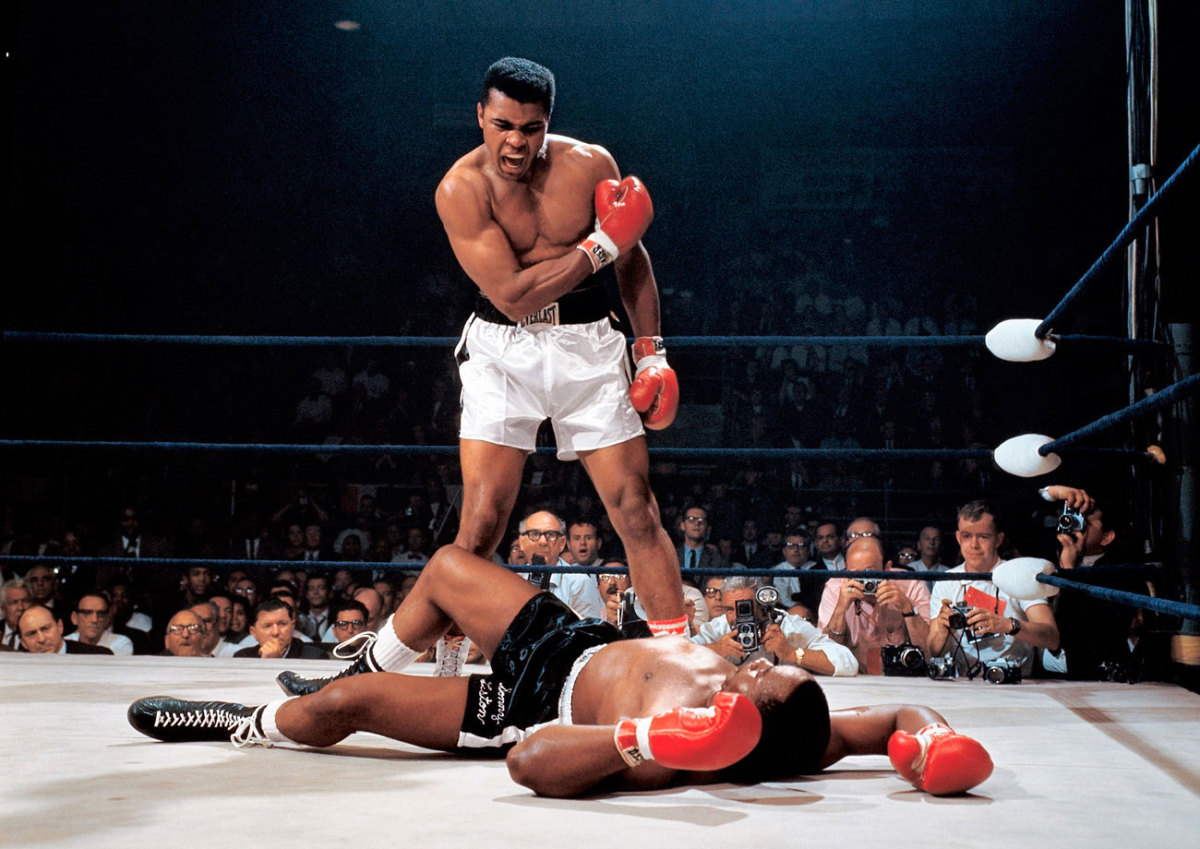
In one of the most iconic and controversial moments of his career, Ali stands over Sonny Liston and yells at him after knocking the former champ down in the first round of their 1965 rematch. Skeptics dubbed it "the Phantom Punch," but films show Ali's flashing right caught Liston flush, knocking him to the canvas. Refusing to go to a neutral corner, Ali stood over Liston and told him to "get up and fight, sucker."
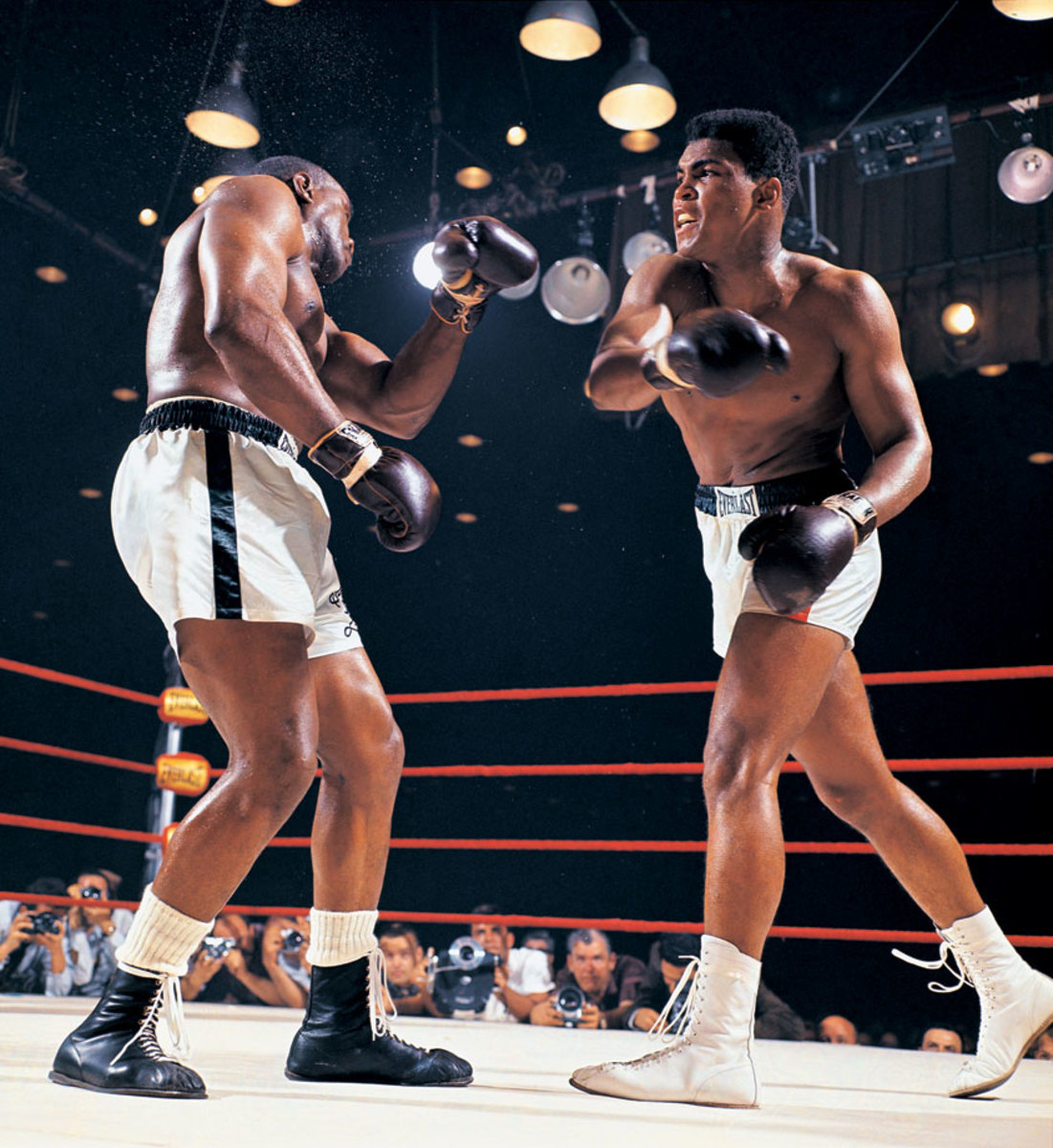
At 22-years-old, Cassius Clay (Muhammad Ali) battered the heavily favored Sonny Liston in a bout that shook the boxing world. The fight ignited the career of one of sports' most charismatic and controversial figures, whose bouts often became social and political events rather than simply sports contests. At the peak of his fame, Muhammad Ali was the best known athlete in the world. Liston, one of the most feared heavyweight champions in history, was a 1-8 favorite over the young challenger known as the Louisville Lip. But Clay, here stinging the champ with a right, used his dazzling speed and constant movement to dominate the action and pile up points.
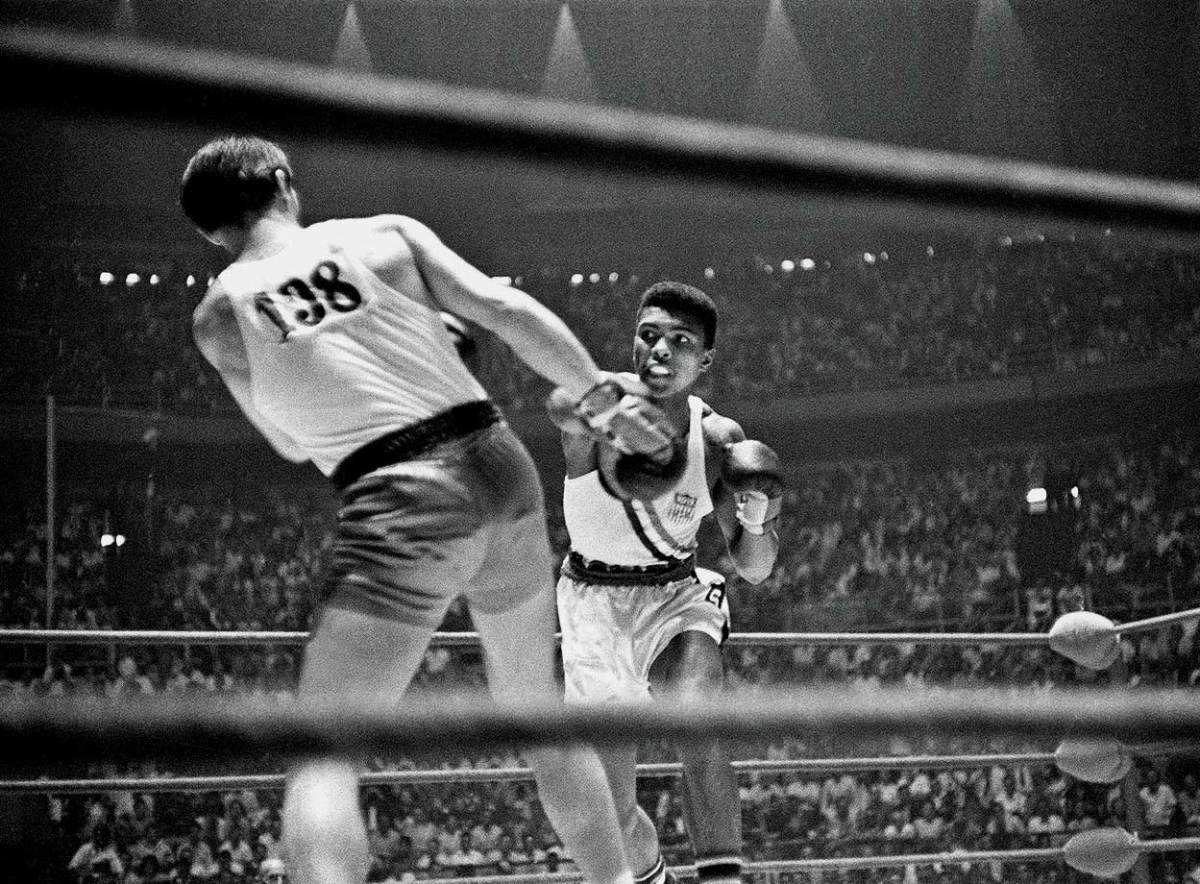
Cassius Clay punches Zbigniew Pietrzykowski of Poland during their gold medal bout at the 1960 Rome Olympics. Clay defeated Pietrzykowski 5-0 for the light heavyweight gold medal.
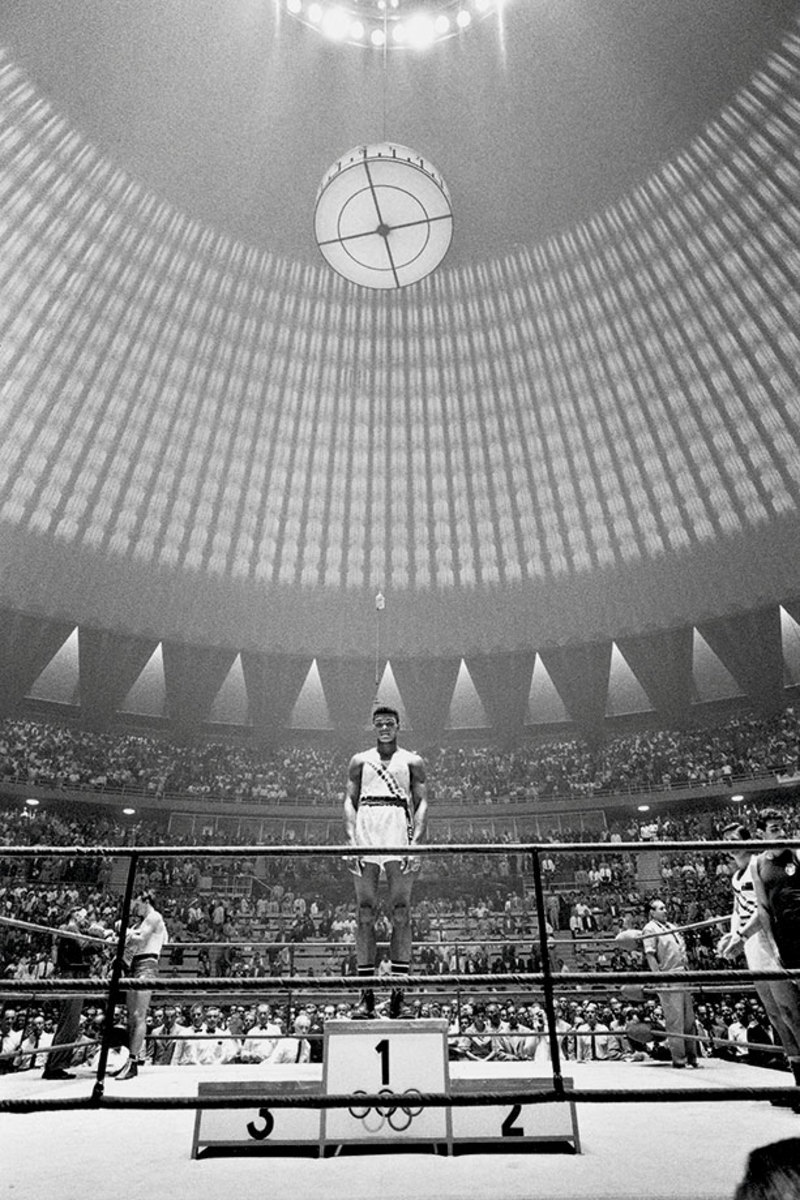
For the 18-year-old from Louisville, here atop the medal stand after his Olympic victory, all roads led from Rome. Clay finished his amateur career with a record of 100-5 and made his professional debut two months after the Games.
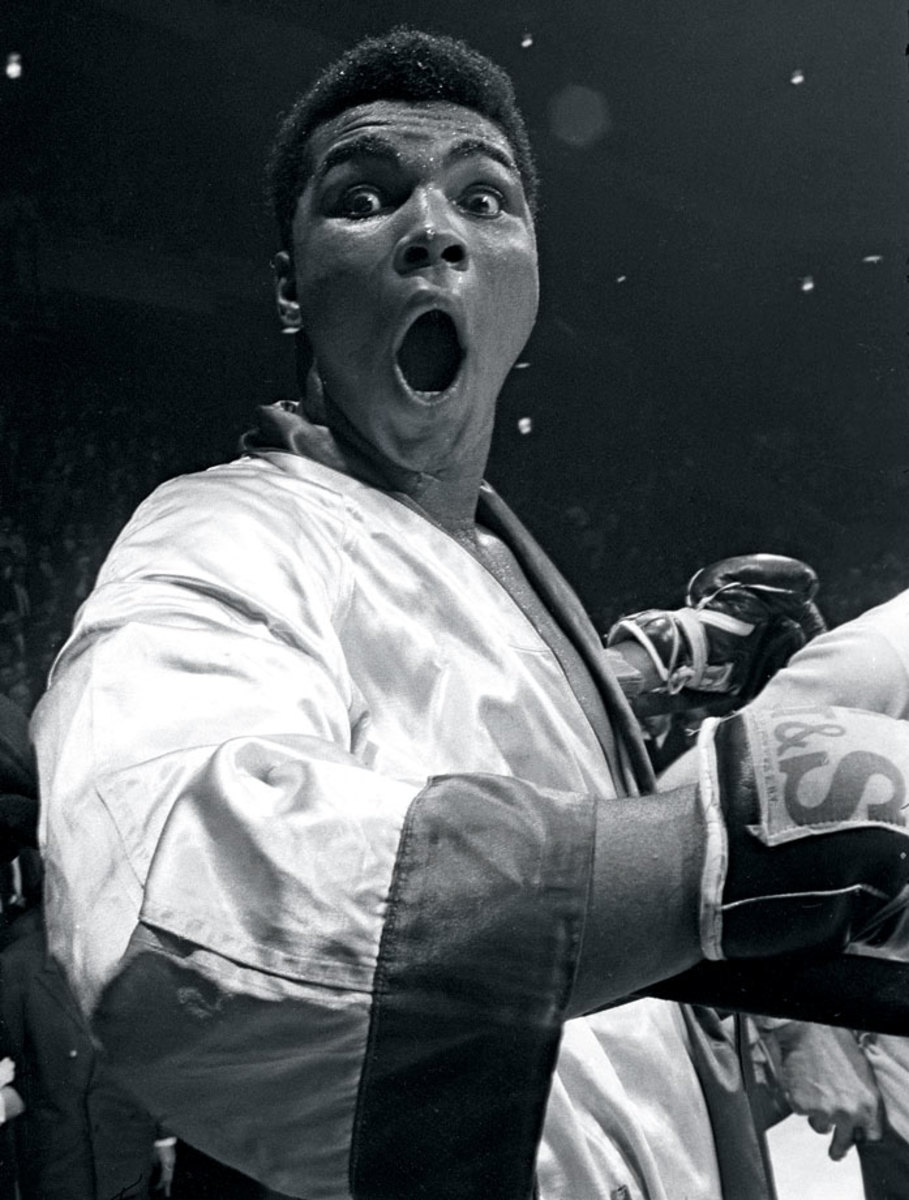
Undefeated in his first 17 pro fights, Clay mugged for the camera before the start of his 1963 bout against Doug Jones in Madison Square Garden.
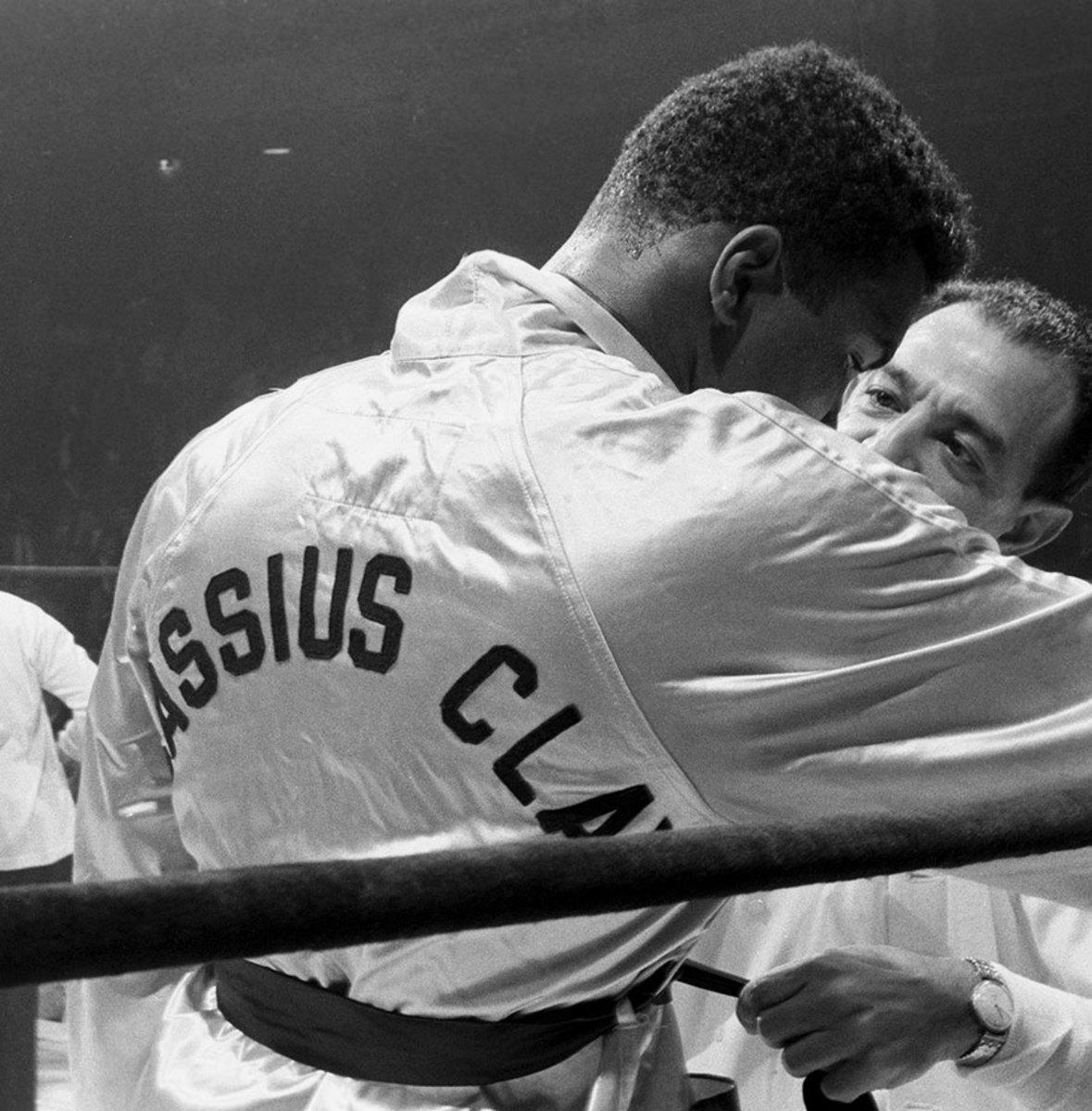
Trainer Angelo Dundee urged his young charge to get serious before the opening bell against Jones. Clay followed instructions and emerged from a tough fight with a unanimous decision victory. Three months later he would stop Henry Cooper and close out 1963 at 19-0.
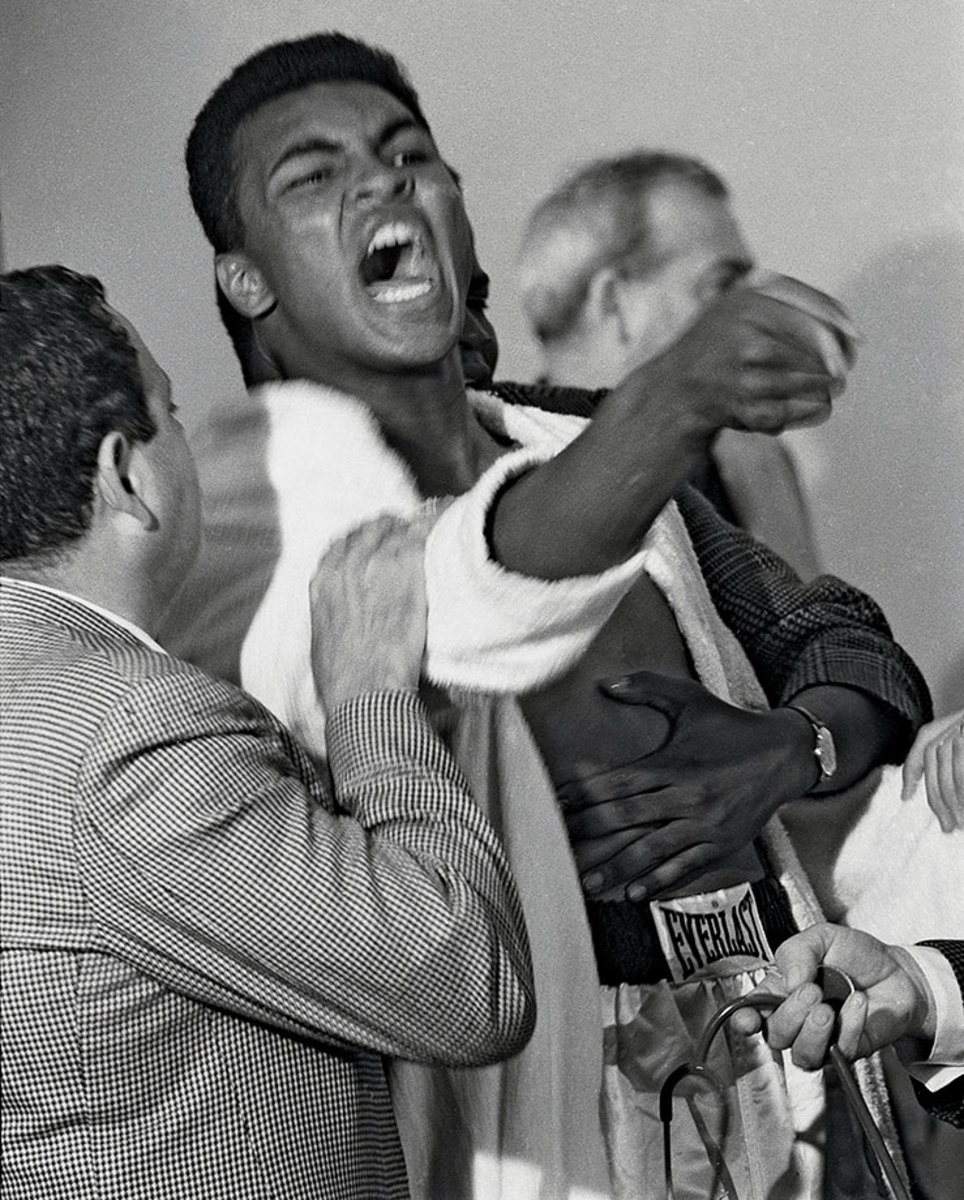
A seemingly hysterical Clay taunted Sonny Liston during the pre-fight physical for their 1964 bout. He had consistently baited the Big Bear during the lead-up to the fight, saying he was going to "use him as a bearskin rug ... after I whup him." The Miami Boxing Commission would fine Clay $2,500 for his outburst at the physical.
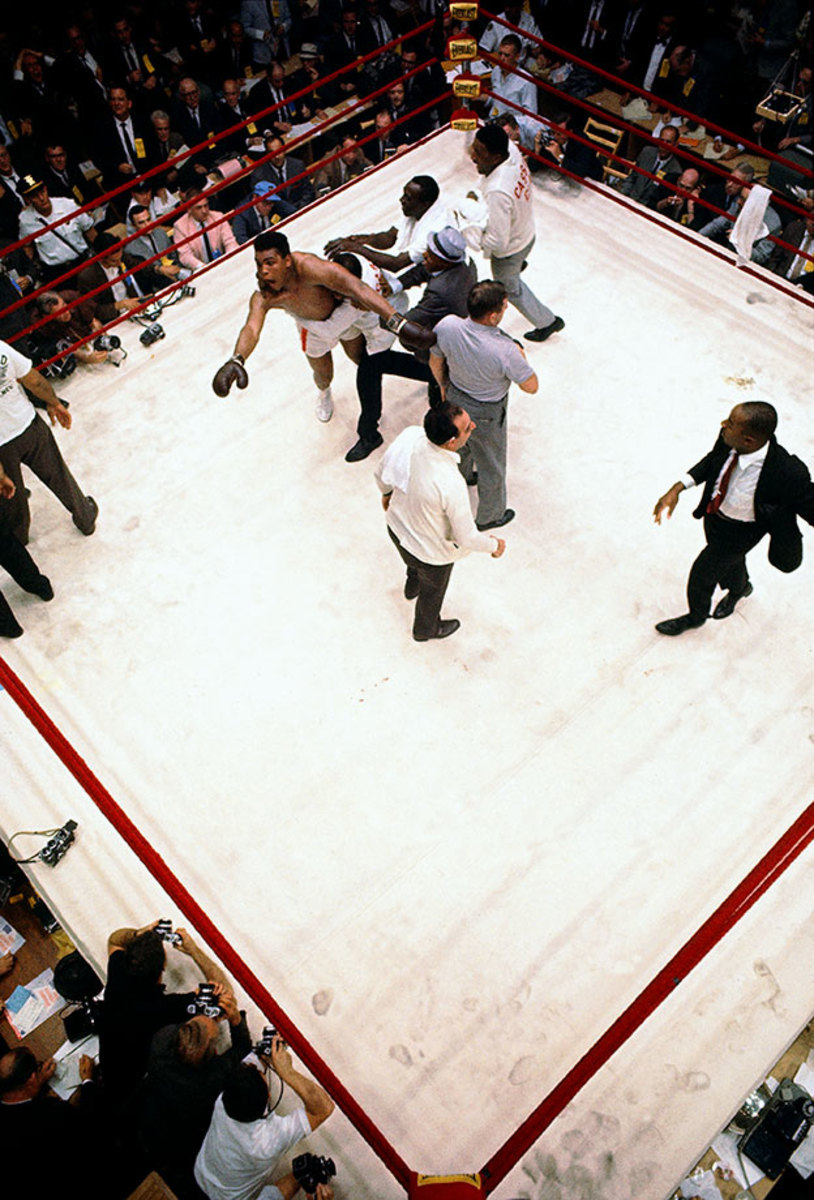
"I shook up the world!" an emotional Clay hollered to ringside reporters after his shocking defeat of Liston. And he did just that, claiming the heavyweight title at age 21 after a clearly beaten Liston, complaining of a shoulder injury, failed to answer the bell for the seventh round.
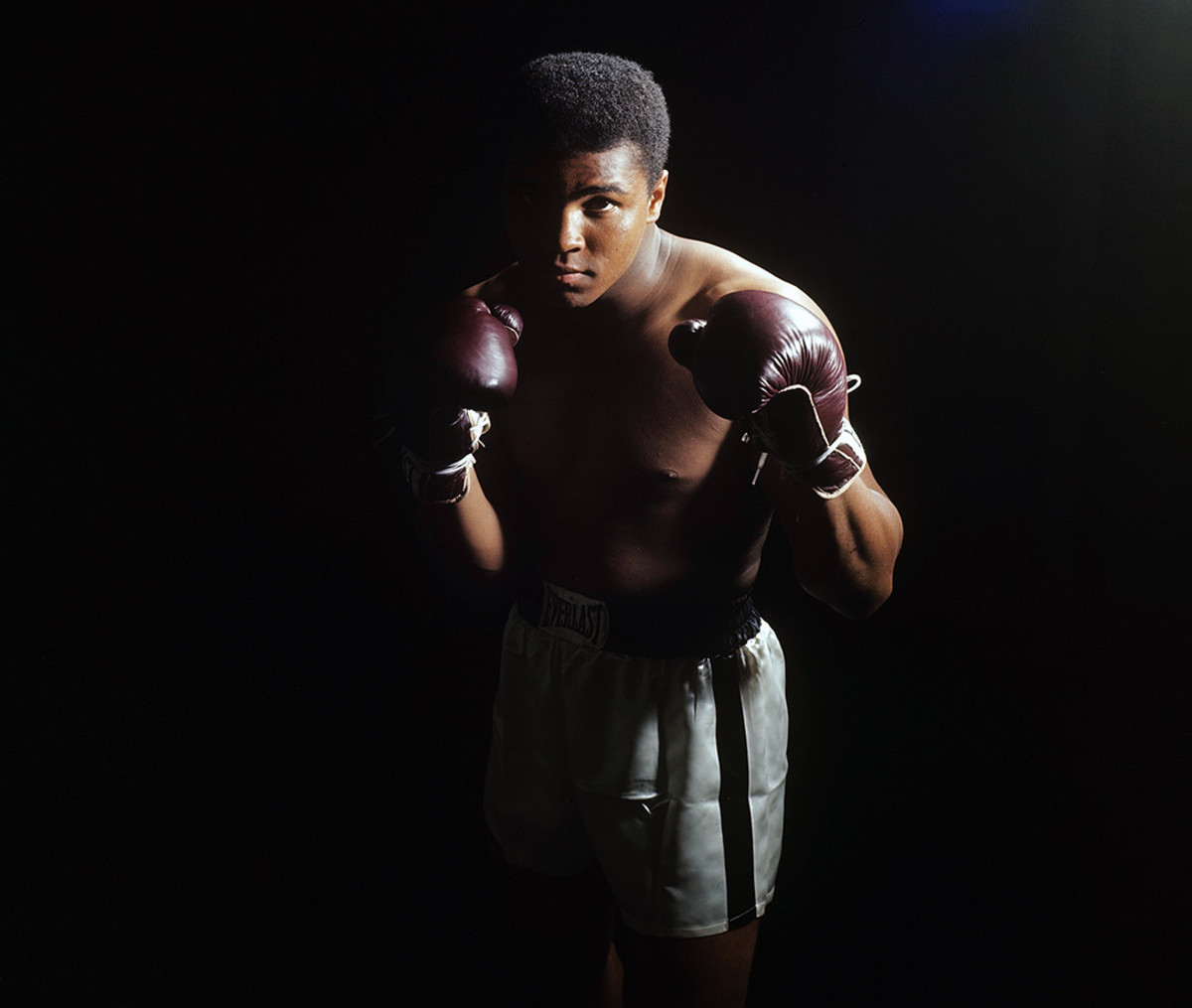
Draped in shadow, the young king — now known as Muhammad Ali — stared down the camera during a photo shoot in April 1965, one month before his rematch against Sonny Liston.
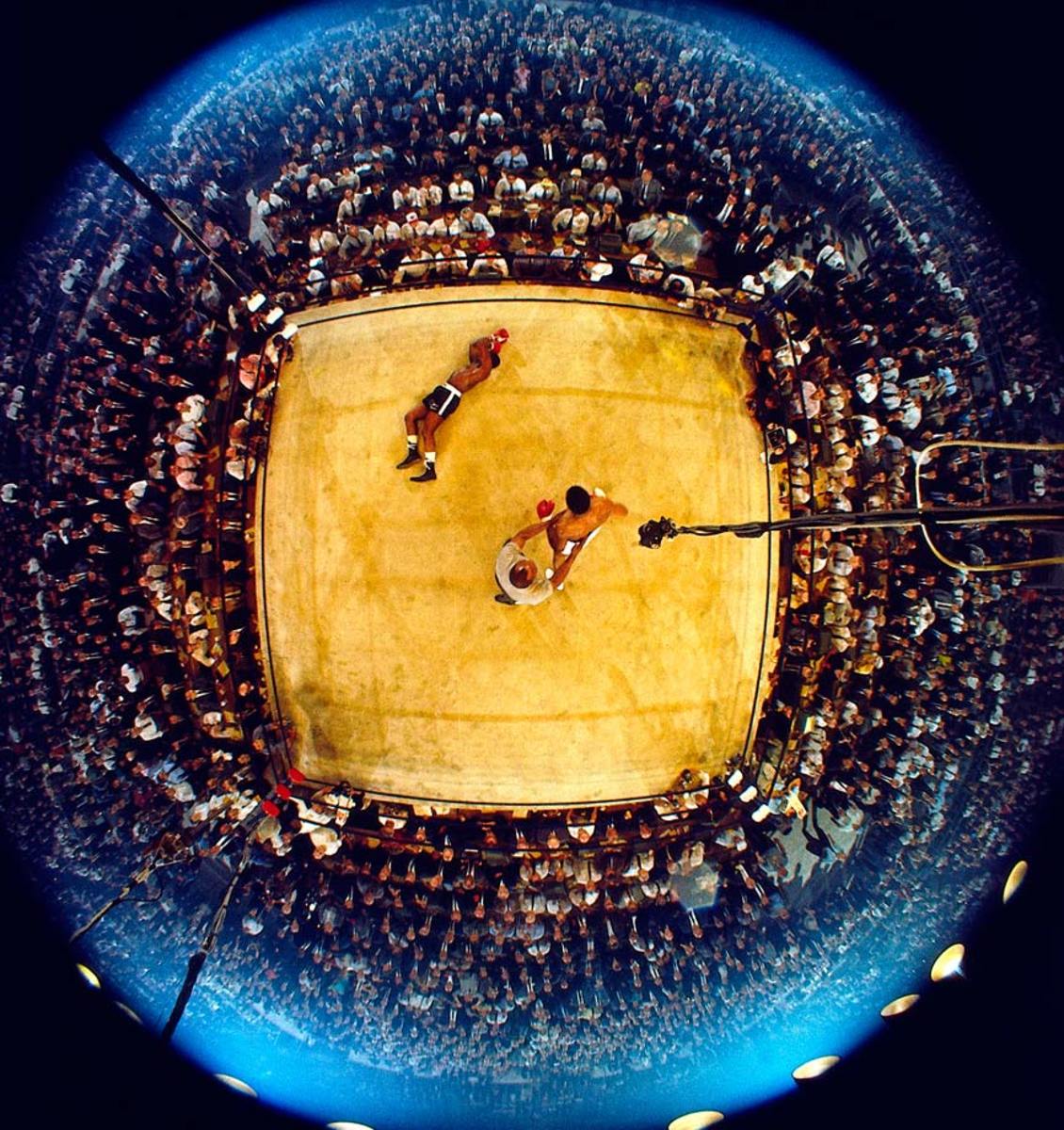
As Liston lingered on the canvas and the referee, former heavyweight champ Jersey Joe Walcott, tried to control Ali, the 2,434 spectators on hand in the Lewiston, Me., hockey arena — a record low for a heavyweight championship fight — tried to make sense of what all that had happened in less than two minutes after the opening bell.
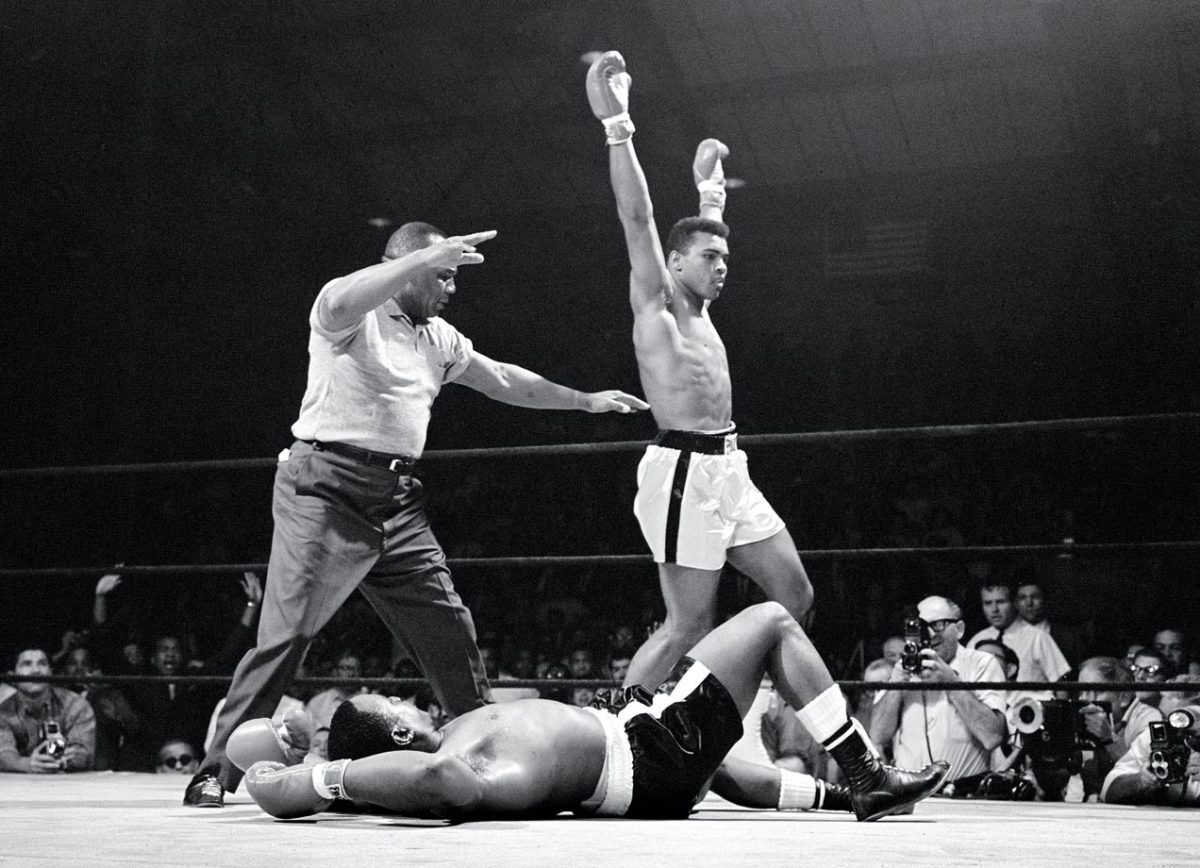
The celebration over Liston continued. In a chaotic ending, Ali was awarded a knockout when Nat Fleischer, publisher of The Ring, informed referee Jersey Joe Walcott from ringside that Liston had been on the canvas for longer than 10 seconds after Ali knocked him down. The bout remains one of the most controversial in boxing history, with many observers insisting that Liston took a dive.
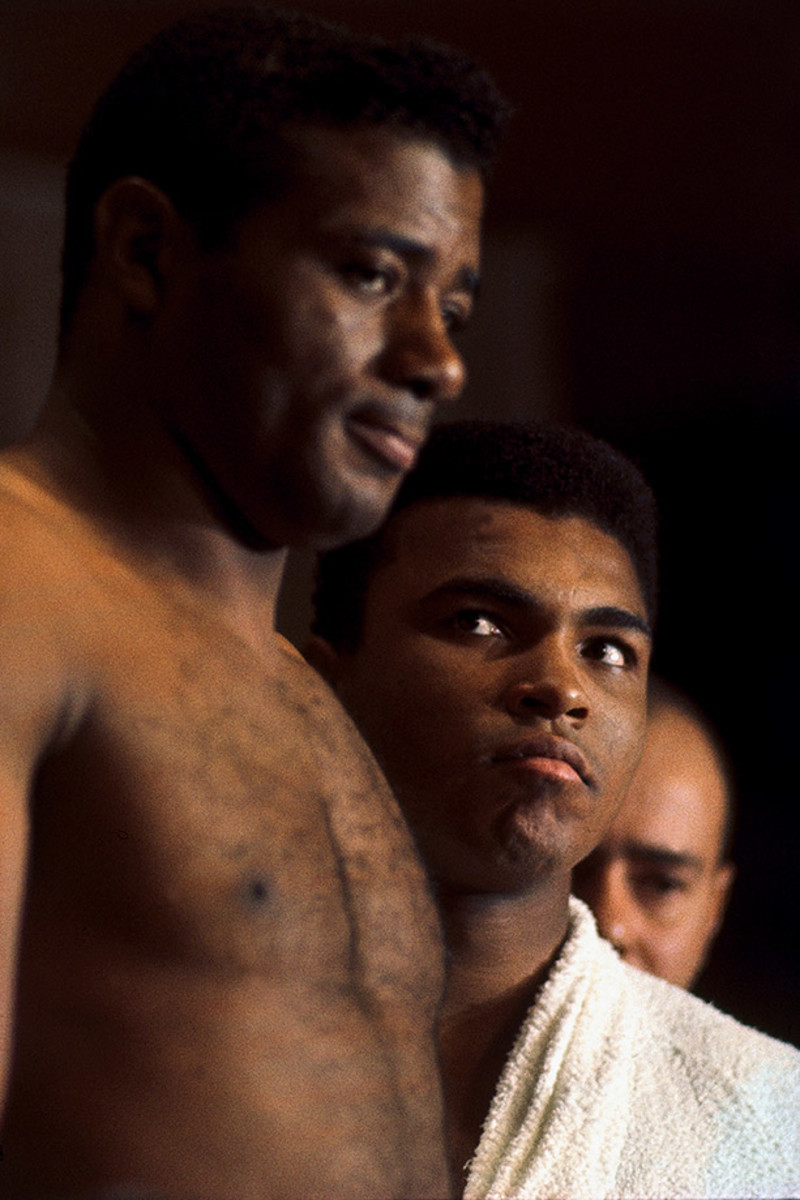
Ali's second title defense came in November 1965, against former two-time heavyweight champion Floyd Patterson. During the build-up to the bout, the normally soft-spoken Patterson earned the new champ's wrath by refusing to call Ali by his Muslim name. At the weigh-in, Ali's glare made it clear that he intended Patterson to pay for the disrespect.
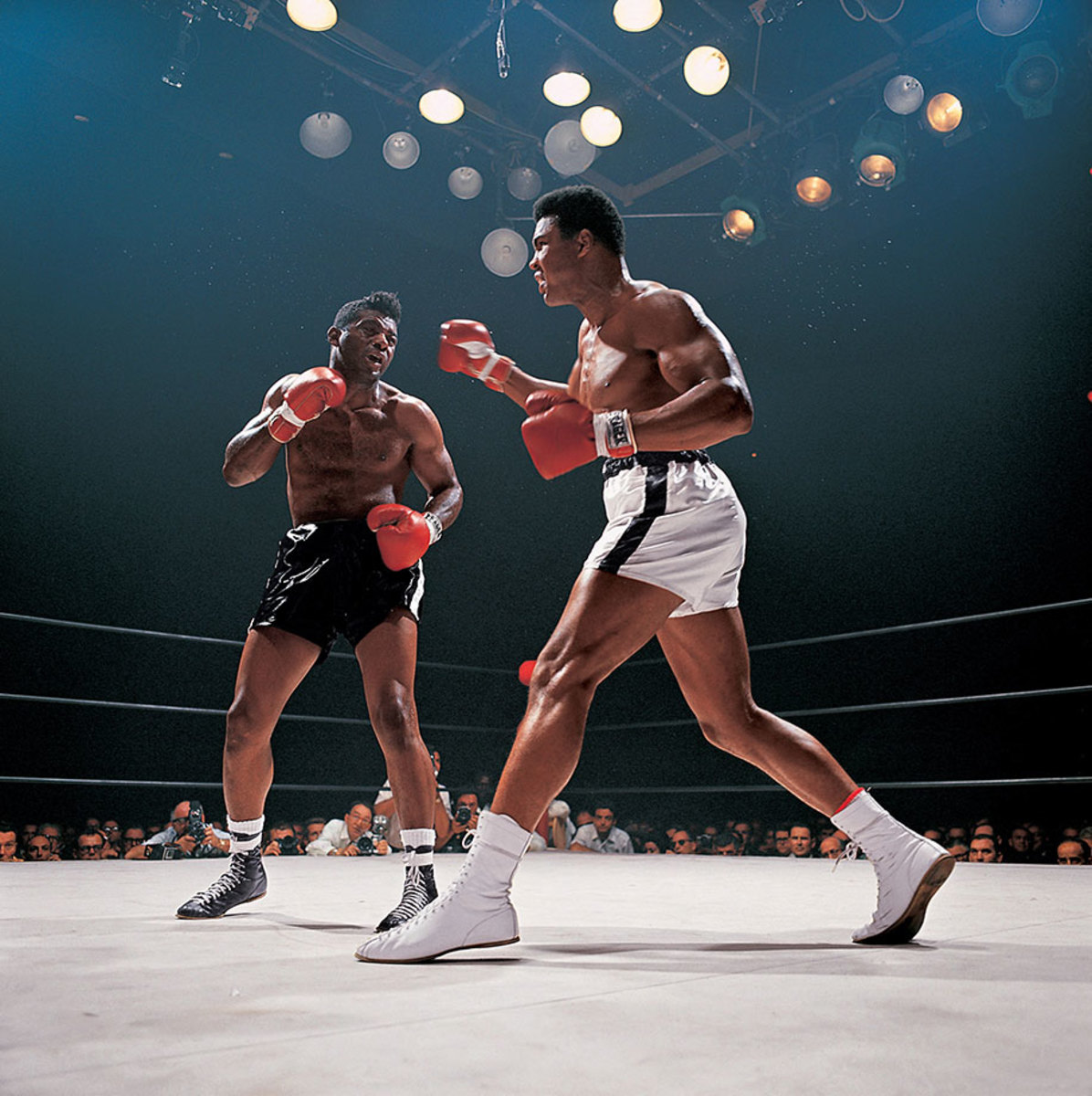
In cruelly efficient performance, Ali punished Patterson — who was hobbled by a painful back injury — seemingly toying with the former champ throughout the bout, hitting him at will and calling, "What's my name?" before finally winning on a 12th-round TKO.
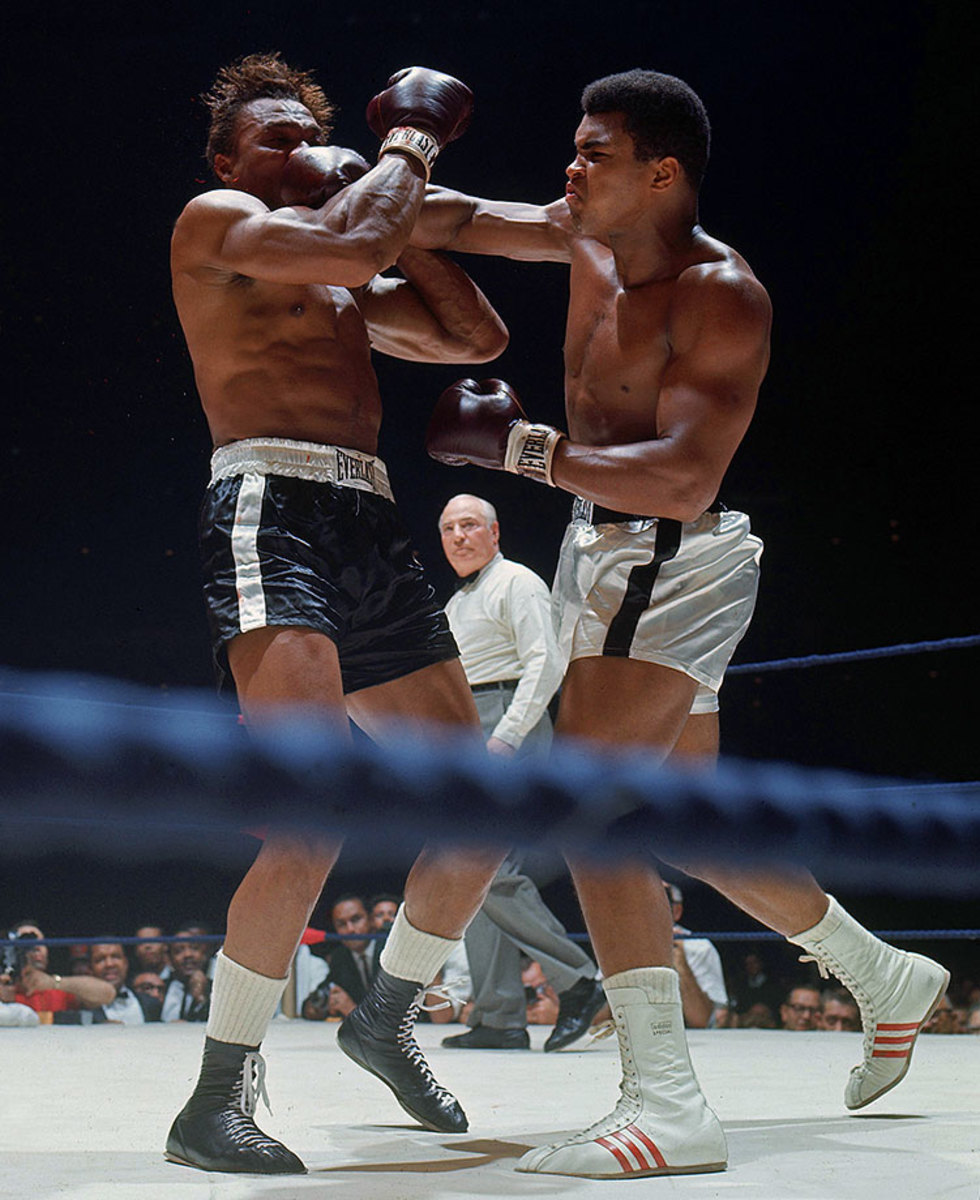
Capping off a five-fight campaign in 1966, Ali faced Cleveland Williams in the Houston Astrodome on Nov. 14. Known as the Big Cat, the heavily-muscled Williams was a power puncher who had racked up 51 knockouts in 71 fights. But he was also 33, barely recovered from a gunshot wound sustained the year before, and up against a young champion very much in his prime. Ali wasted little time in unleashing a withering attack.
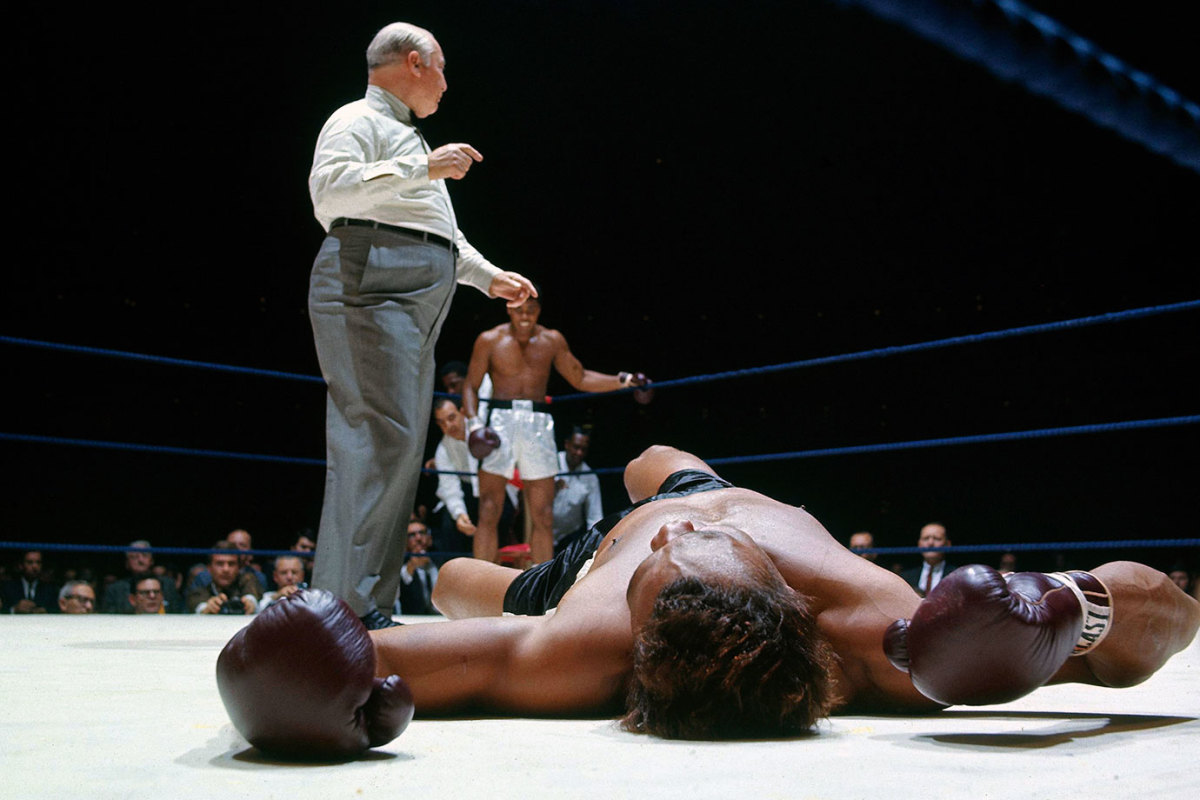
Float and sting: In a display of speed and combination punching unmatched in heavyweight history, Ali overwhelmed Williams from the start. The challenger, here down for the third time in round 2, would be saved by the bell before referee Harry Kessler could count him out, but it would only postpone the inevitable.
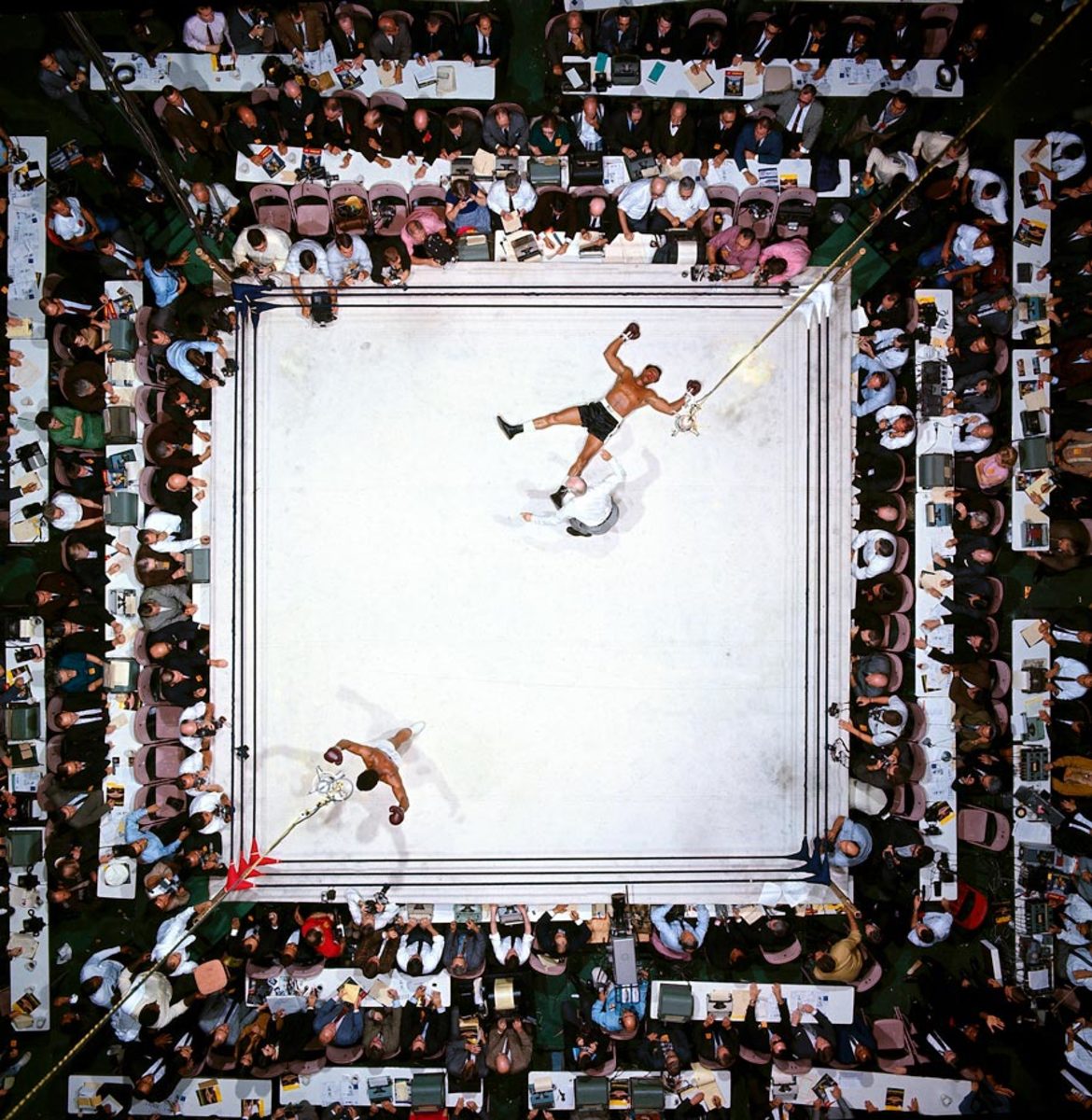
Ali dropped Williams again early in the third round, and Kessler waved the mismatch over at 1:08 of the third.
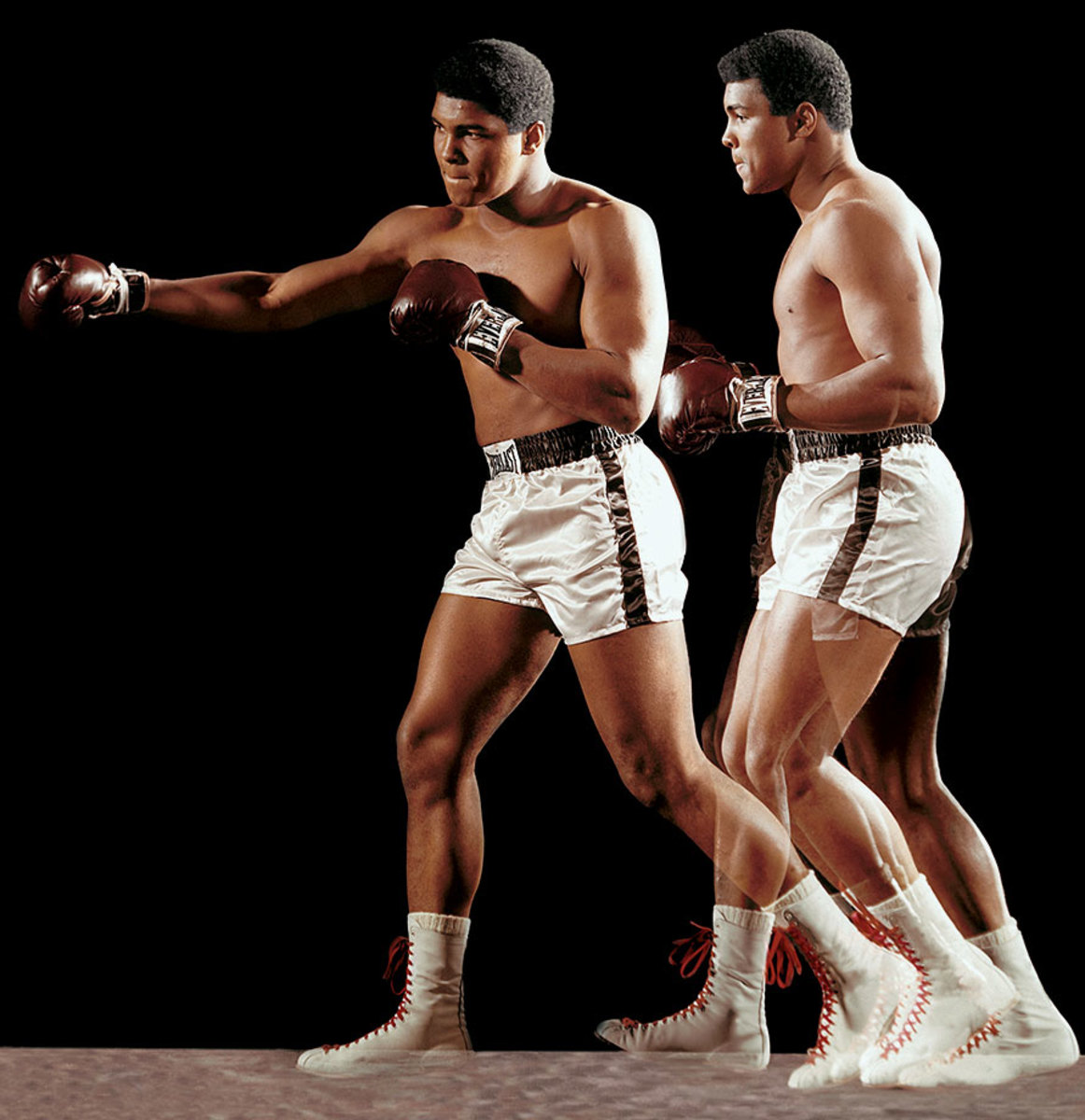
In a multiple-exposure portrait, Ali demonstrates his signature double-clutch shuffle during a photo shoot in December 1966.
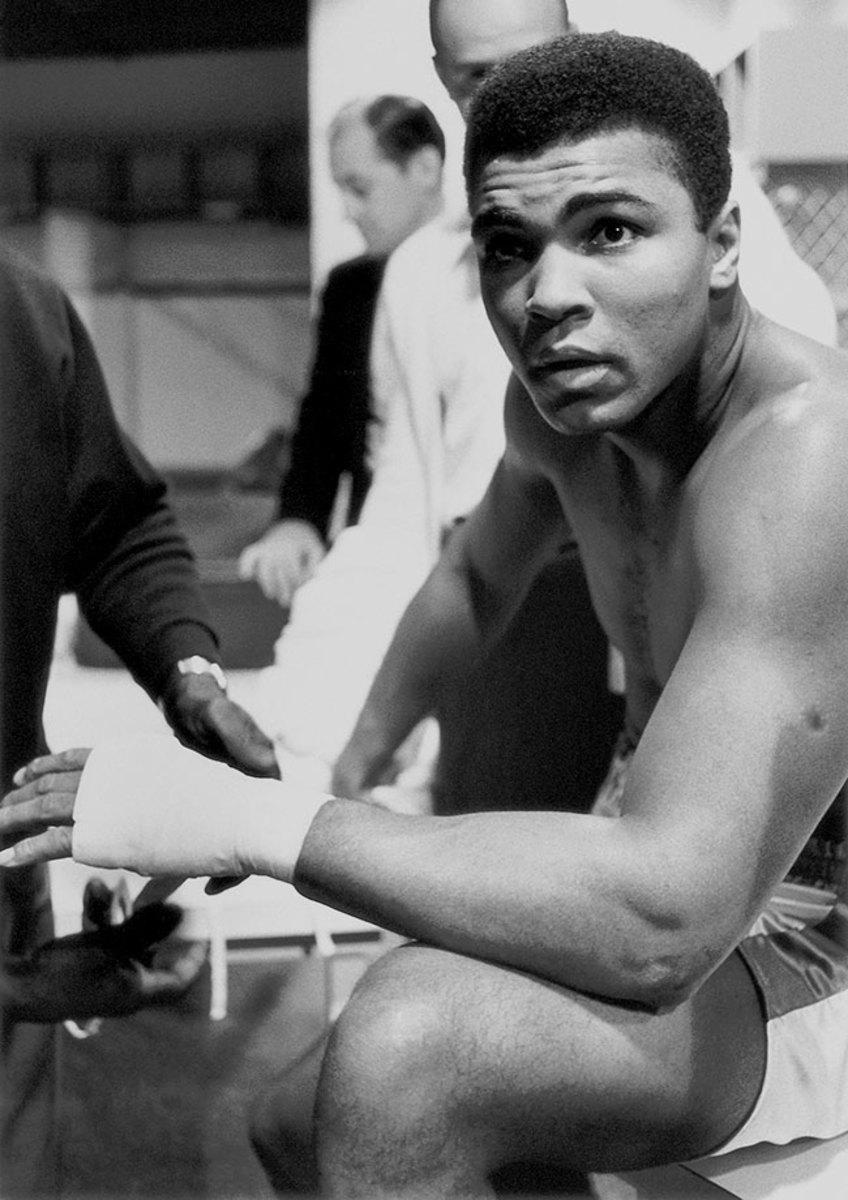
Ali sits in the locker room before his February 1967 fight against Ernie Terrell. Like Patterson before him, Terrell refused to call the champion by his Muslim name. Also like Patterson, he paid a stiff price, as Ali punished Terrell for 15 ugly rounds before winning by unanimous decision.
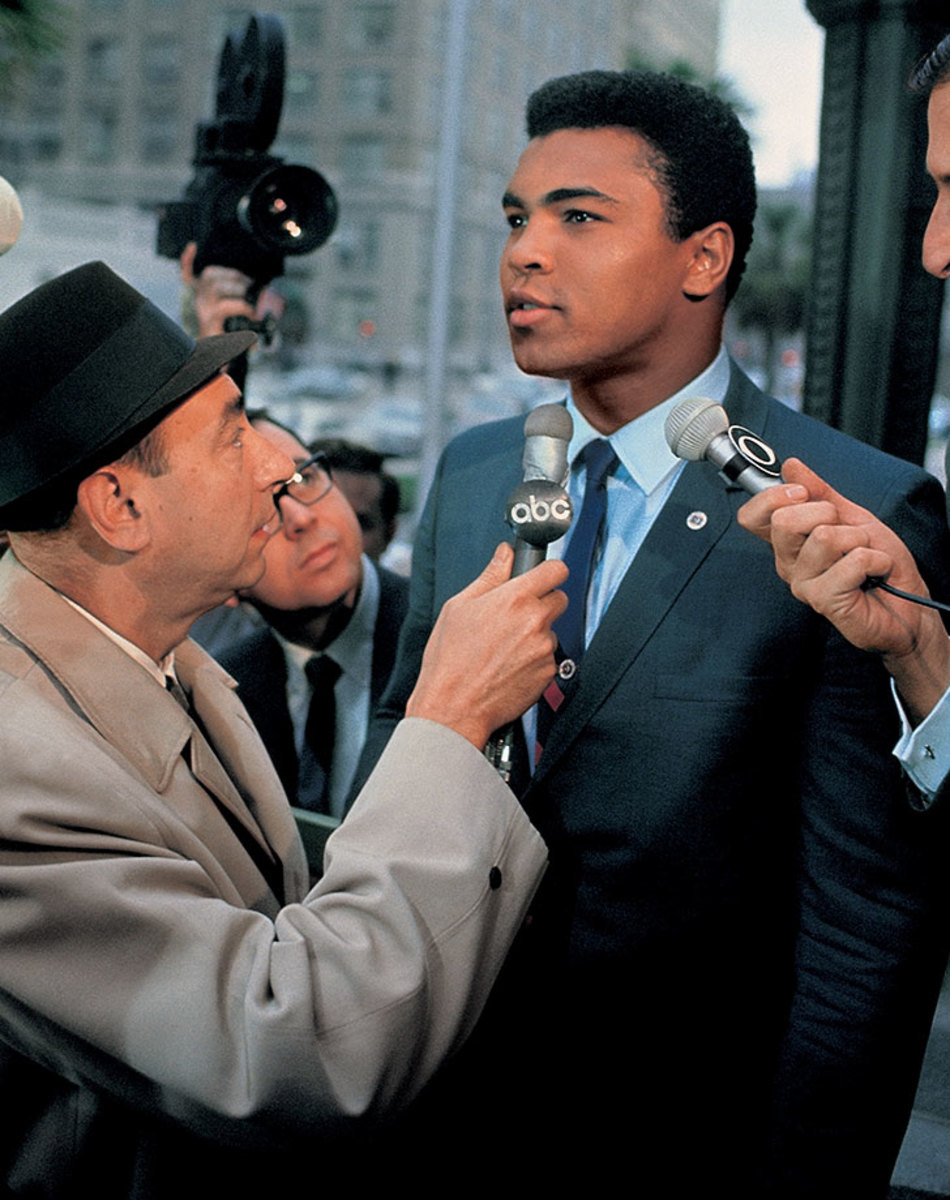
Outside the Armed Forces Examining and Entrance Station in Houston in April 1967, Ali spoke to the press about his refusal to be inducted into military service. Among those on hand was ABC's Howard Cosell, who would be a staunch supporter of the fighter's stance. The decision cost Ali his boxing license and his heavyweight title, and he was sentenced to five years in prison but remained free pending an appeal.
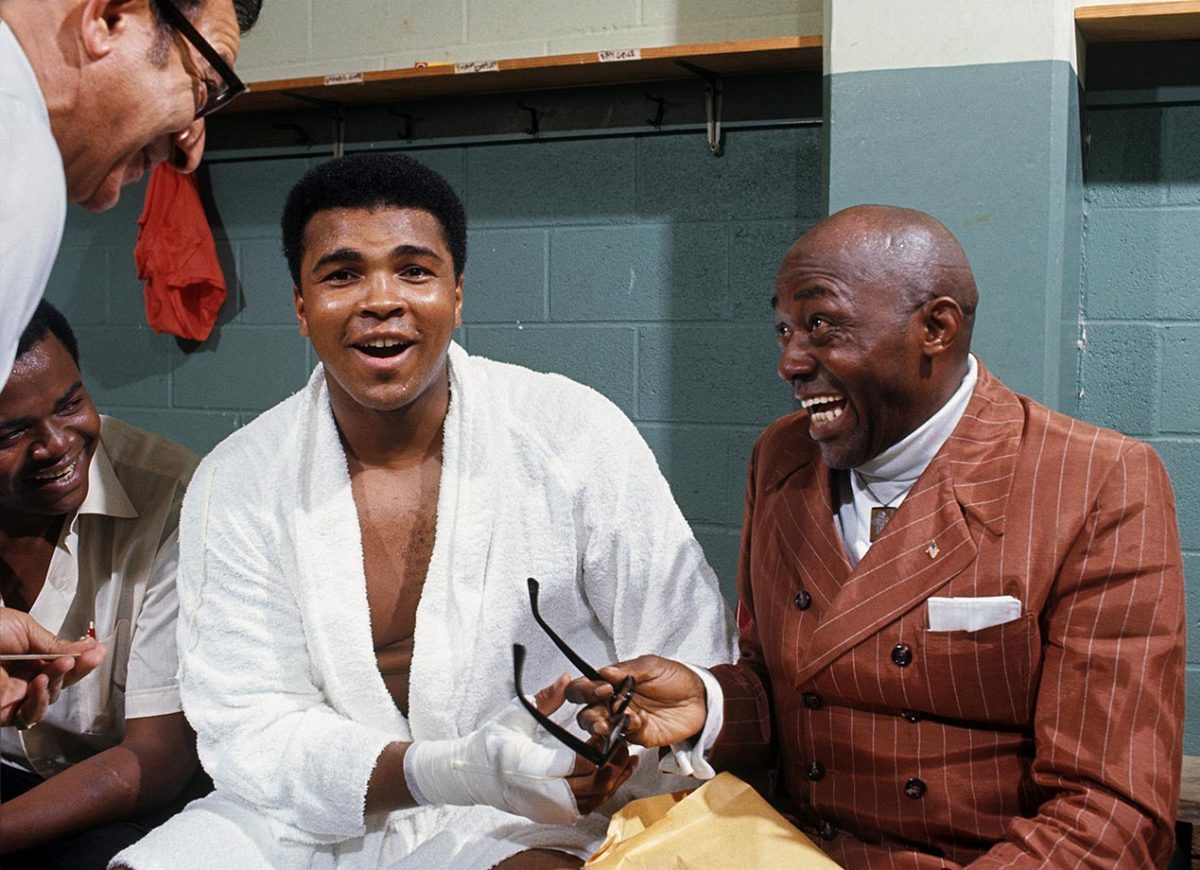
In professional exile for three and a half years because of his draft case, Ali sought to return to boxing in 1970. He began with a night of exhibition bouts at Morehouse College in Atlanta, where before going into the ring, he shared a locker room laugh with actor and comedian Lincoln Perry (right), better known by his stage name of Stepin Fetchit. The friendship between the two black icons would later be examined in an acclaimed play by Will Power, Fetch Clay, Make Man.
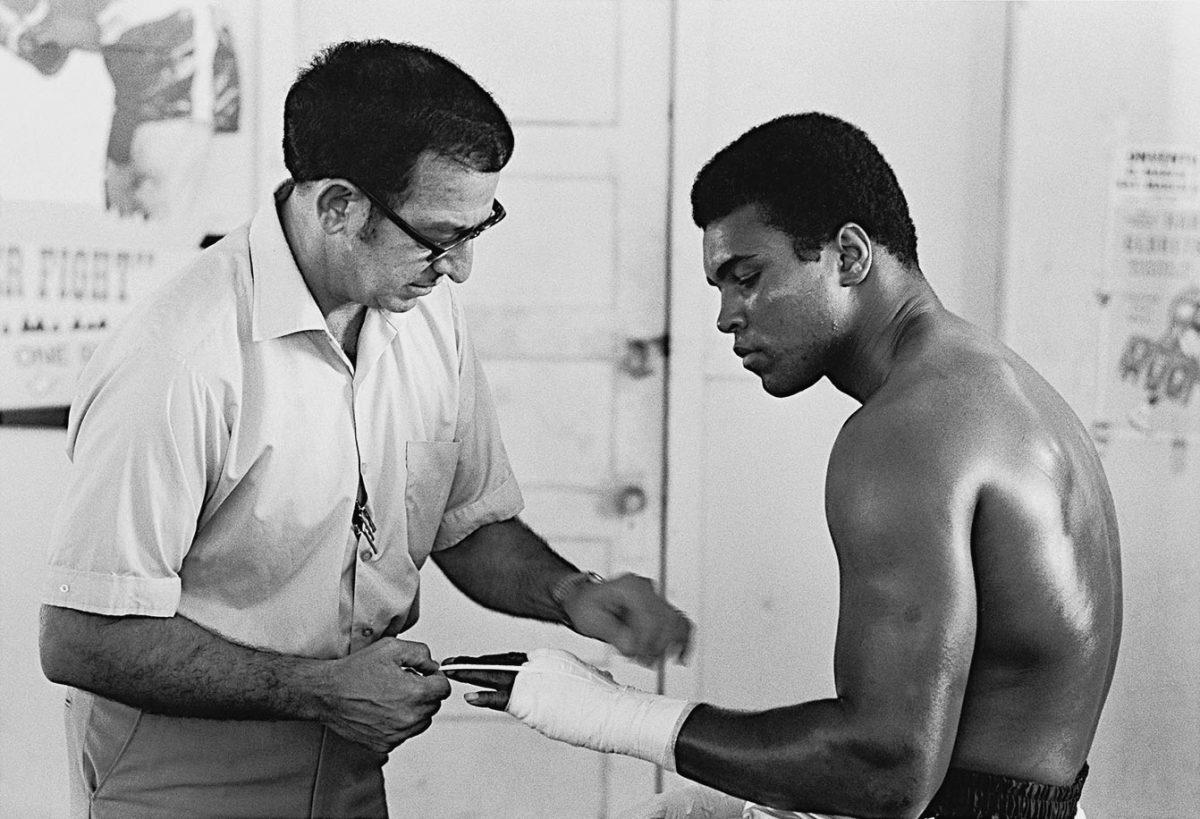
After the Atlanta Athletic Commission at last granted Ali a license, the deposed champion went back into serious training. He was, as ever, in the capable hands of trainer Angelo Dundee, here wrapping boxing's most famous fists at the 5th Street Gym in Miami in October 1970.
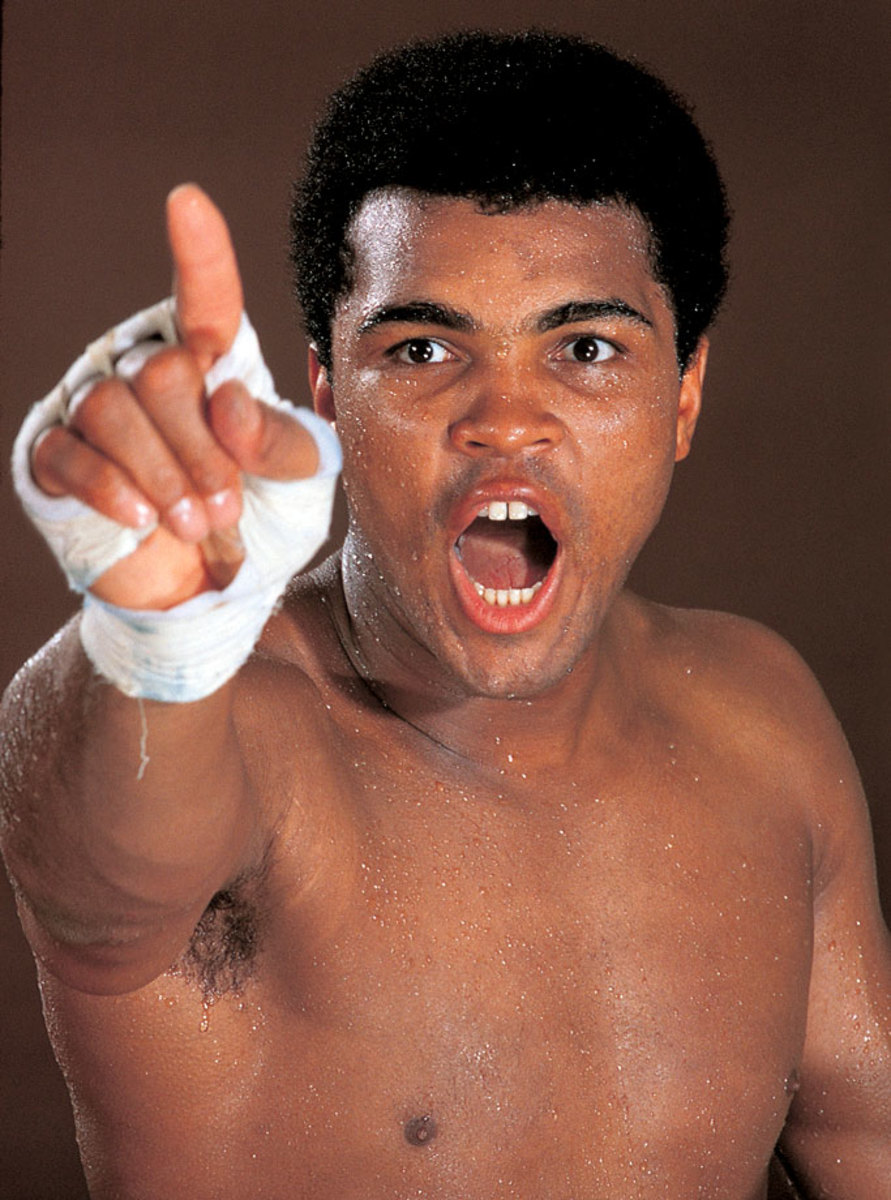
With his return to the ring scheduled for Oct. 26, 1970 in Atlanta, against dangerous contender Jerry Quarry, Ali made it clear to all who would listen that he was on a mission to reclaim the title that had been stripped of him.
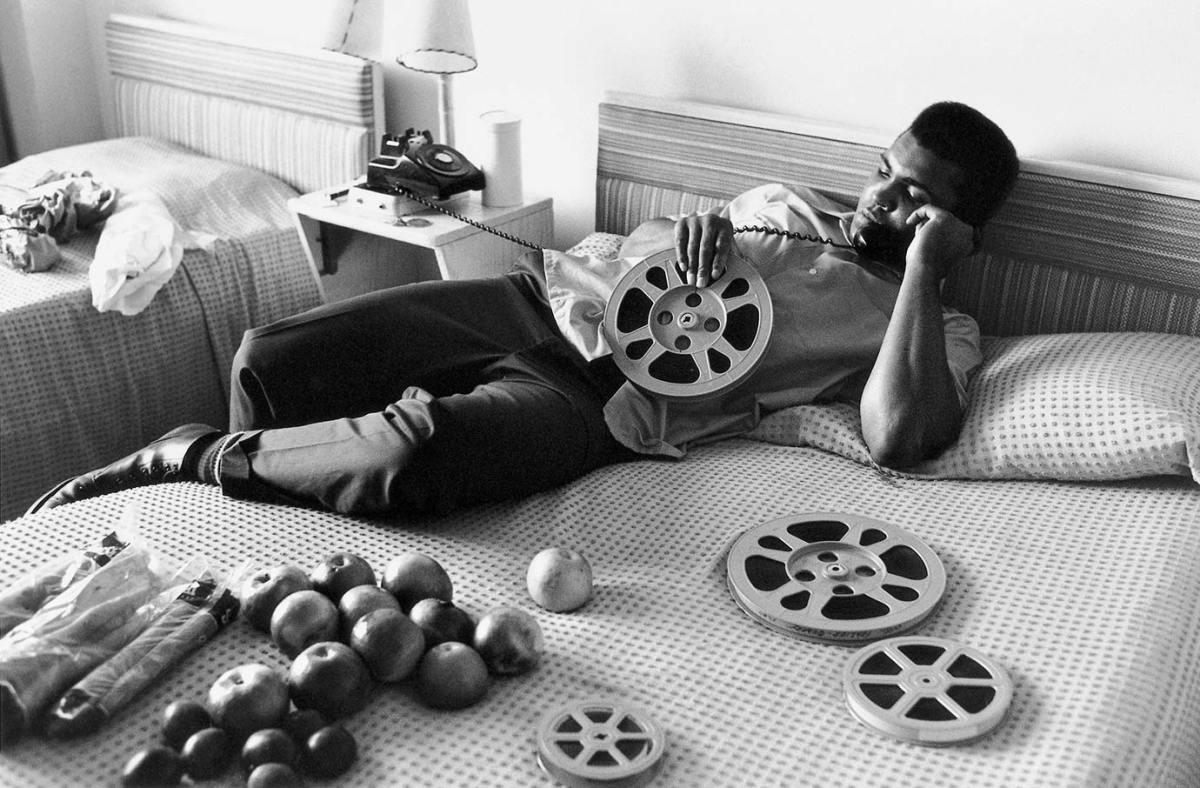
Reel to spiel: For the ever-loquacious Ali, even a rare moment of down time — like this afternoon in 1970 in a Miami hotel room — was a chance to do some talking.
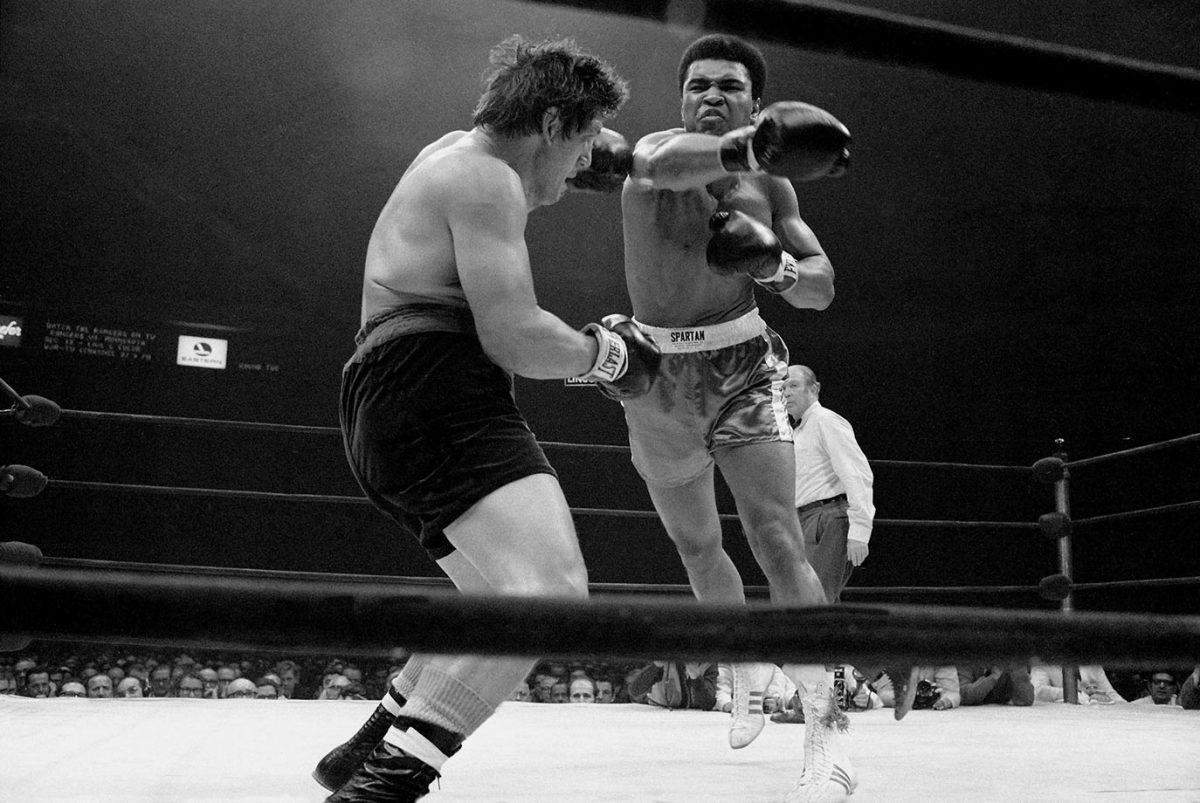
Despite Ali's long layoff, his comeback campaign would include no easy tune-up bouts. He stopped Quarry in three rounds on Oct. 26, 1970, then, just six weeks later — an unthinkably short interlude by today's standards — took on Argentine contender Oscar Bonavena in Madison Square Garden. Here, Ali fires a right at the rugged and awkward Bonavena, who took the fight to the former champion all night.
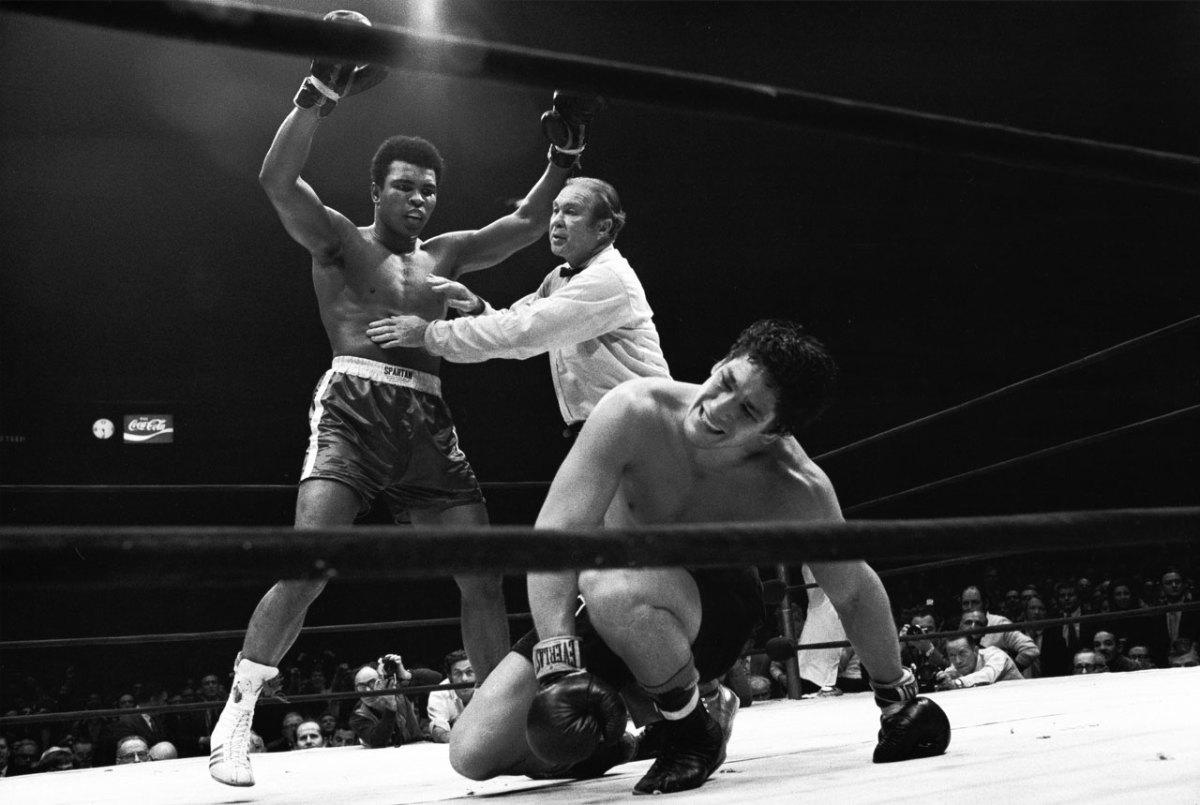
After a long, often sloppy bout, Ali — here being held back by referee Mark Conn — produced one of the most dramatic finishes of his career, dropping Bonavena three times in the 15th and final round to automatically end the fight. The win cleared the way for a showdown with Joe Frazier, the man who had taken the heavyweight title in Ali's absence.
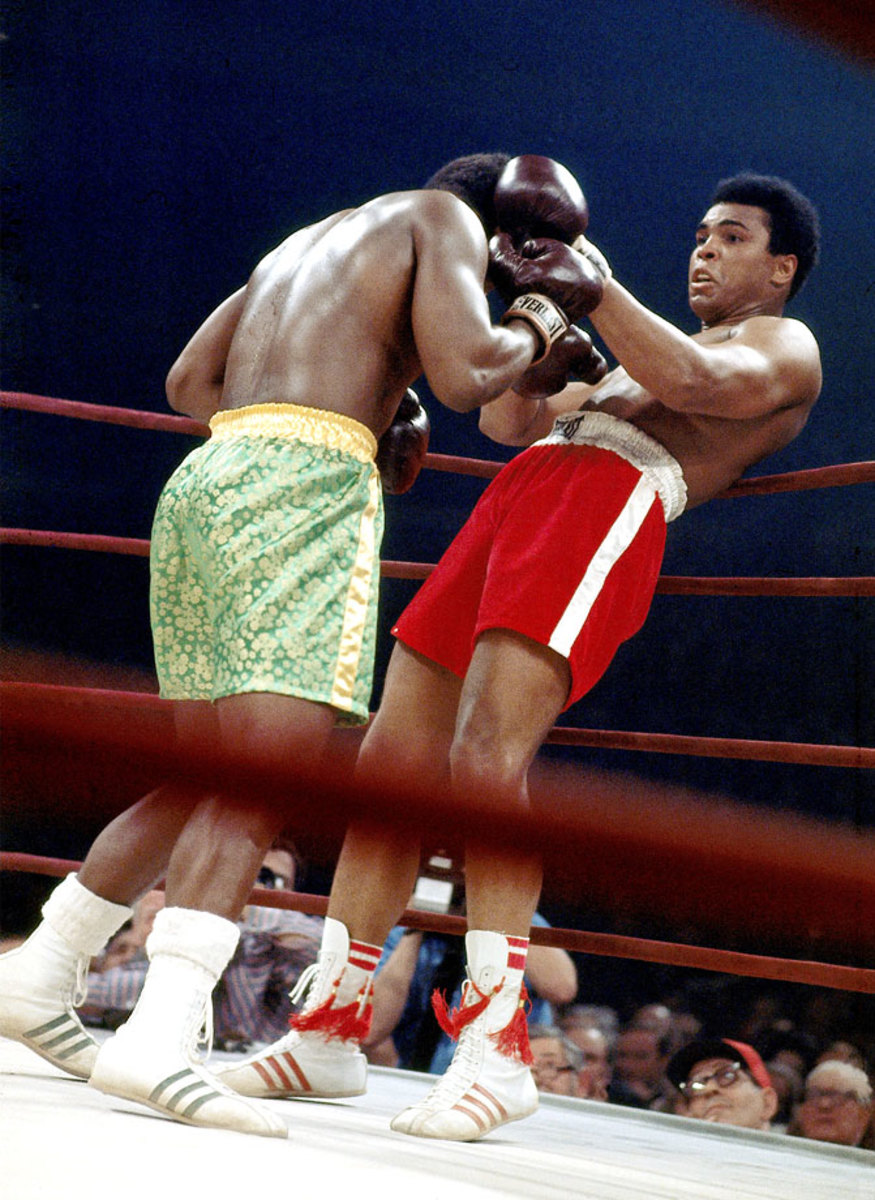
On the night of March 8, 1971, the eyes of the world were on a square patch of white canvas in the center of Madison Square Garden. There, Ali and Joe Frazier met in what was billed at the time simply as The Fight, but has come to be known, justifiably, as the Fight of the Century. For 15 rounds the two undefeated heavyweights battled at a furious pace, with each man sustaining tremendous punishment. In the end Frazier prevailed, dropping Ali in the final round with a tremendous left hook to seal a unanimous decision and hand The Greatest his first loss in 32 professional fights.
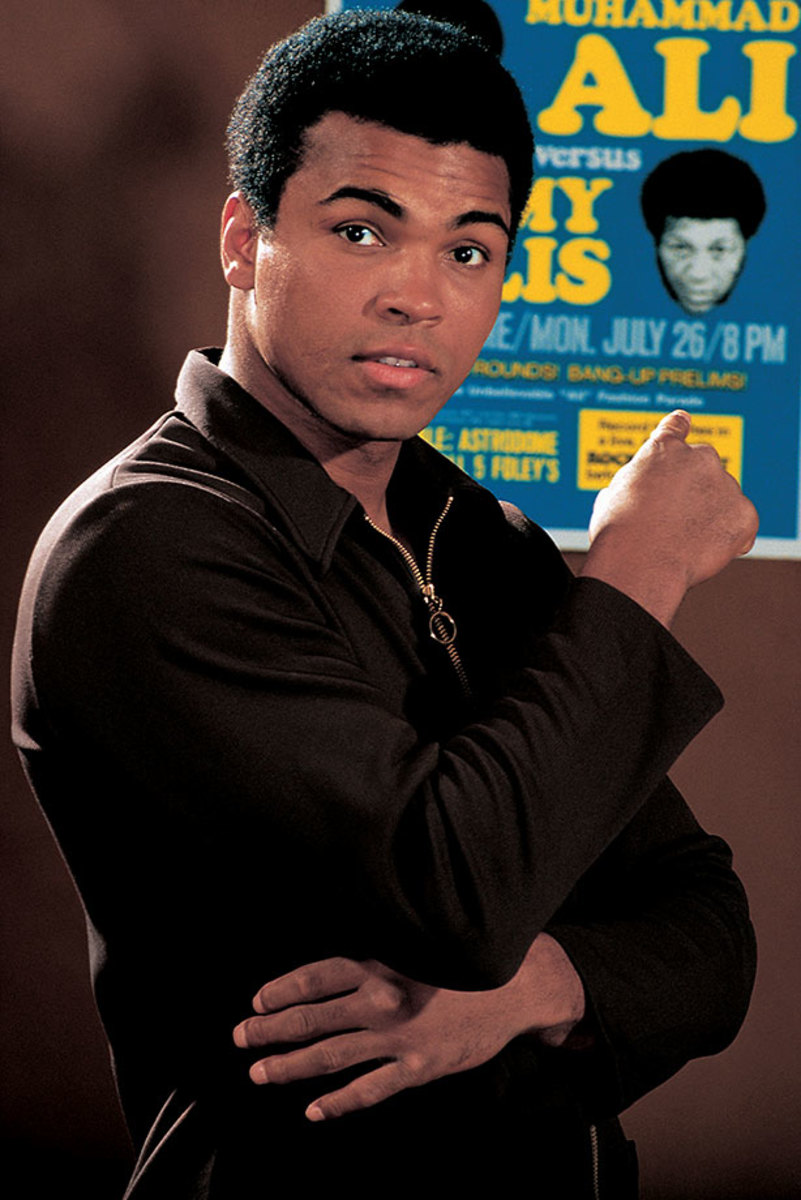
Ali poses with the fight poster for his upcoming fight against Jimmy Ellis during a photo shoot in July 1971. Ellis was an old friend of Ali's — both were trained by Angelo Dundee — and knew his fighting style well from many rounds of sparring.
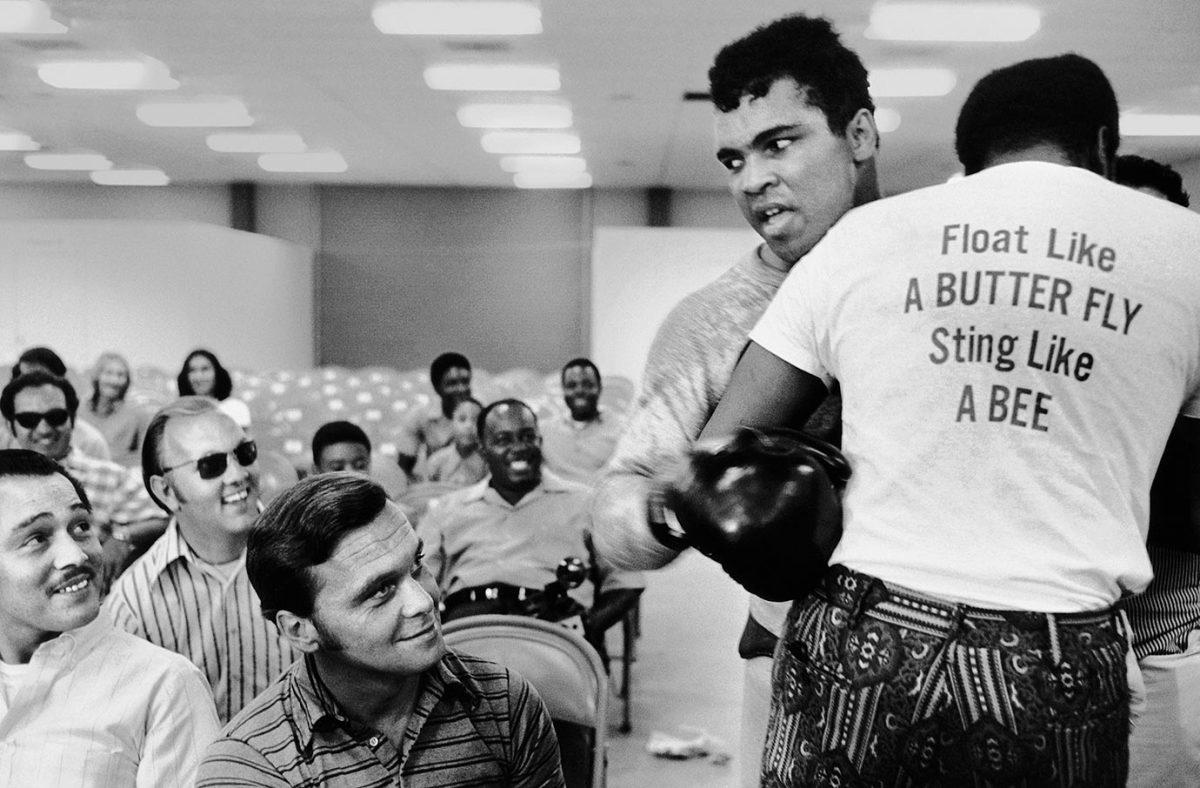
For those sportswriters lucky enough to cover Ali on a regular basis, each day brought surprises and, more often than not, plenty of laughs. of Trainer Drew Bundini Brown helps Ali train for his fight against Ellis. Ali won the bout by technical knockout in the 12th round to claim the vacant NABF heavyweight title.
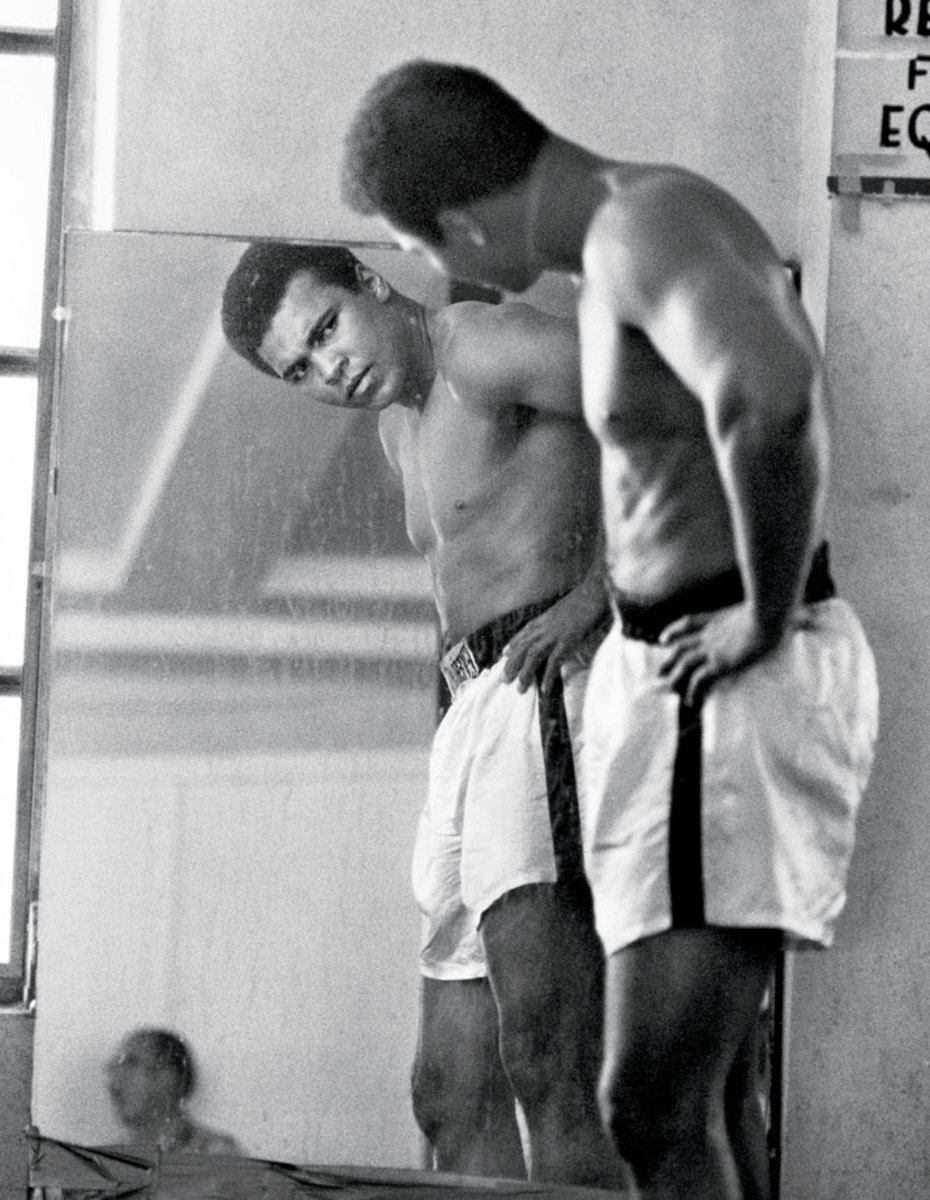
The man in the mirror stares back as Ali examines himself while training for a fight in 1972. He won all six of his fights that year.

The Louisville Lip stands next to George Foreman before Ali's fight versus Jerry Quarry in June 1972. Ali won by technical knockout in the seventh round. Foreman at the time was 36-0. Ali would not get his shot against Foreman for more than two years.
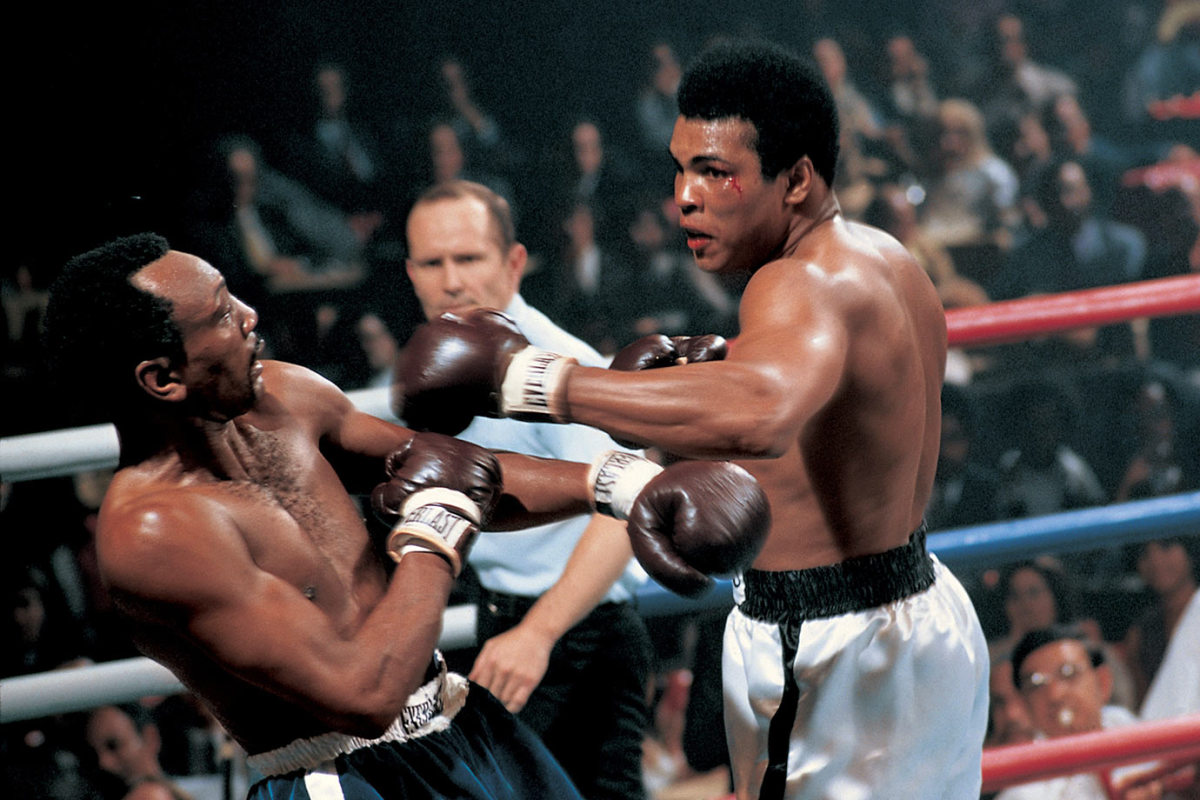
Ali throws a left hook at Bob Foster in their 1972 fight at Stateline, Nev. Although Ali knocked Foster out, Foster did leave his mark: a cut above Ali's left eye, his first as a professional.
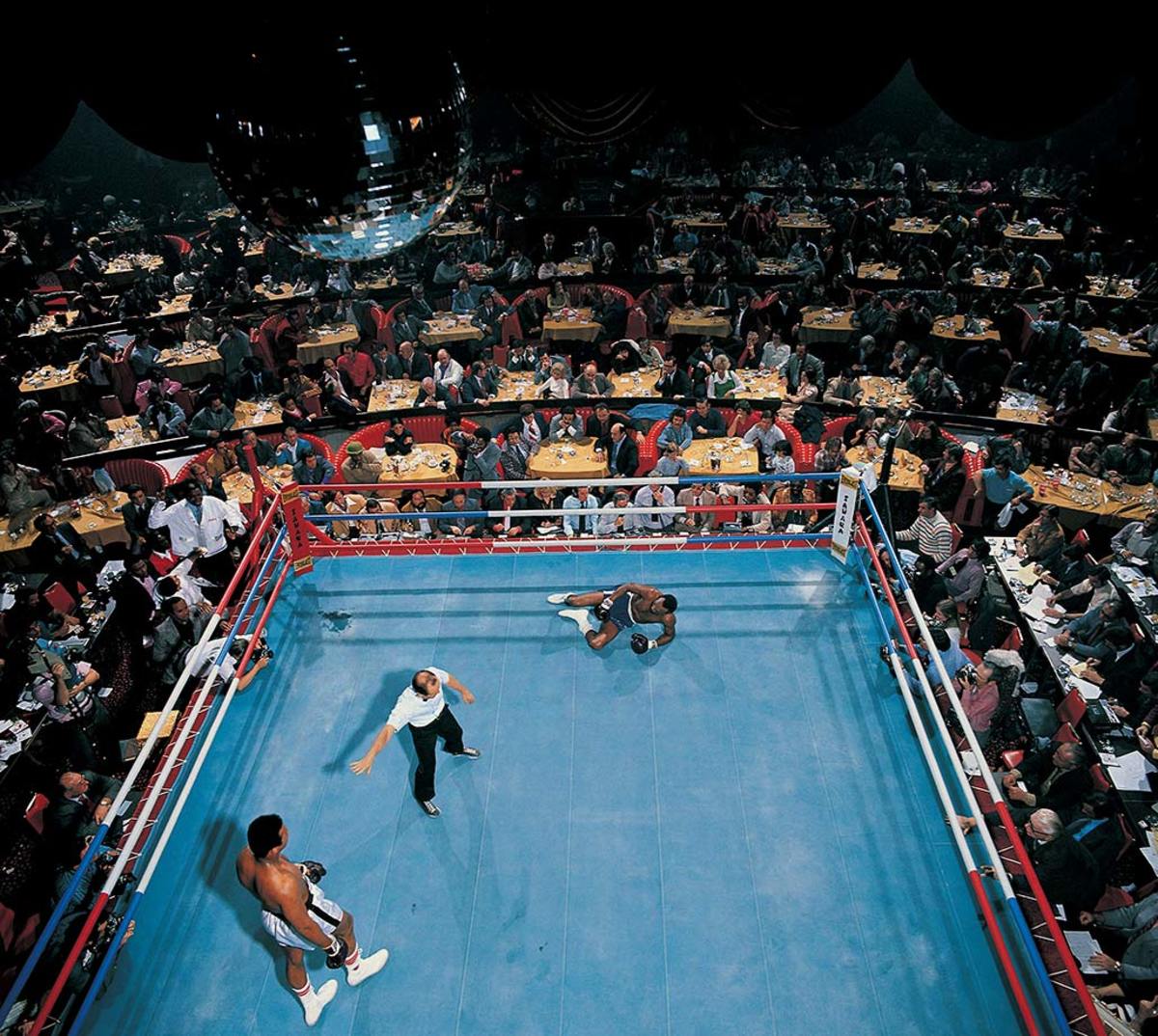
Foster lies on the canvas after getting knocked down by Ali. Ali knocked Foster down four times in the fifth round and twice more in the seventh round before he was finally counted out after Ali knocked him down again in the eighth round.
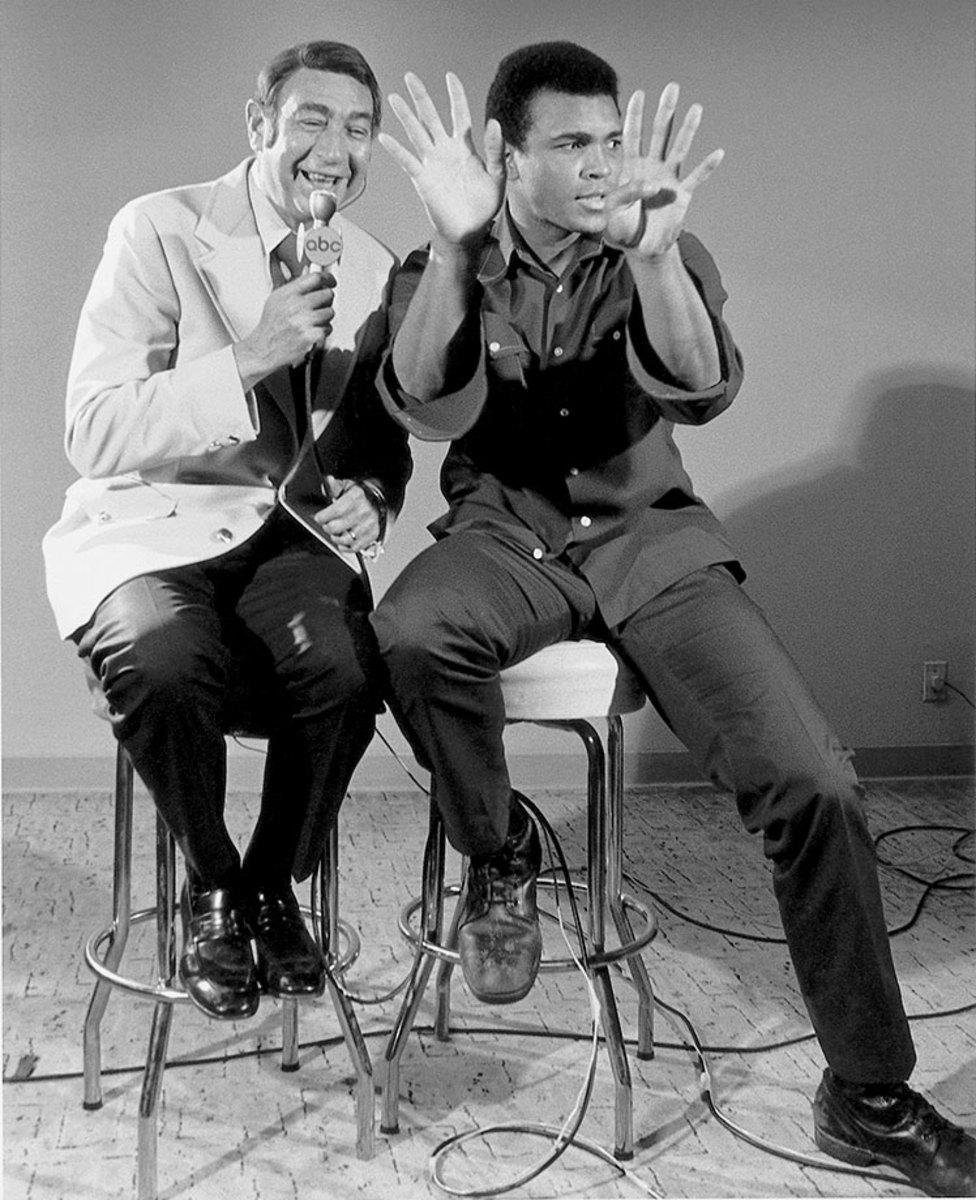
Ali sits with sportscaster Howard Cosell before his fight with Joe Bugner in February 1973. Although unable to knock Bugner out, Ali won comfortably by unanimous decision.
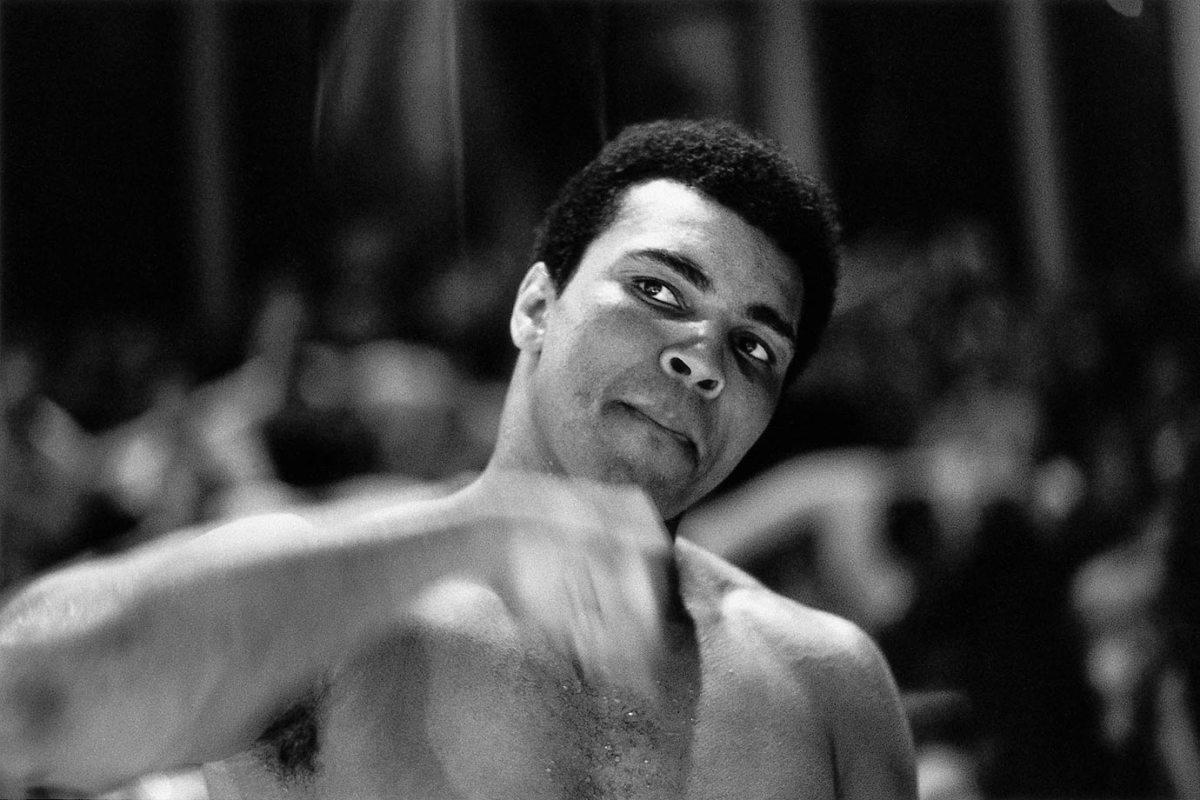
Ali hits a speed bag while warming up for his bout with Bugner in Las Vegas. Ali prepared ferociously for the fight, training 67 rounds the week leading up to the fight, including six rounds the day before the fight.
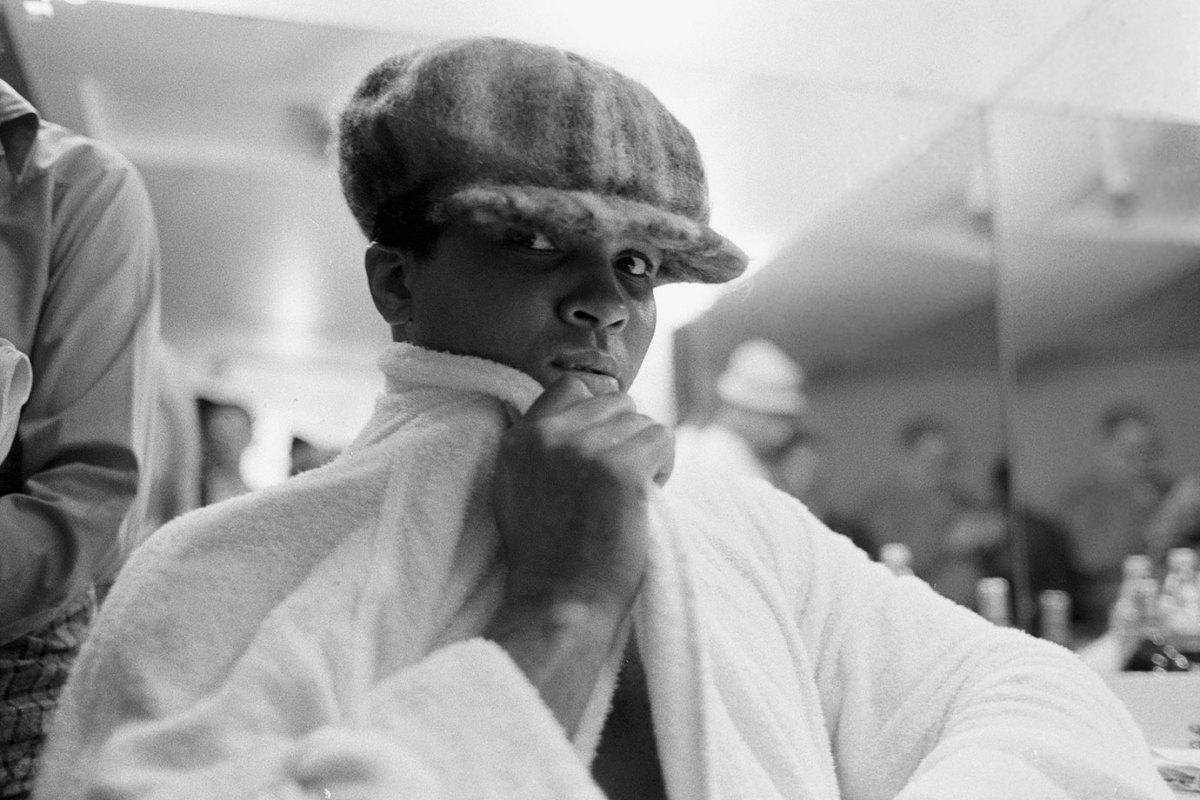
In a lighter pre-fight moment, Ali poses for a portrait wearing a hat in his dressing room before the match with Bugner.
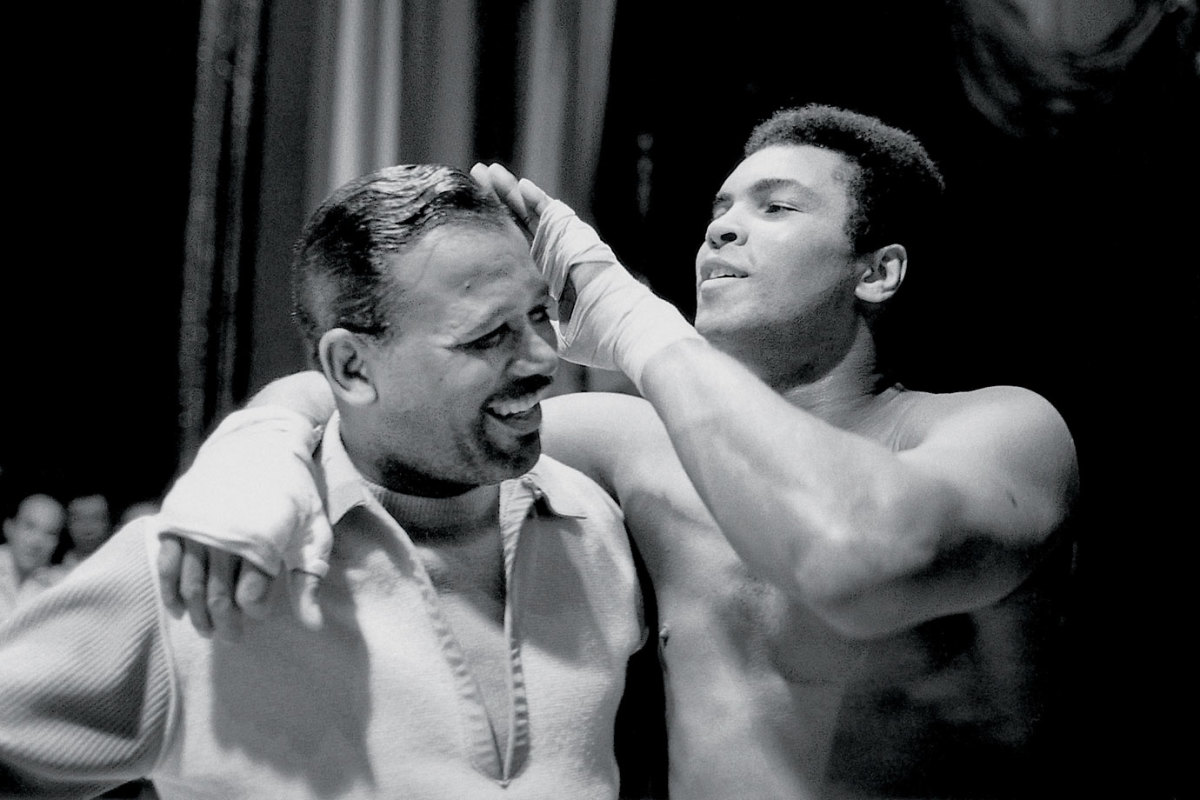
Ali plays with Sugar Ray Robinson's hair in the locker room before his bout with Bugner. The former welterweight and middleweight champion was Ali's childhood idol.
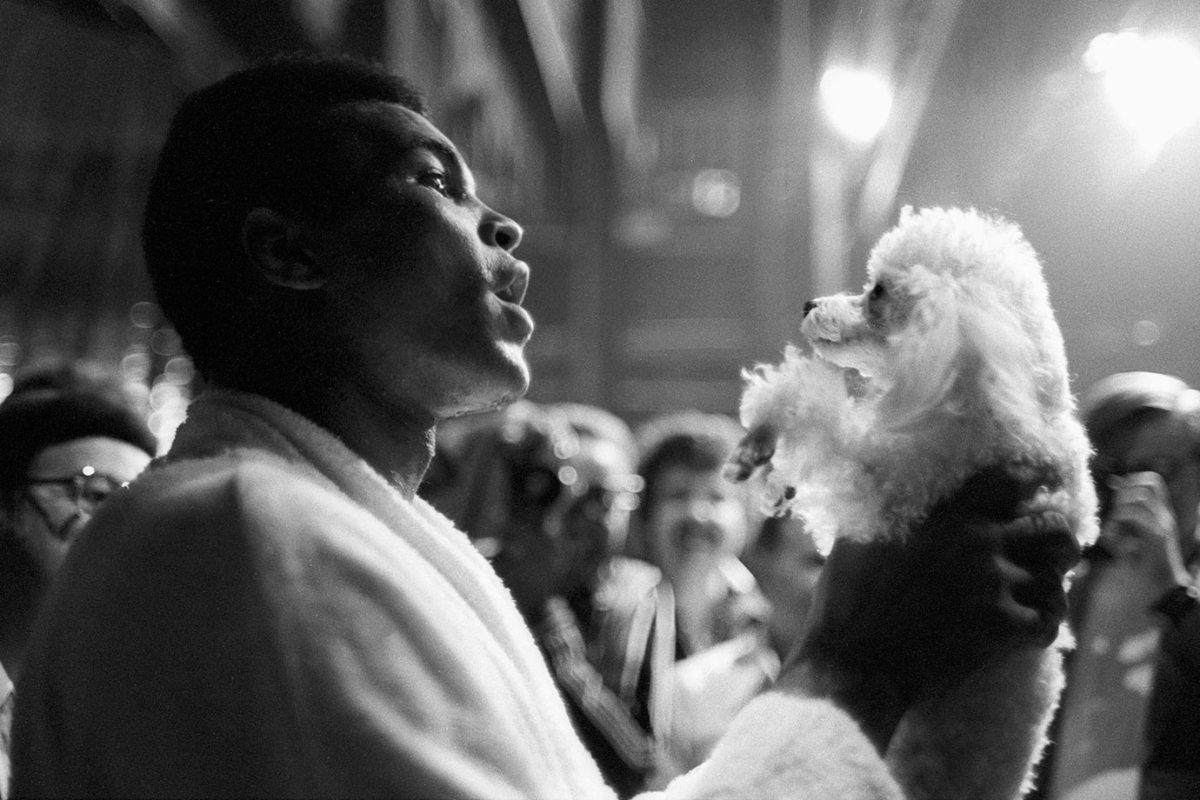
Before the fight with Bugner, Muhammad Ali enjoys a relaxed moment with a poodle at Caesars Palace Hotel. He won the fight with Bugner by unanimous decision.
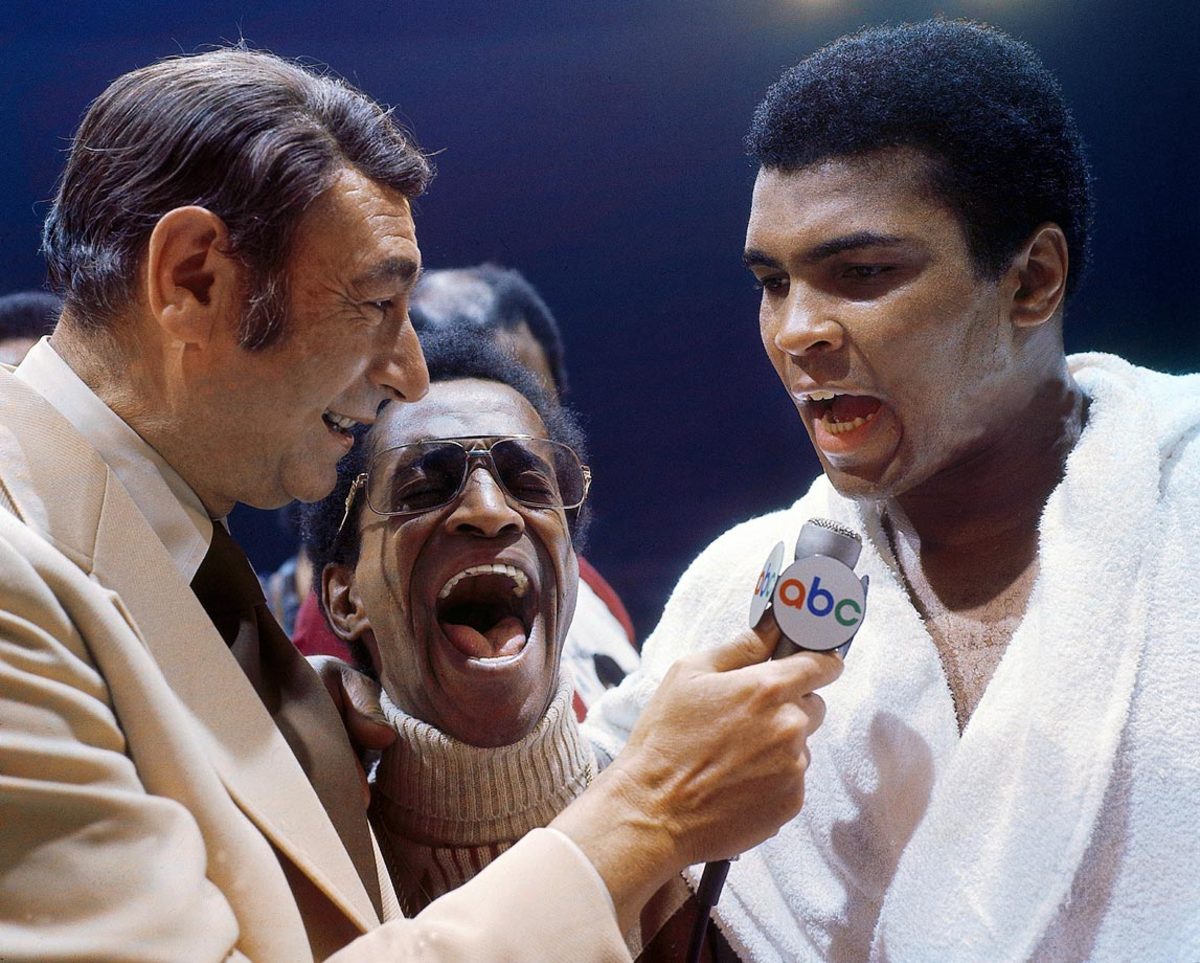
Howard Cosell interviews Ali, with entertainer Sammy Davis Jr. in the middle, after his victory over Joe Bugner by unanimous decision in. Although the fight was never in jeopardy of getting away from him, Ali praised Bugner's legs and said he could be a champion in a few years.
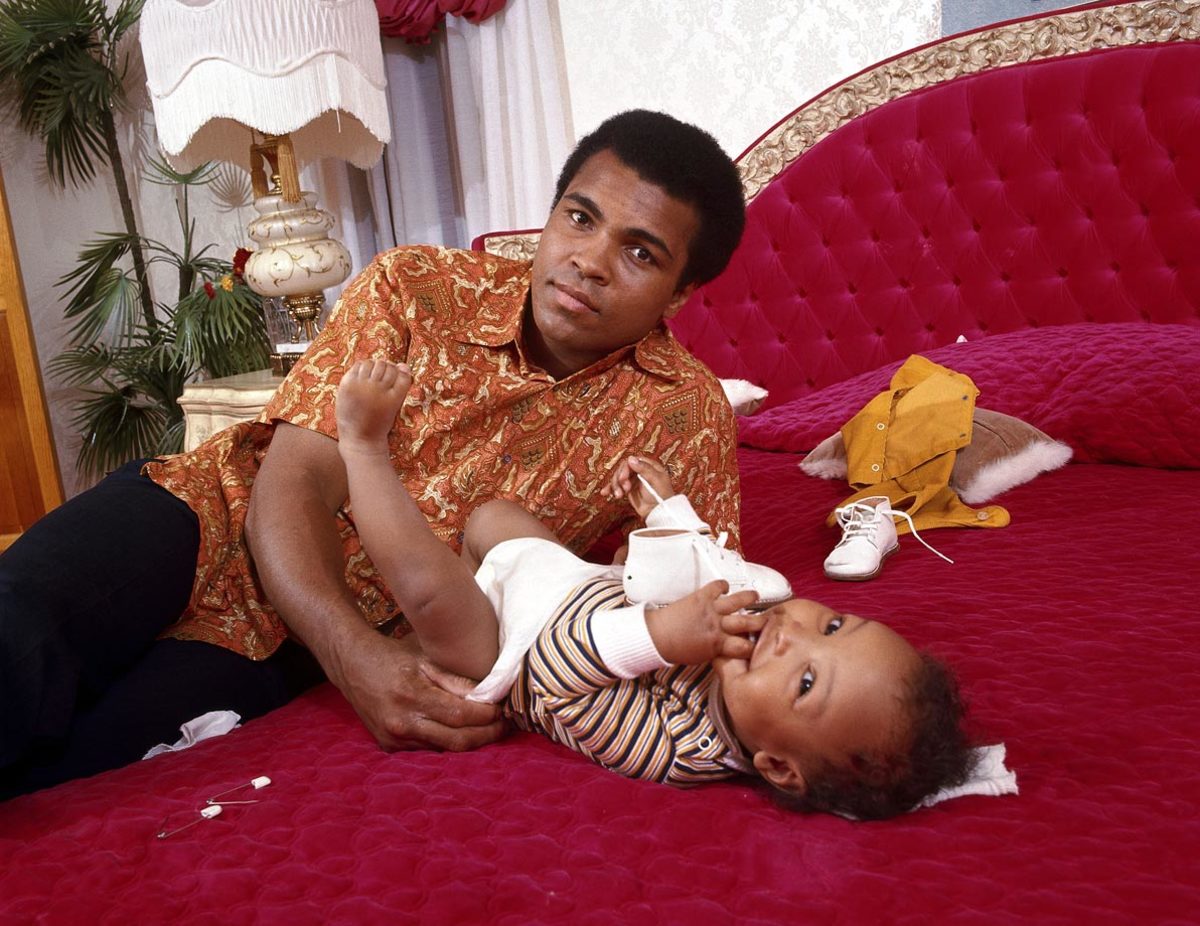
Ali changes the diaper of his son in his bedroom during a photo shoot at the family's home in April 1973. Ali had suffered a broken jaw less than a month earlier in his fight against Ken Norton.
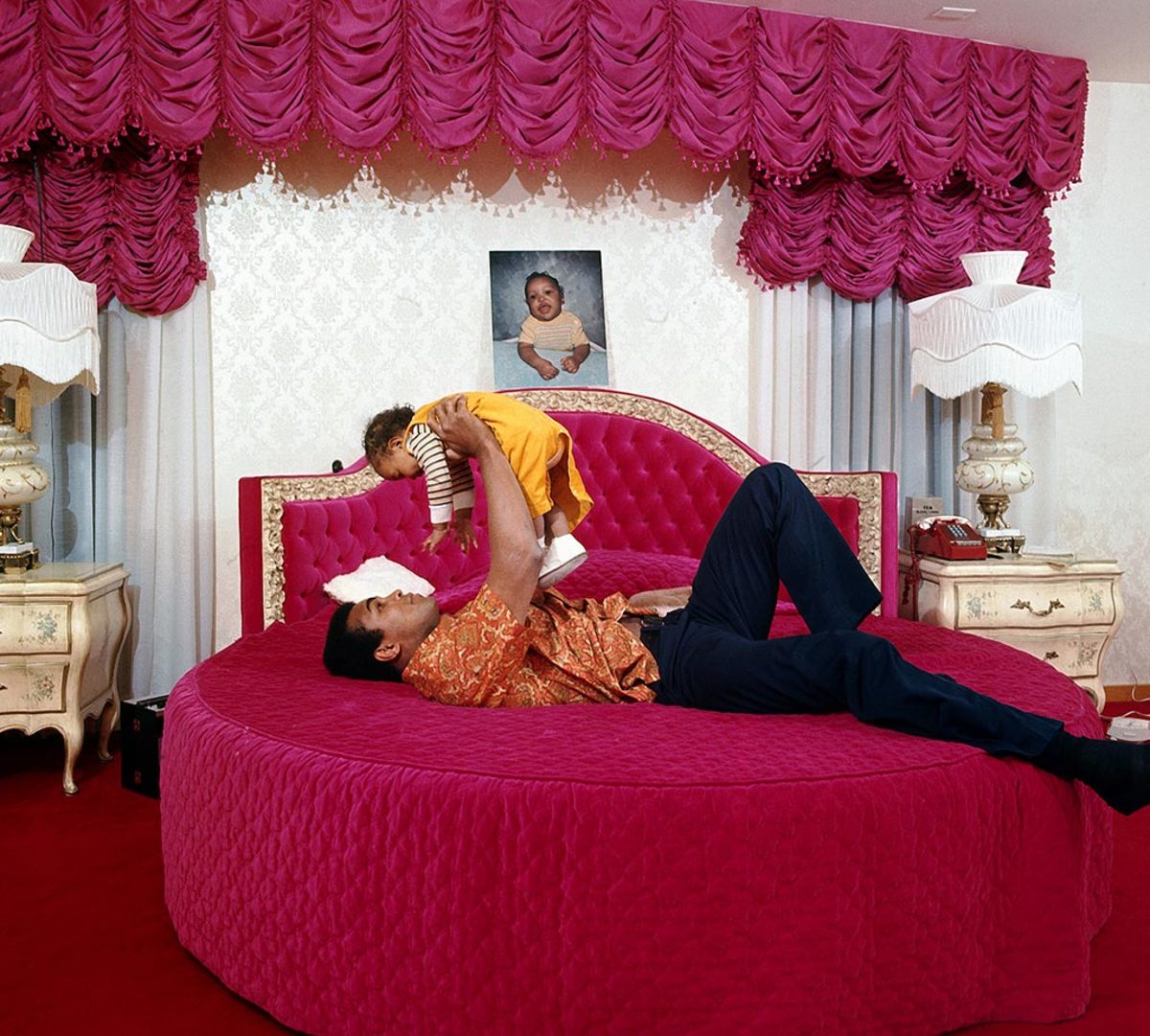
In the wake of his split decision loss to Norton, Ali plays with his son in his bedroom at home in Cherry Hill, N.J.
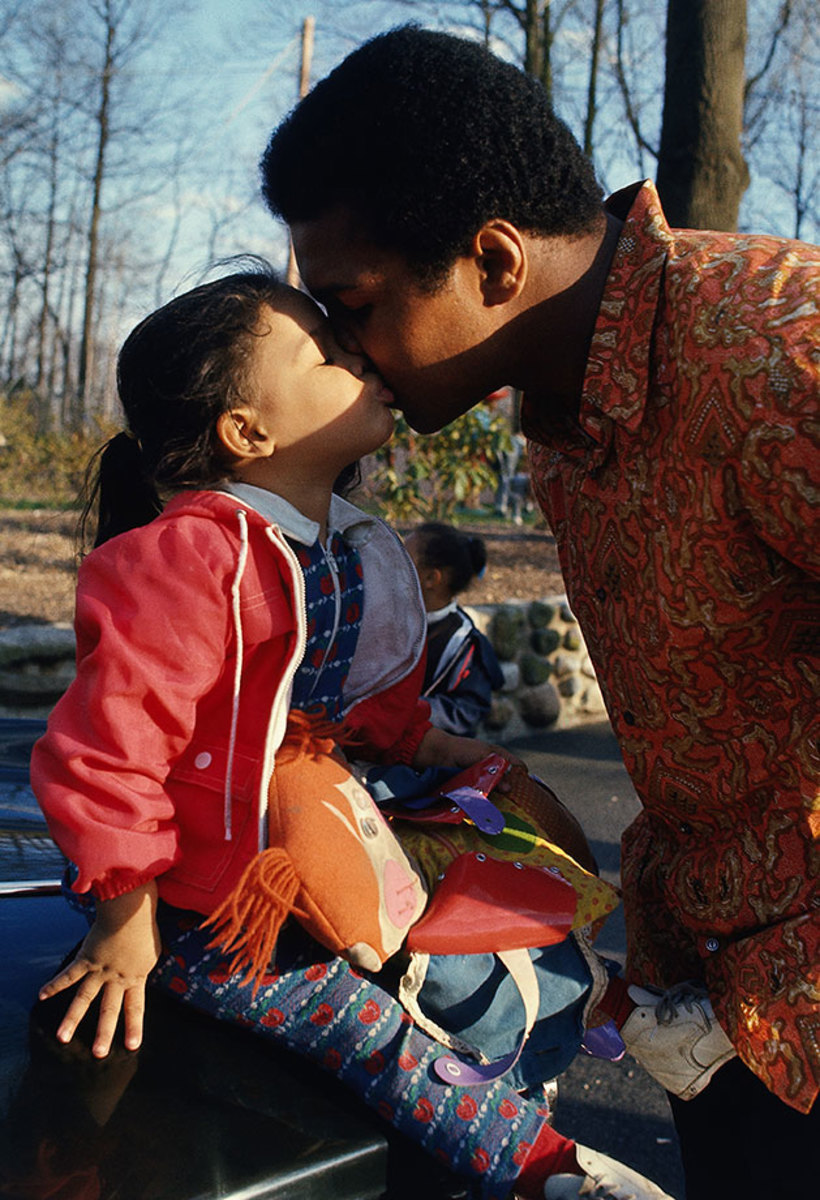
Ali kisses his daughter Jamillah outside of their home following the loss to Norton, just the second defeat of his career.
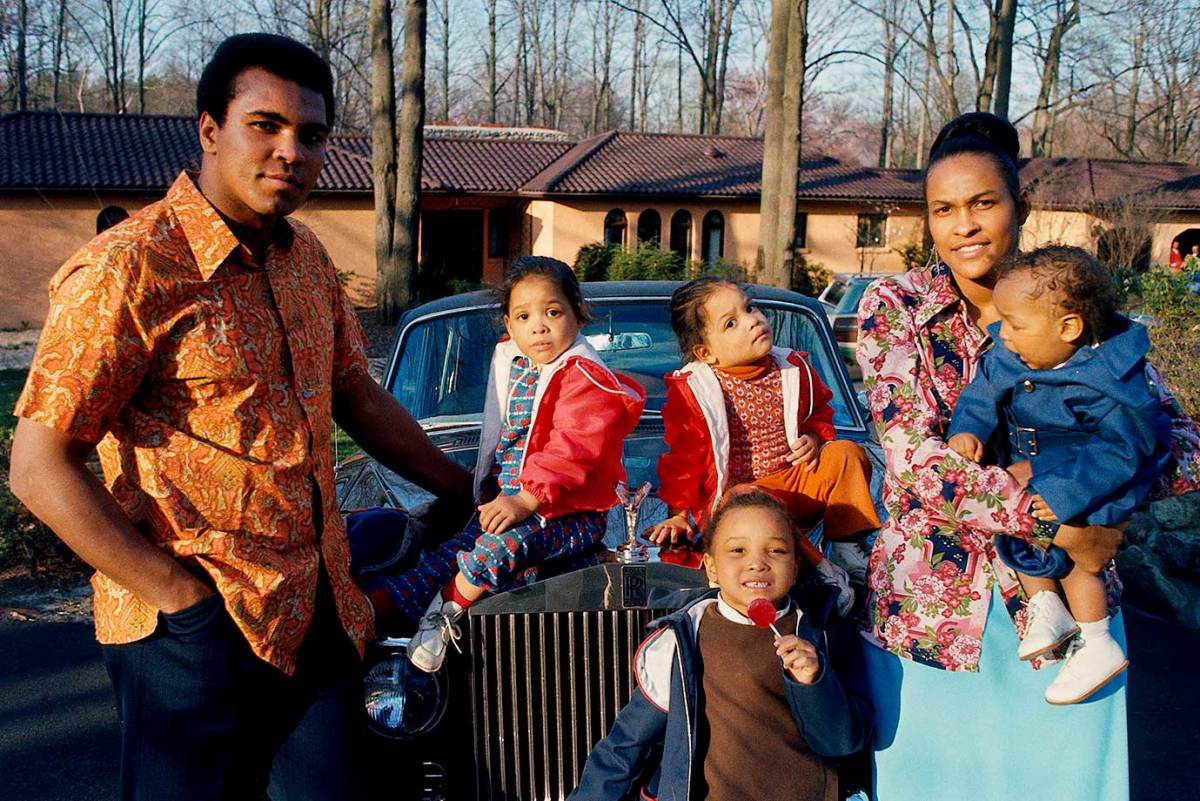
The Ali family standing outside their New Jersey home. To the right of Muhammad Ali are his twin daughters, Jamilllah and Rasheda, daughter Maryum and his wife, Khalilah, holding their son Ibn Muhammad Ali Jr.
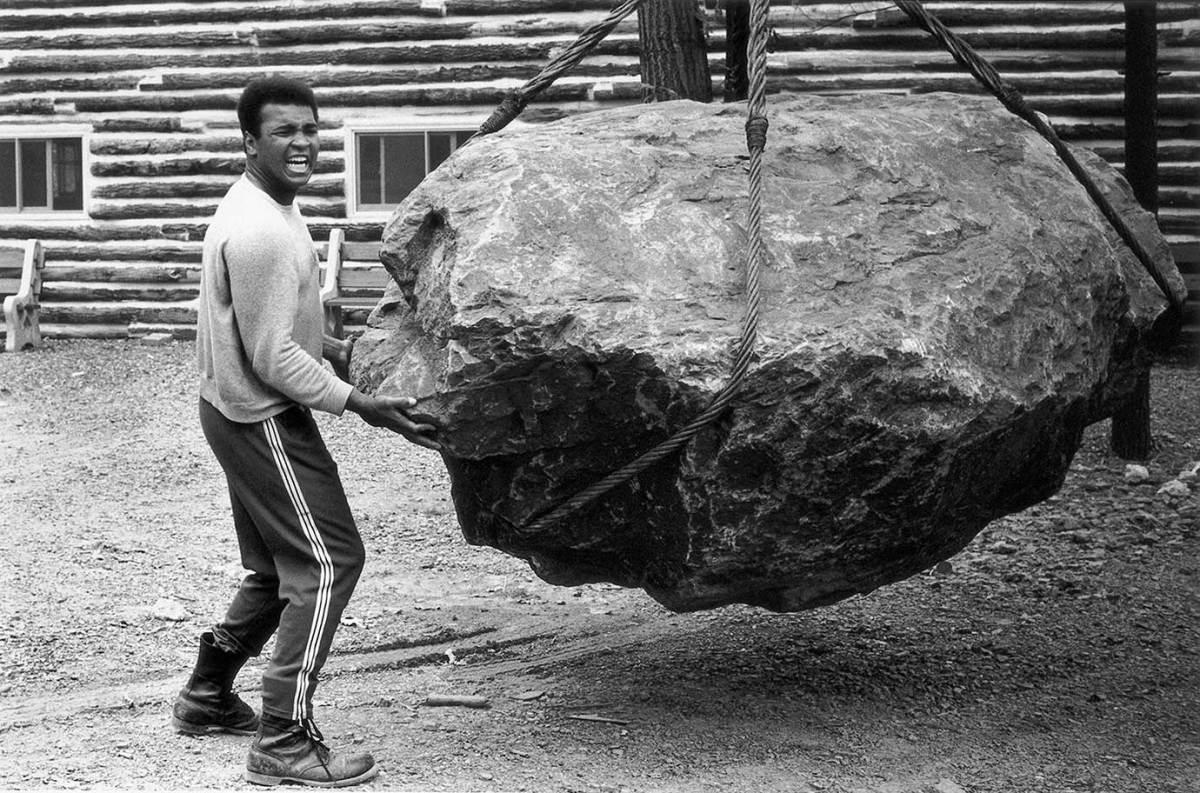
At his training camp cabin, Ali pushes a boulder during a photo shoot in Deer Lake, Penn., in August 1973. Ali was training for his rematch against Ken Norton, who broke his jaw five months earlier.
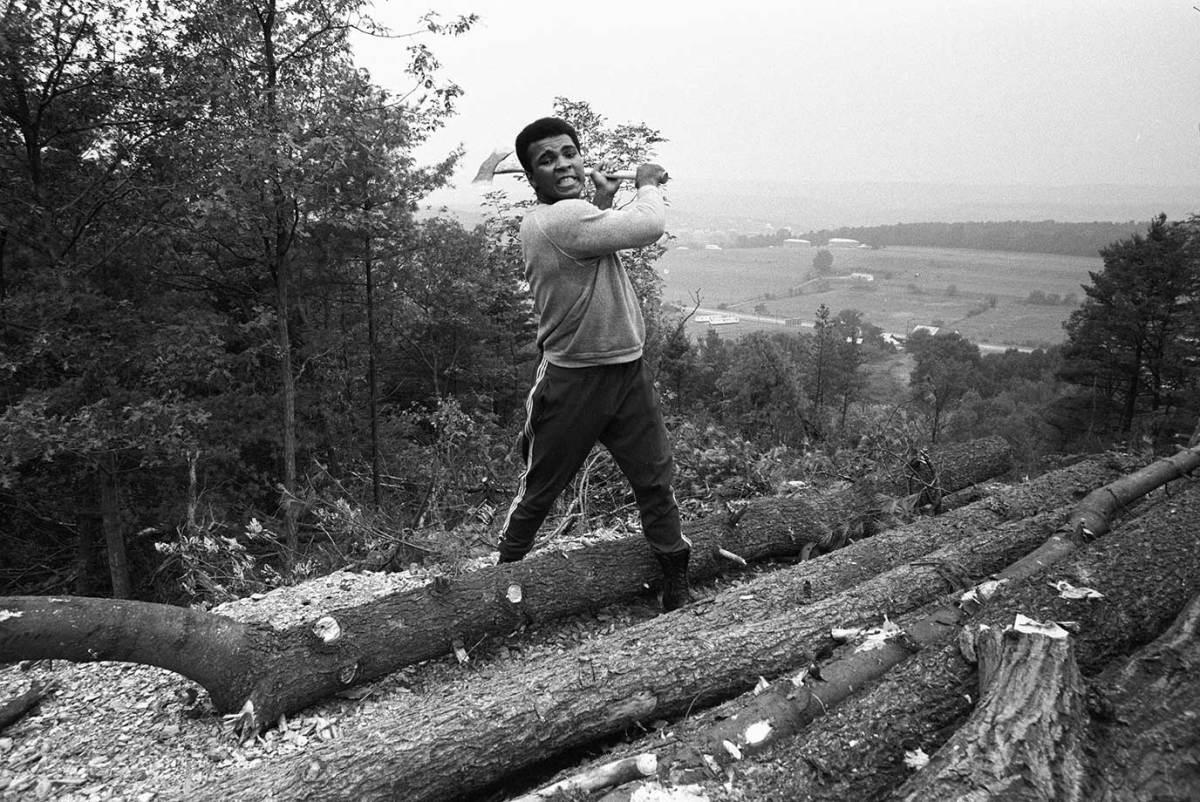
Ali chops wood at his cabin in Deer Lake. He referred to the training camp as "fighter's heaven" and used it to prepare for fights away from the spotlight.
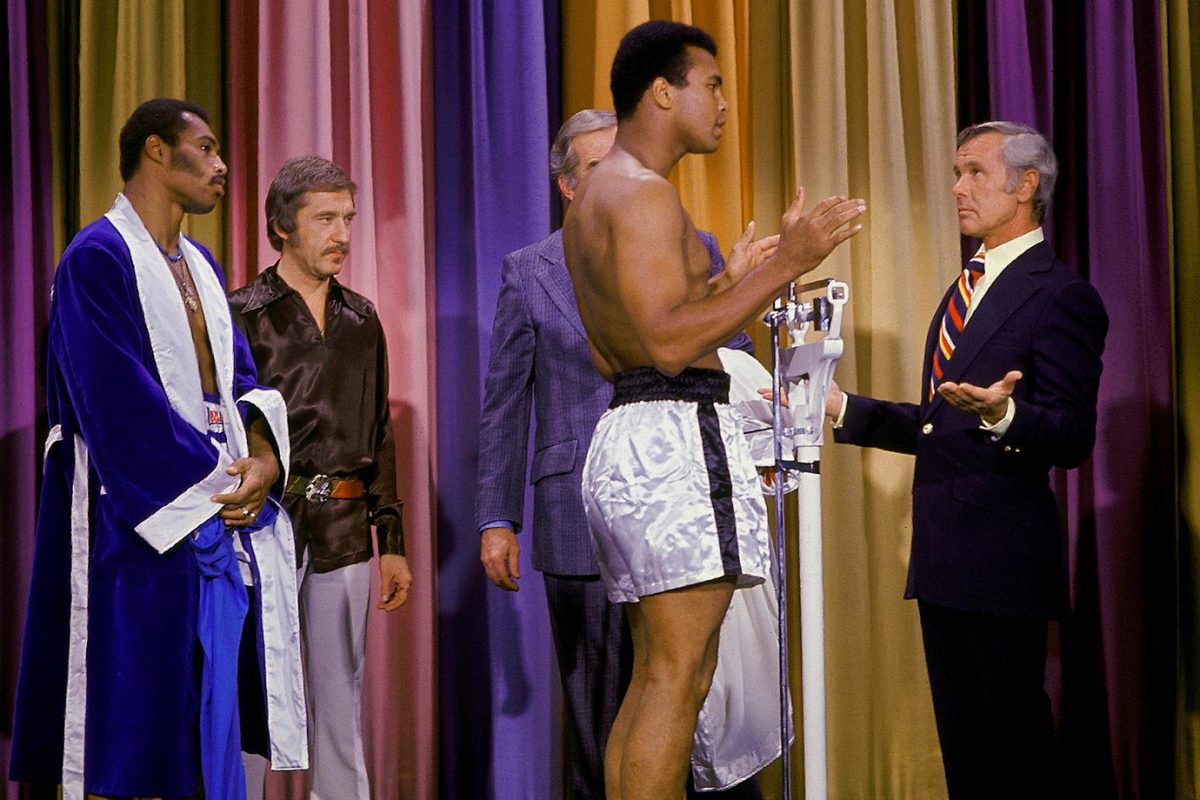
The fighters weigh in on the Tonight Show with Johnny Carson ahead of Ali and Ken Norton's September 1973 fight.
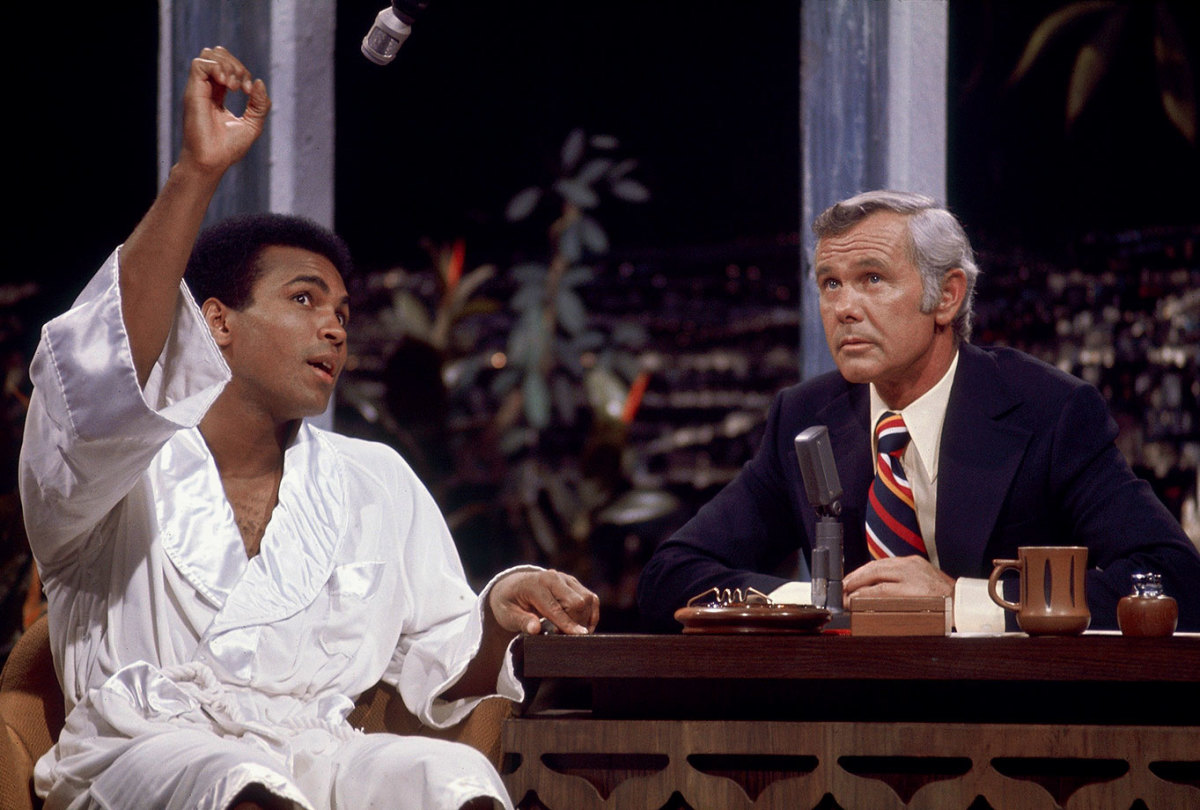
Johnny Carson listens to Ali on the Tonight Show three days before his rematch with Norton. Ali would avenge his earlier loss to Norton, winning a narrow split decision.
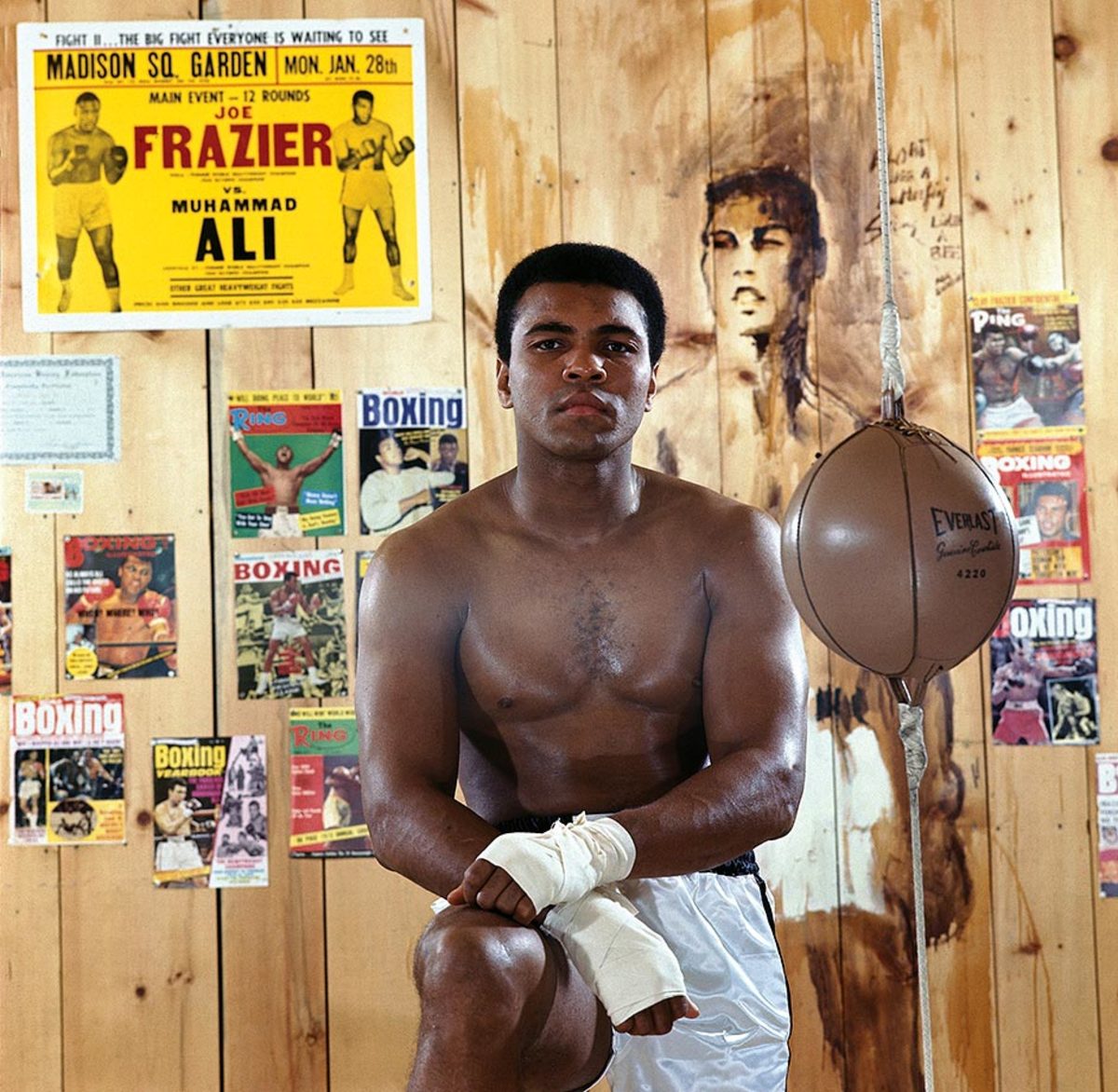
Ali poses in front of posters and magazine covers from throughout his career at his training camp cabin in Deer Lake in 1974.
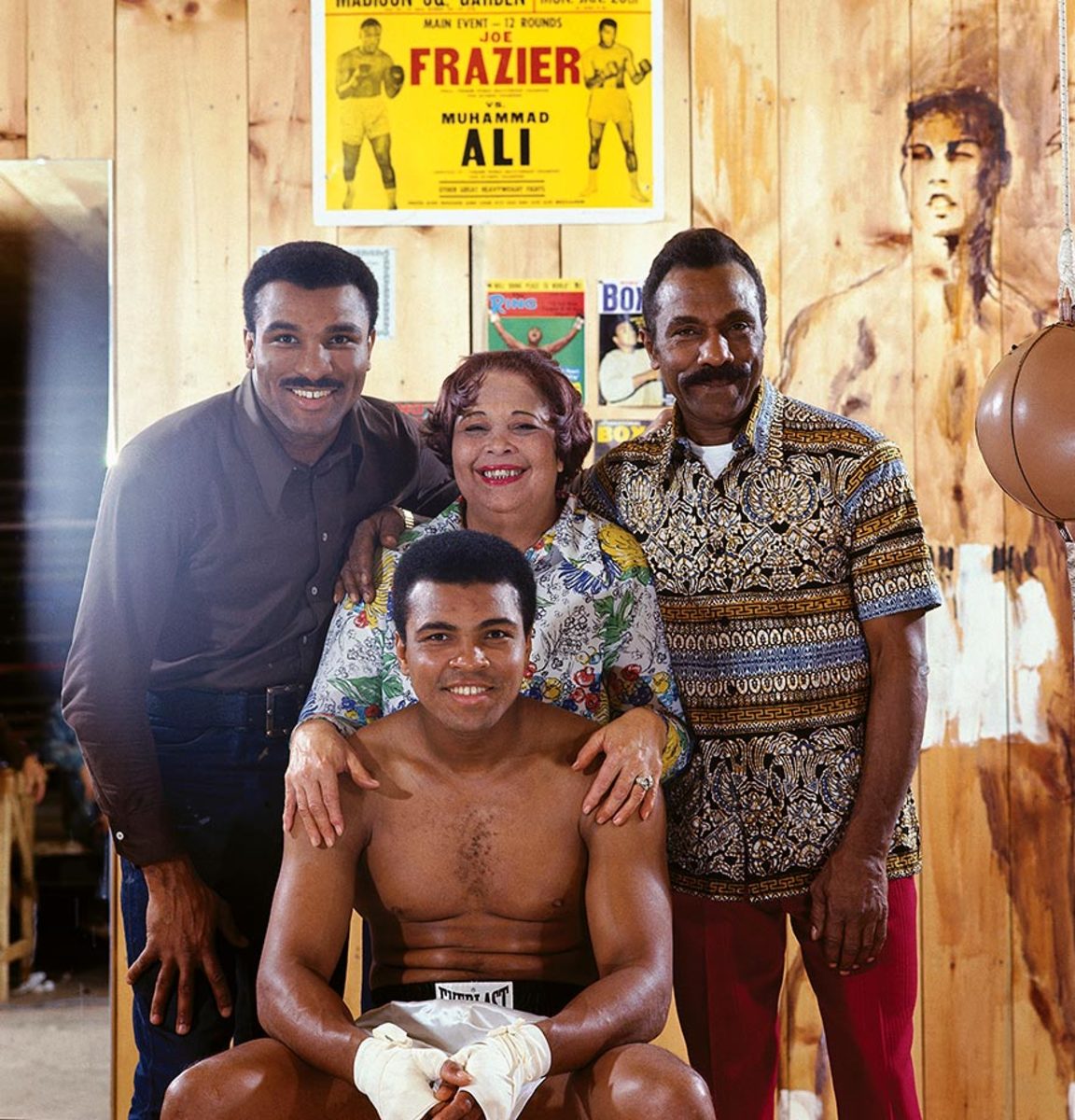
Ali poses with members of his family in front of a poster from his first fight with Joe Frazier. Ali's brother, Rahman Ali; mother, Odessa Clay; and father, Cassius Clay Sr. stand behind the boxer.
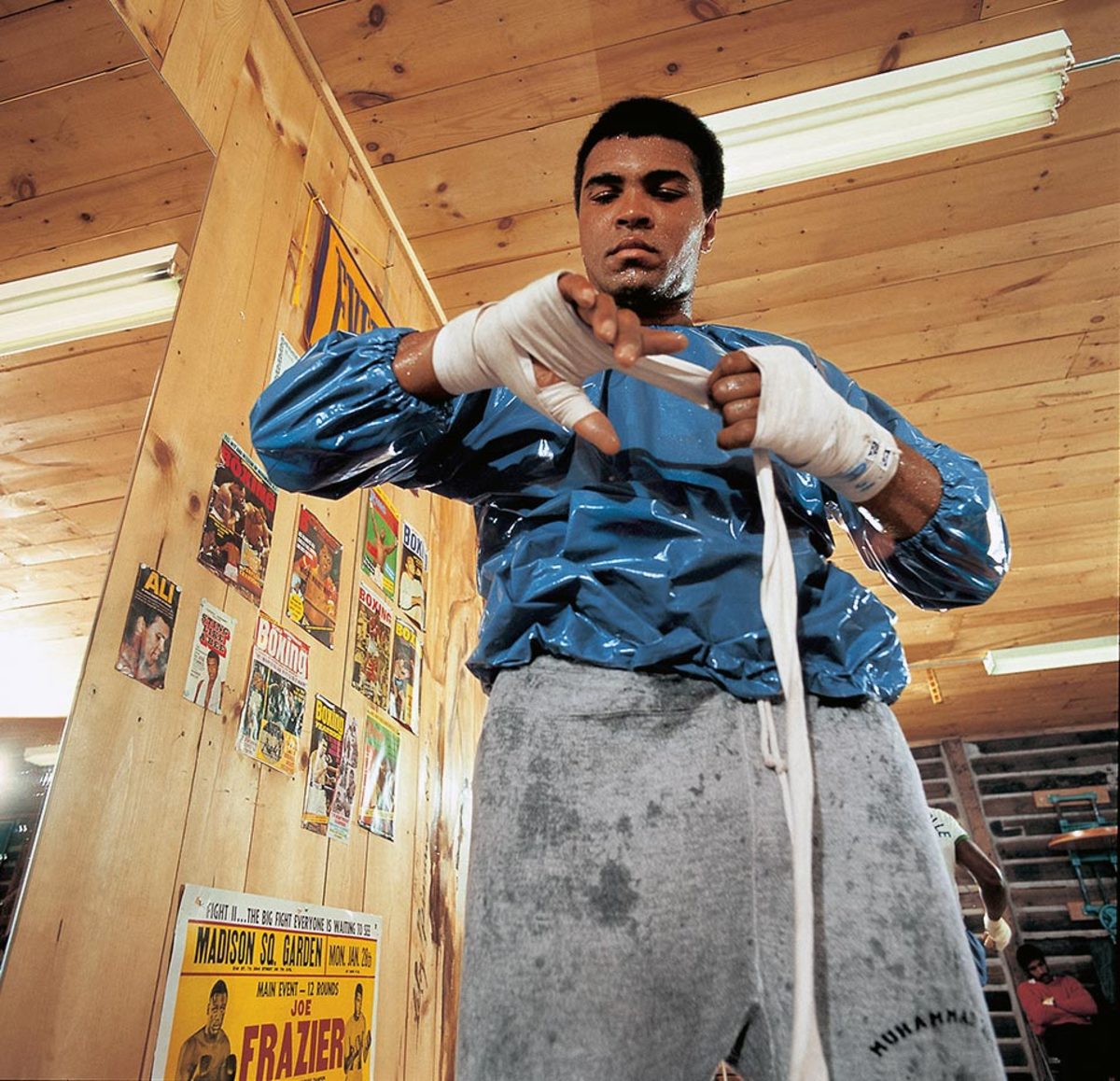
Less than three weeks before his rematch with Joe Frazier on Jan. 28, 1974, Ali wraps his hands while wearing a sauna suit at his training camp cabin.
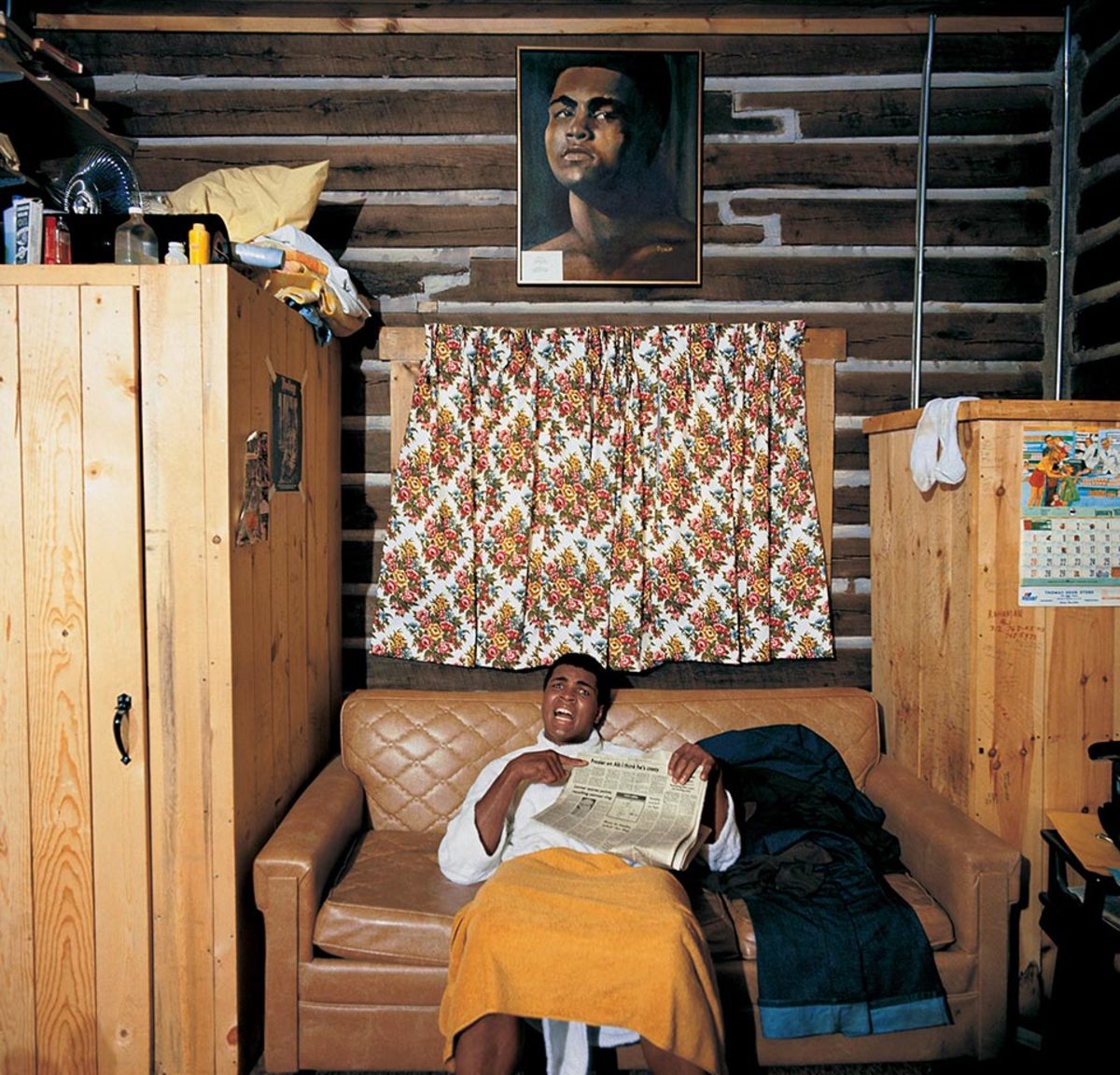
Ali holds a newspaper at his cabin in January 1974. He is pointing to a headline that reads, "Frazier On Ali, I Think He's Crazy." Ali and Frazier fought for the second time later that month with Ali winning by a unanimous decision.
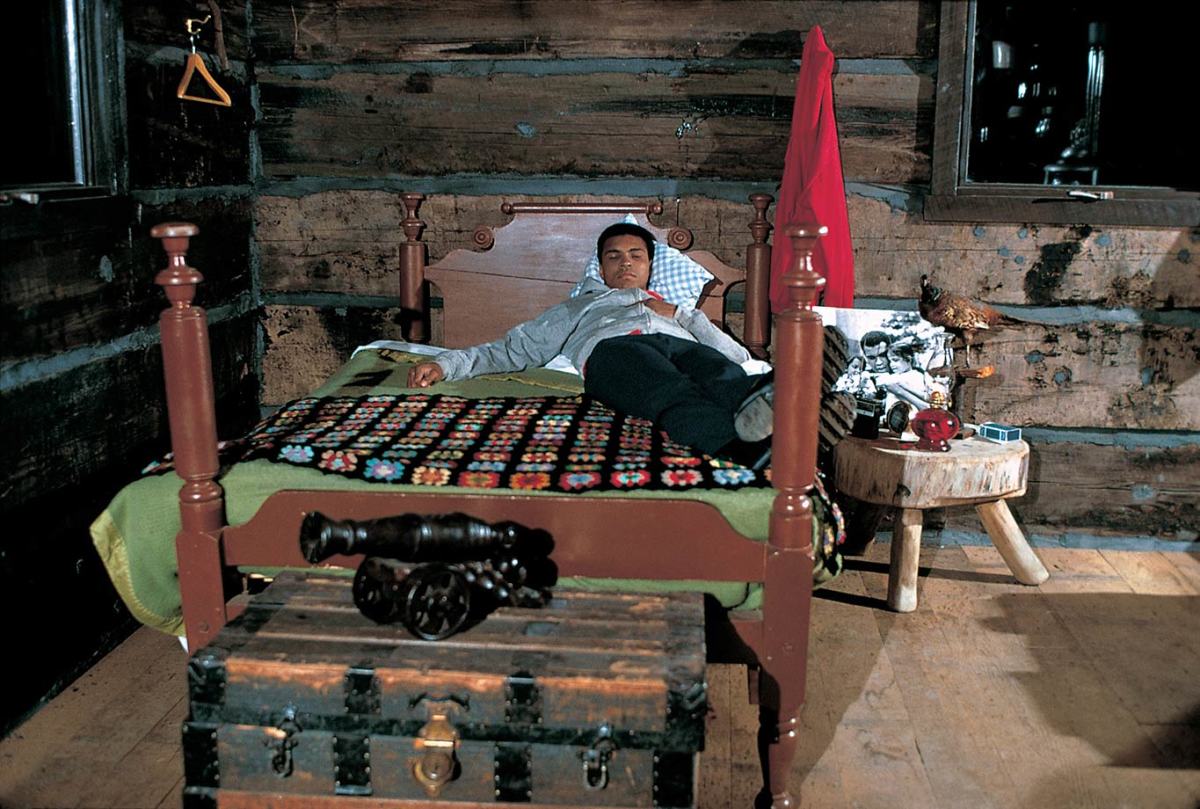
Ali lies on his bed at his cabin during the January 1974 photo shoot.
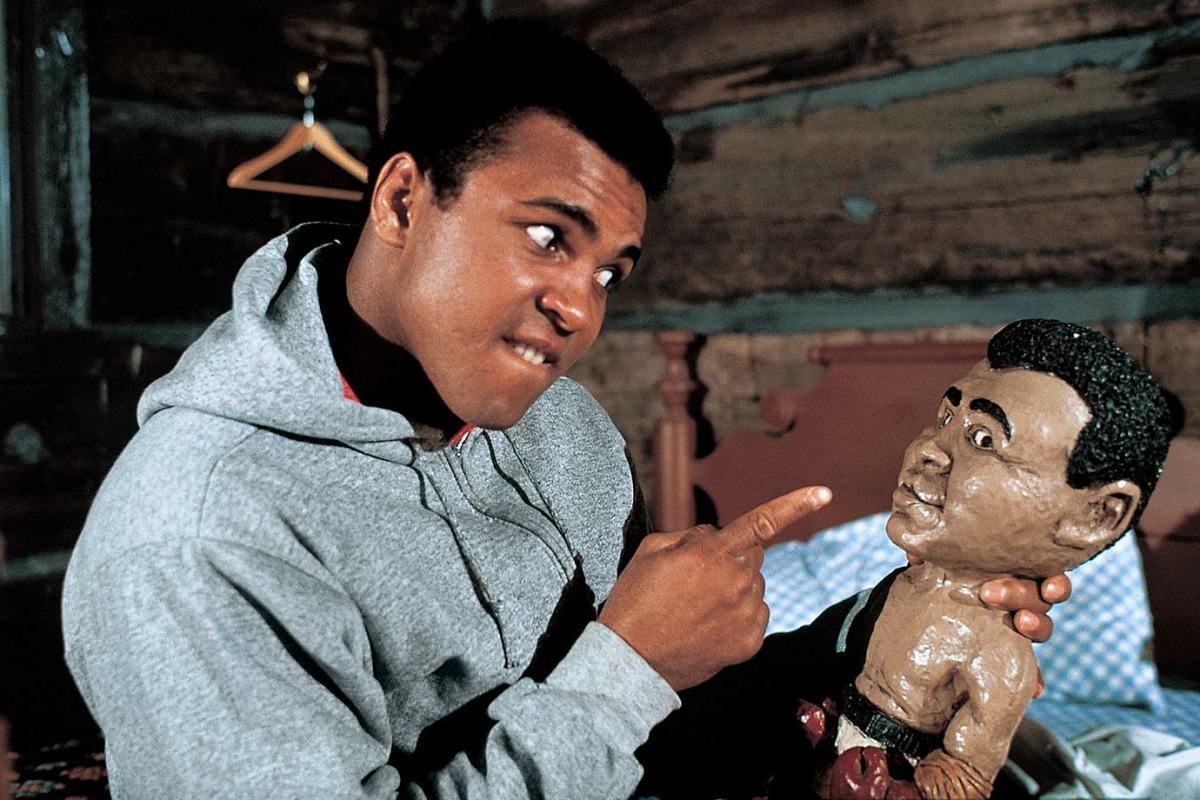
His smaller incarnation stares straight back as Ali plays with a doll of himself during the same 1974 shoot at his training camp cabin.
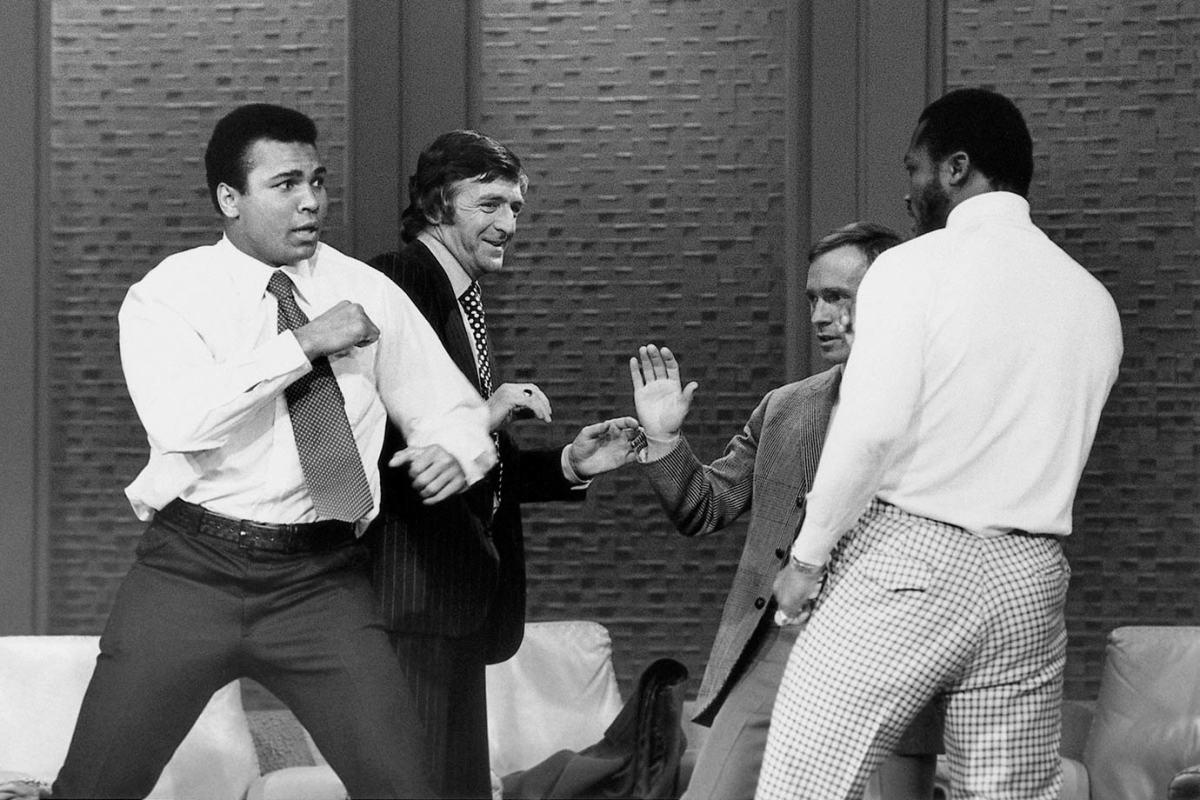
Ali and Joe Frazier fight on the set of The Dick Cavett Show while reviewing their 1971 bout in advance of their 1974 rematch. Ali called Frazier ignorant, to which Frazier took exception. As the studio crew tried to calm Frazier down, Ali held Frazier by the neck, forcing him to sit down and sparking a fight. The television set fight amped up anticipation of their January 1974 bout.
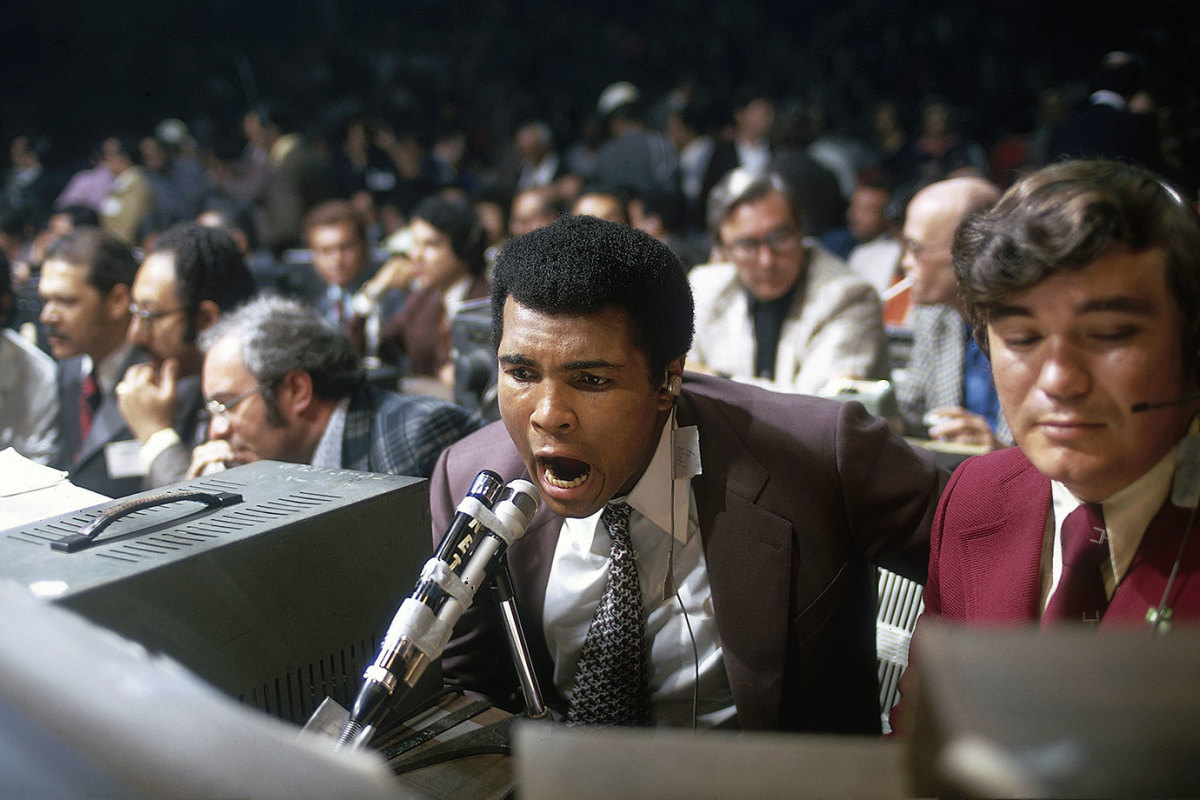
Exploring a different side of the sport, Ali broadcasts the fight between George Foreman and Ken Norton in March 1974. Foreman won the fight by technical knockout in the second round, setting up the showdown with Ali in Zaire.
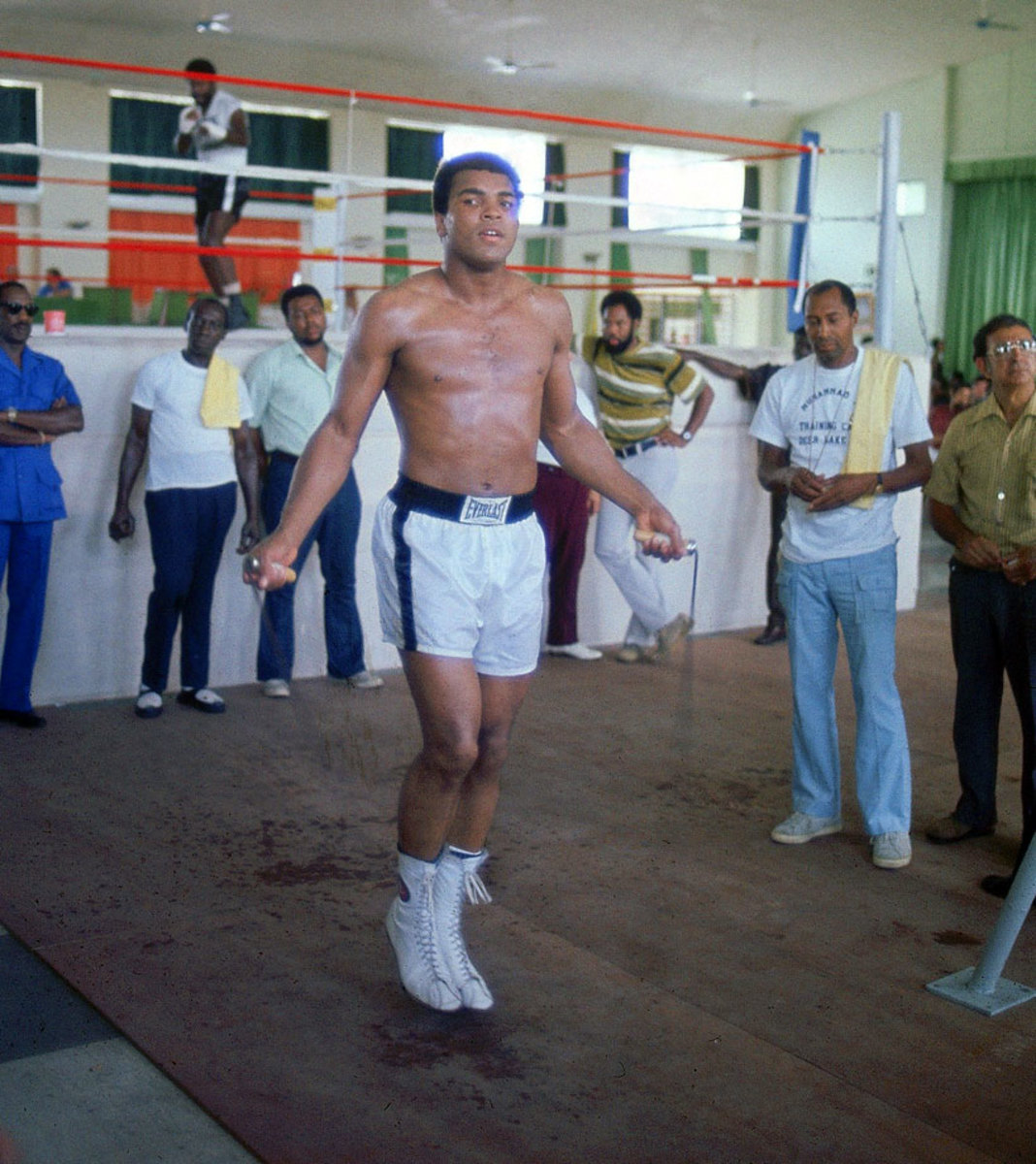
Ali jumps rope at the Salle de Congres in Kinshasa, Zaire, while training for his heavyweight title fight against George Foreman. Both Ali and Foreman spent most of the summer of 1974 training in Zaire to adjust to the climate.
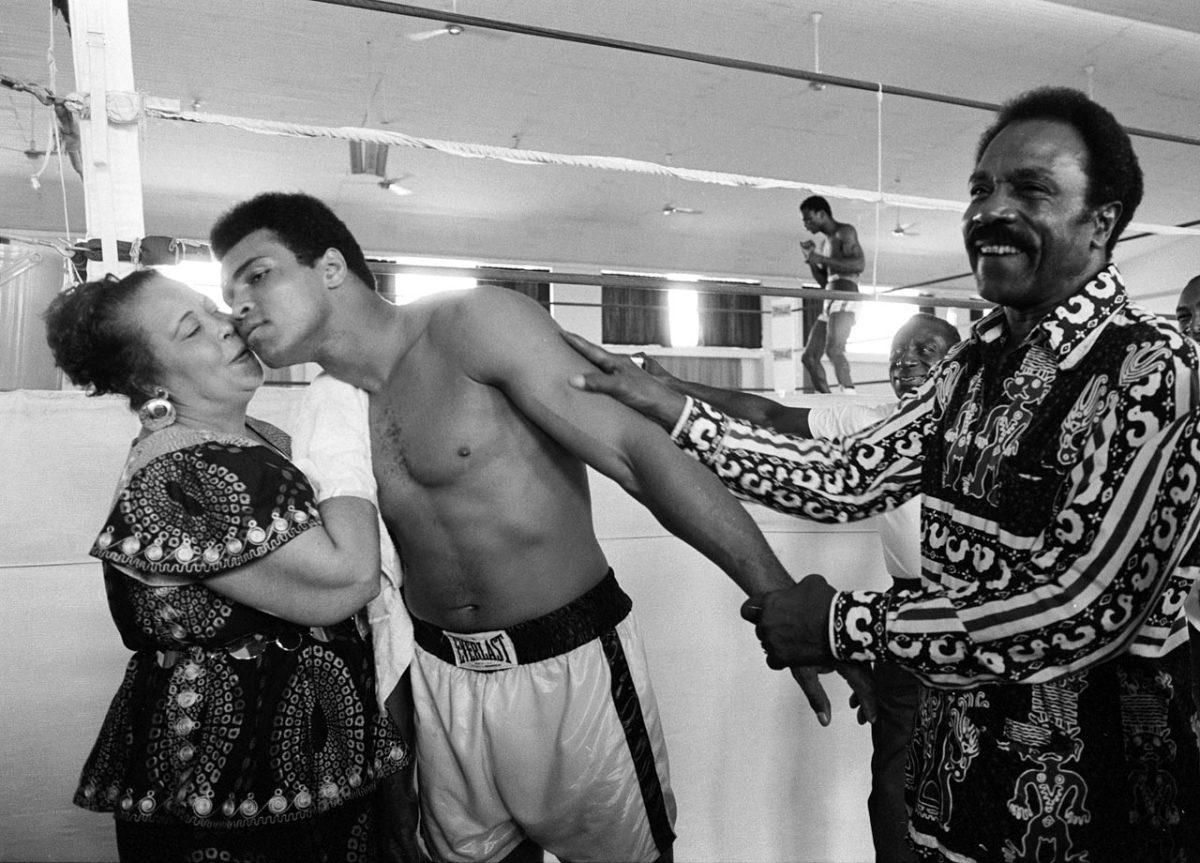
While training before his fight with George Foreman, Ali kisses his mother, Odessa Clay, while his father, Cassius Clay Sr., looks on. Ali's superior strategy and ability to take a punch led him to his upset victory as he absorbed body blows from Foreman before he responded with powerful combinations to Foreman's head.
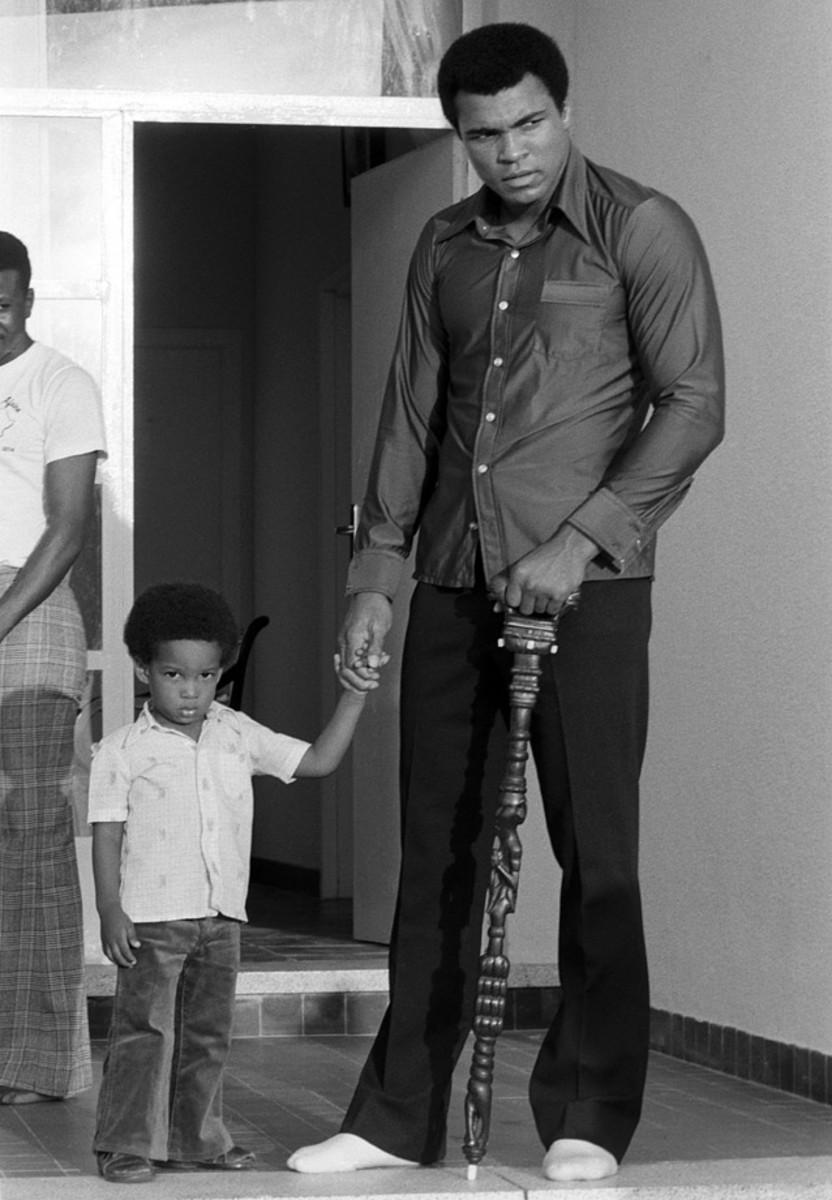
Four days before the fight, Ali holds the hand of his son Ibn in Zaire. Ali successfully courted the favor of the Zaire crowd, prompting chants of "Ali bomaye!" — translated as "Ali, kill him!"
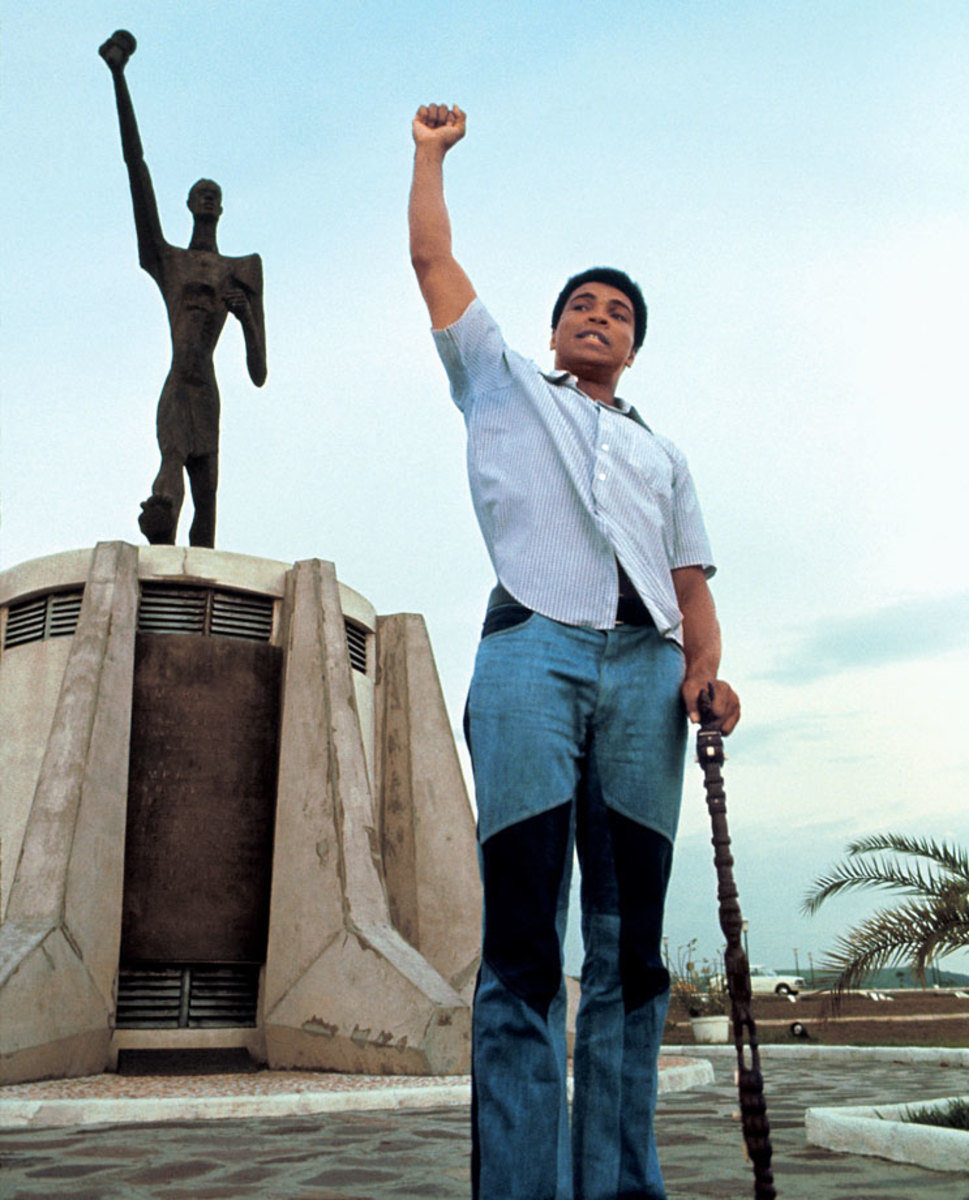
Ali poses in front of the Le Militant statue at the presidential complex that was the site of Ali's January heavyweight title bout with Foreman. The fight was originally set for a month earlier, but Foreman suffered a cut near his eye during training, forcing a delay.
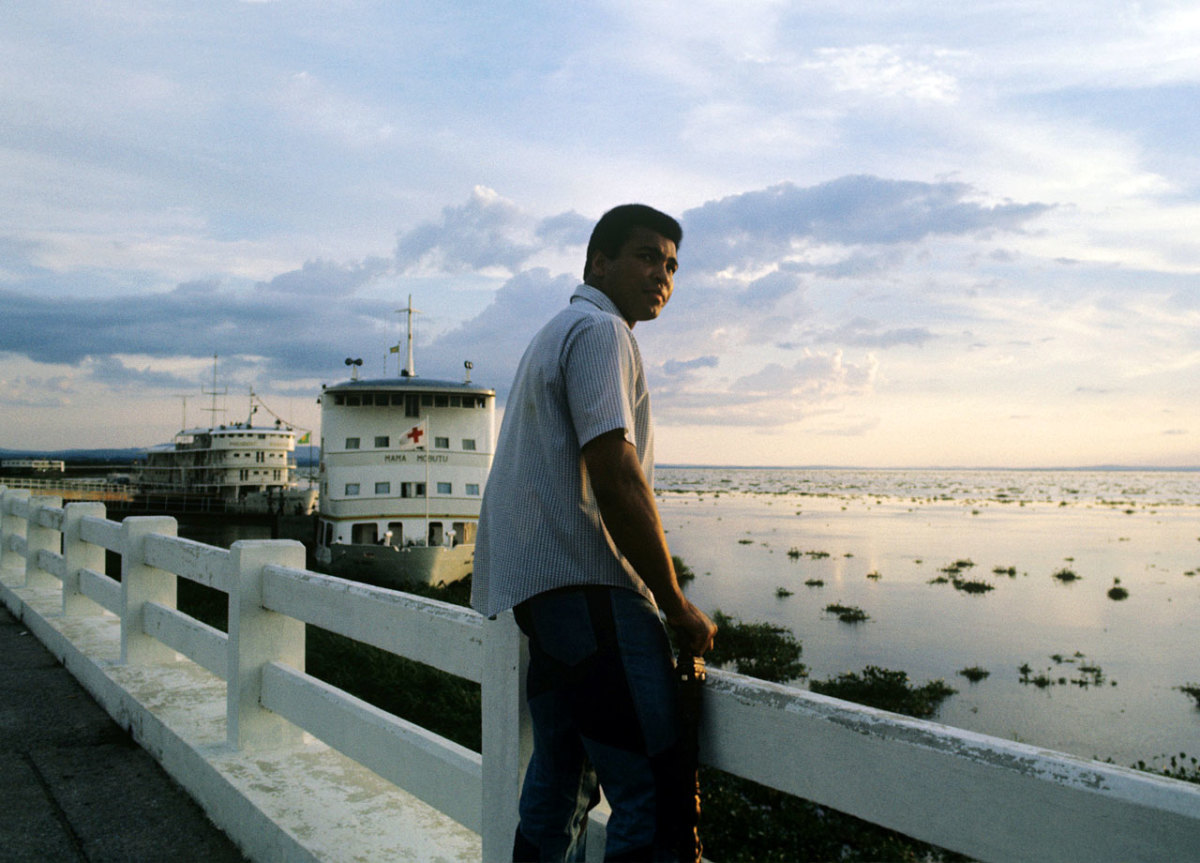
Ali stands against the railing on the River Zaire watching the sunset four days before the Rumble in the Jungle. The fight was sponsored by Zaire to achieve the $5 million purse promoter Don King had promised both Ali and Foreman.
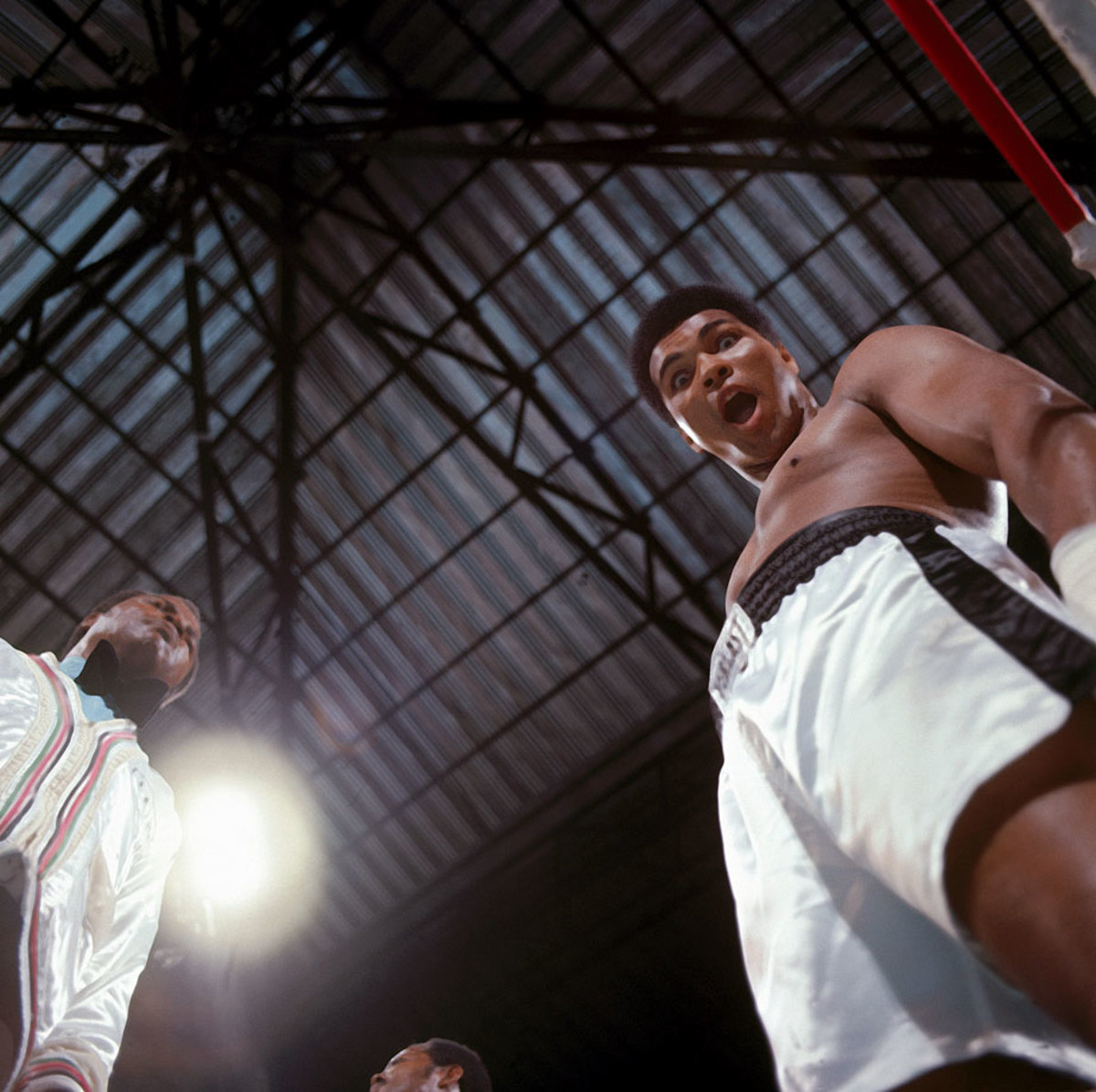
Before employing his famous rope-a-dope strategy against Foreman, Ali makes a face at the camera. Ali allowed Foreman to throw many punches but only into his arms and body, and when Foreman tired himself out from the mostly ineffective punches, Ali took control of the fight.
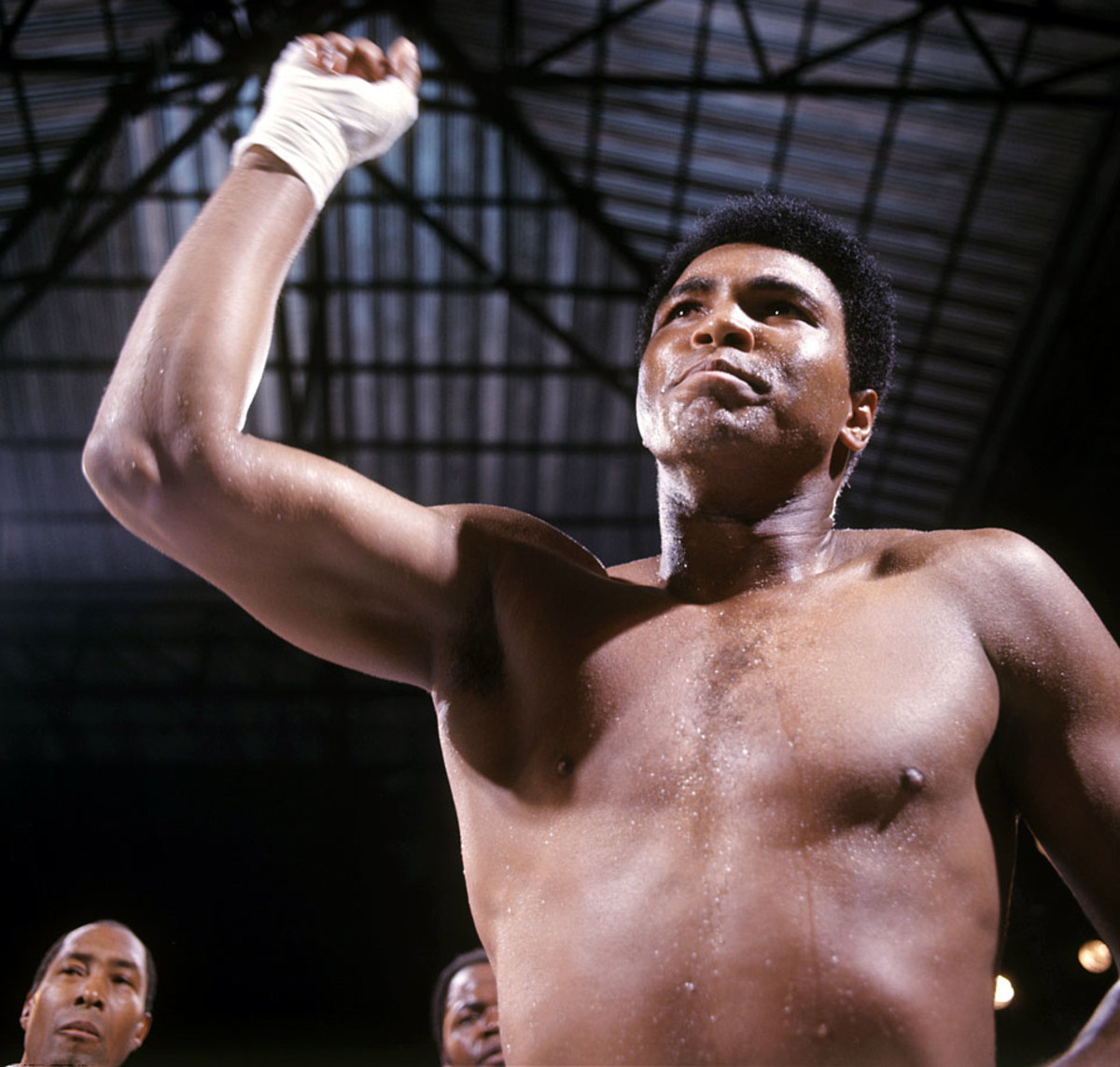
Ali points before his bout with Foreman. The victory over his favored opponent made him the heavyweight champion of the world for the first time since he was stripped of his titles in 1967.
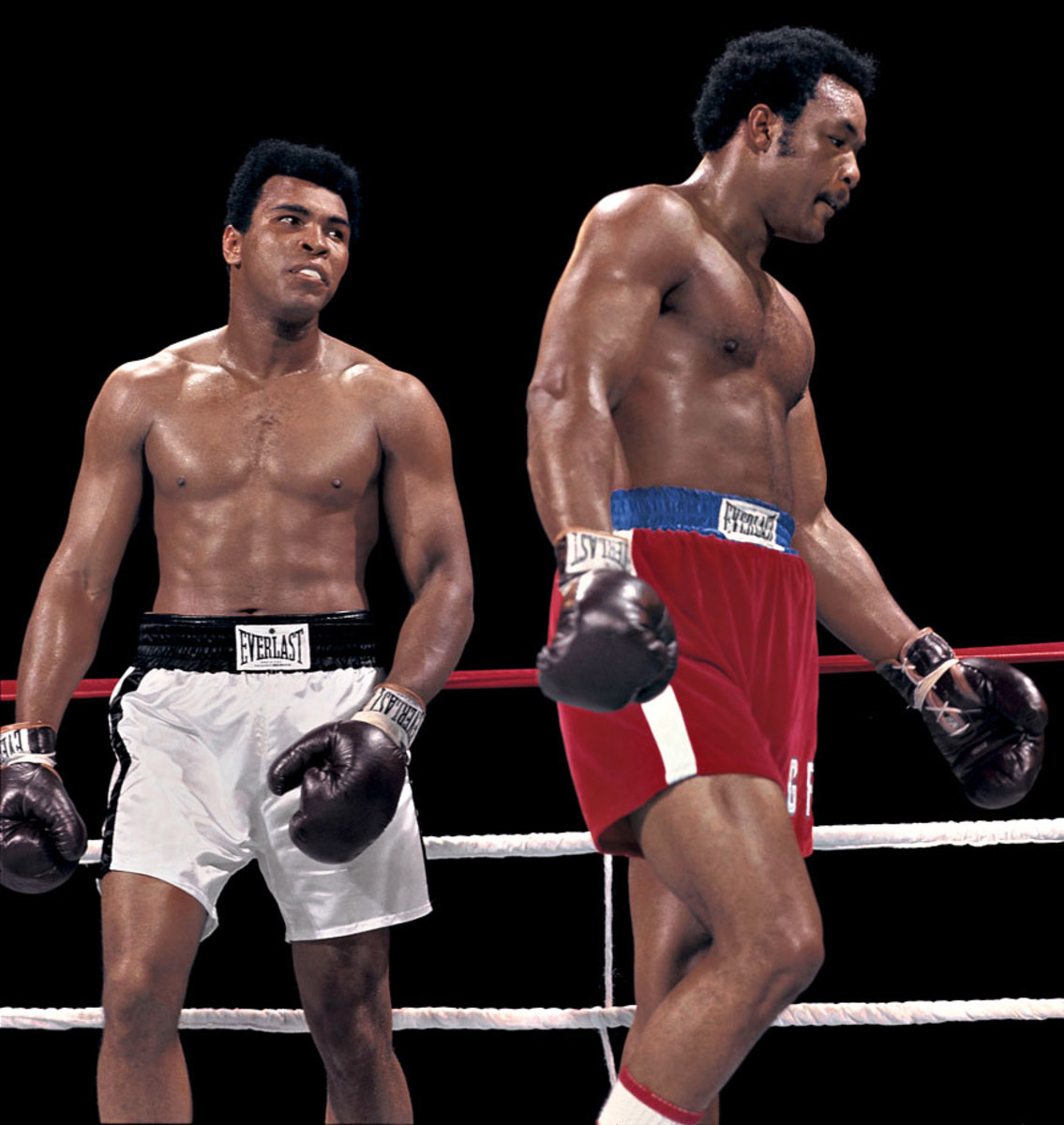
Ali stares at George Foreman during the Rumble in the Jungle. Ali earned his shot at the heavyweight title by defeating Joe Frazier in January 1974, avenging a loss three years earlier.
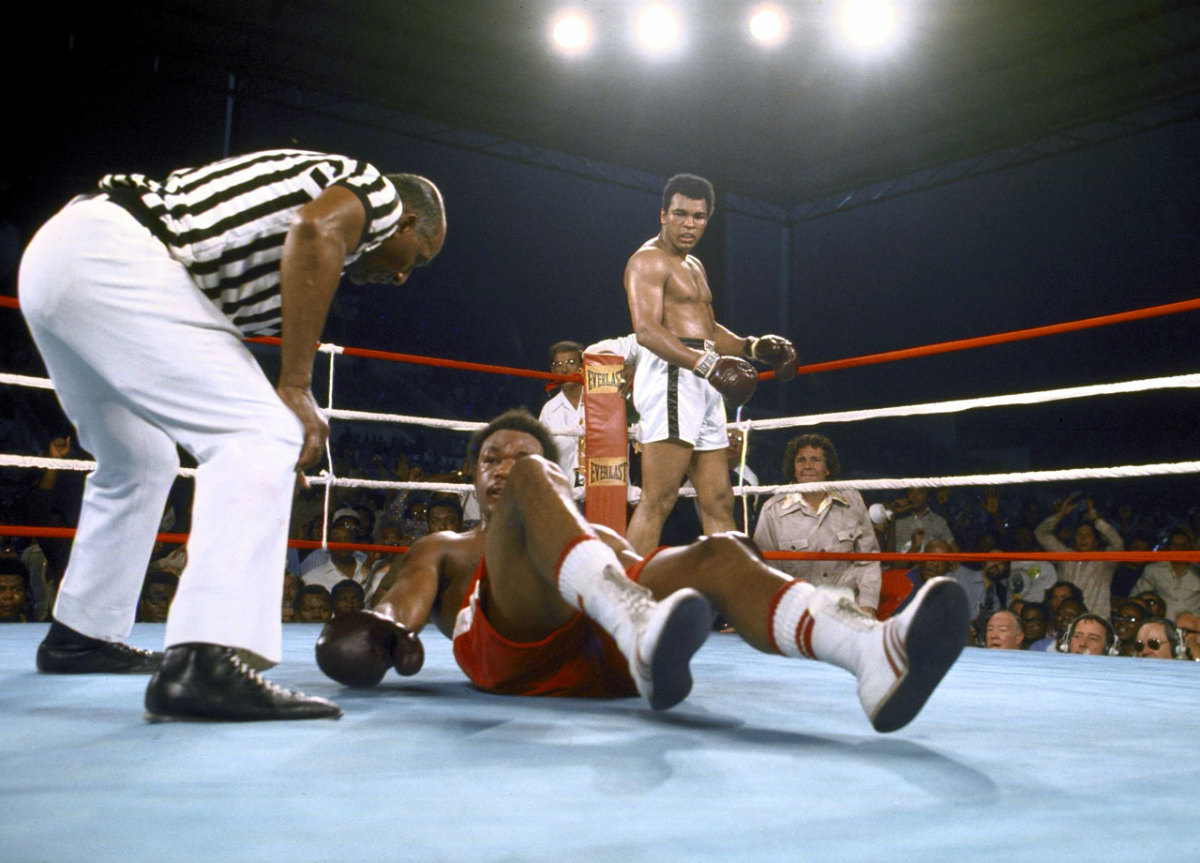
Foreman lies down on the canvas as Ali stands in the background during the Rumble in the Jungle. Ali knocked Foreman down with a five-punch combination in the eighth round, and referee Zack Clayton counted him out.
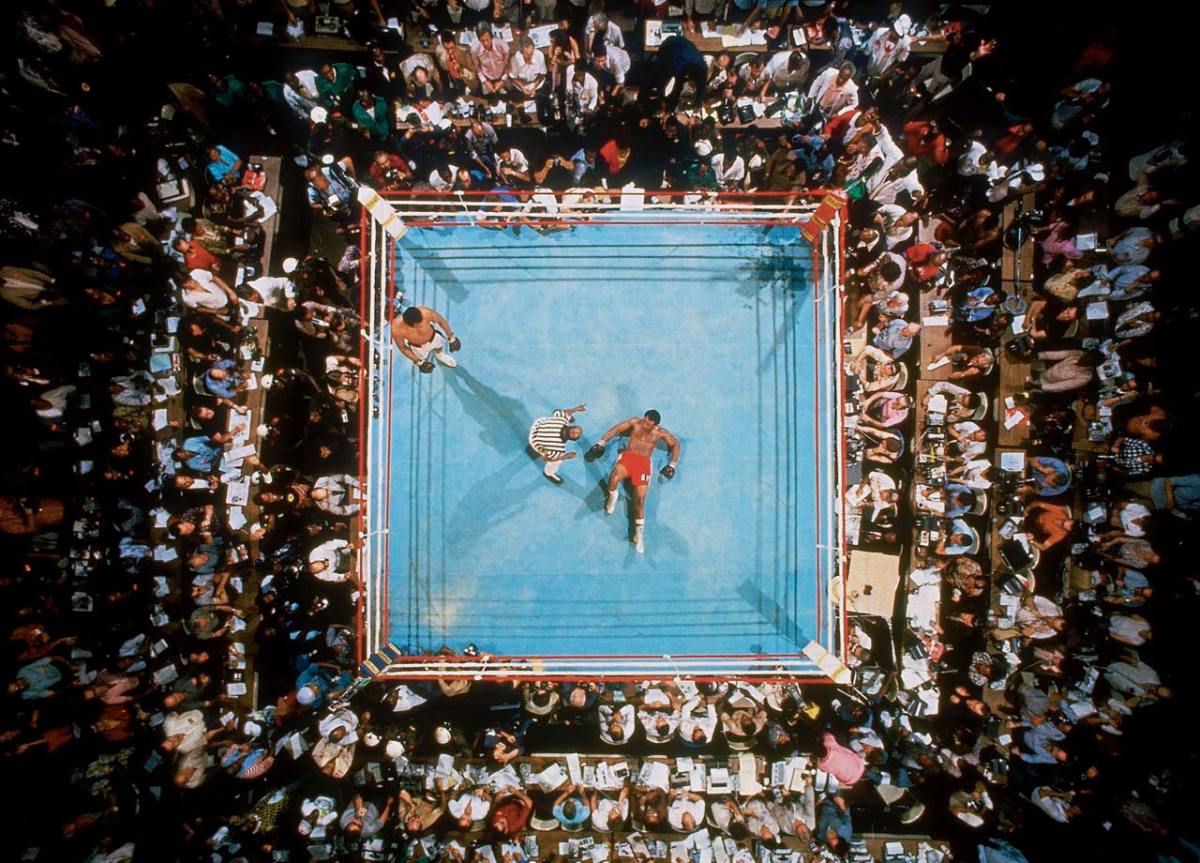
Big George stares at the ceiling as referee Zack Clayton counts him out in the eighth round. The victory made Ali, once again, the heavyweight champion of the world.
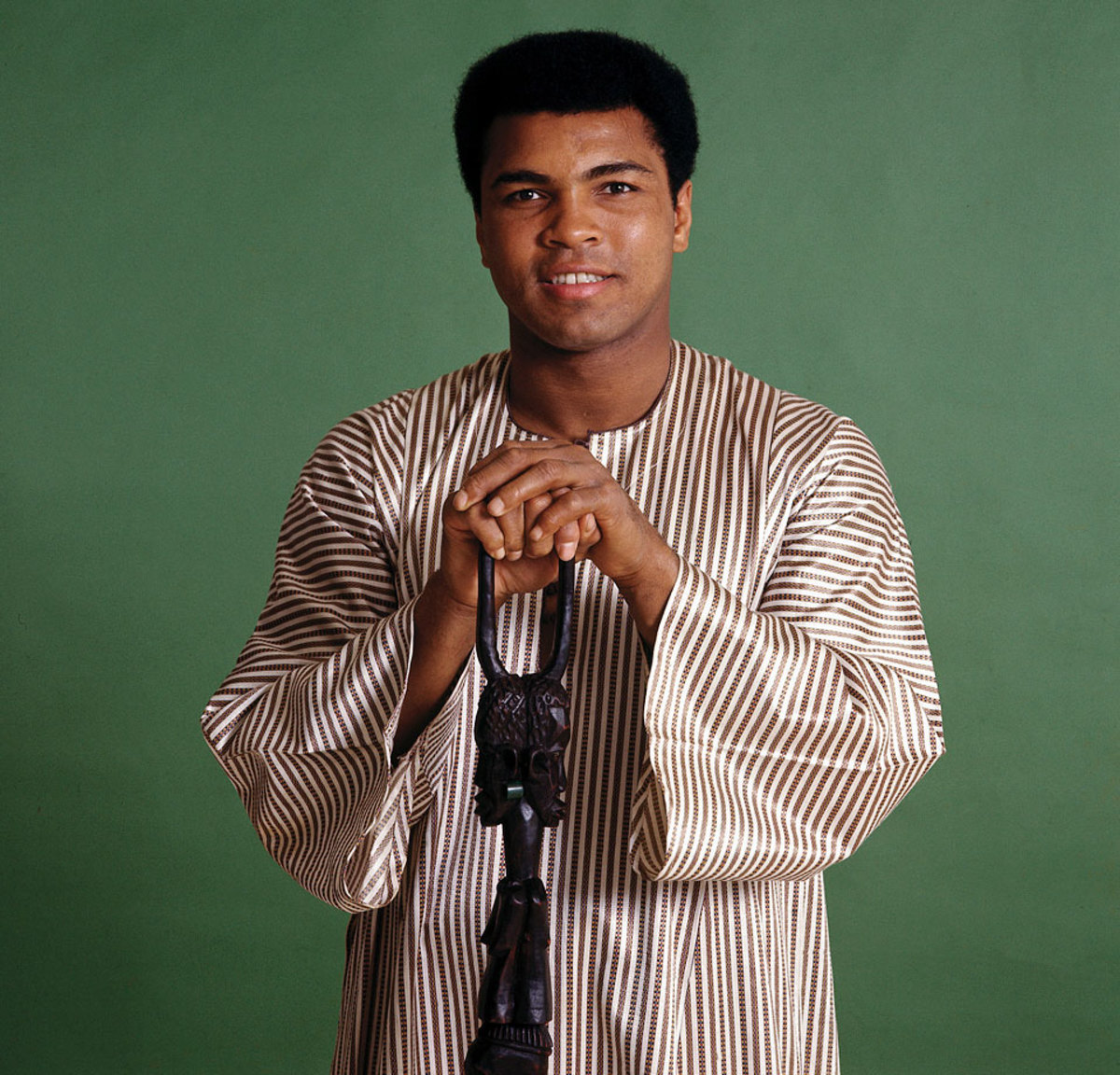
Ali poses for a portrait after being selected as the Sports Illustrated Sportsman of the Year in 1974. Ali wore a dashiki, a men's garment widely worn in West Africa. He also brought the walking stick given to him by Zaire's president.
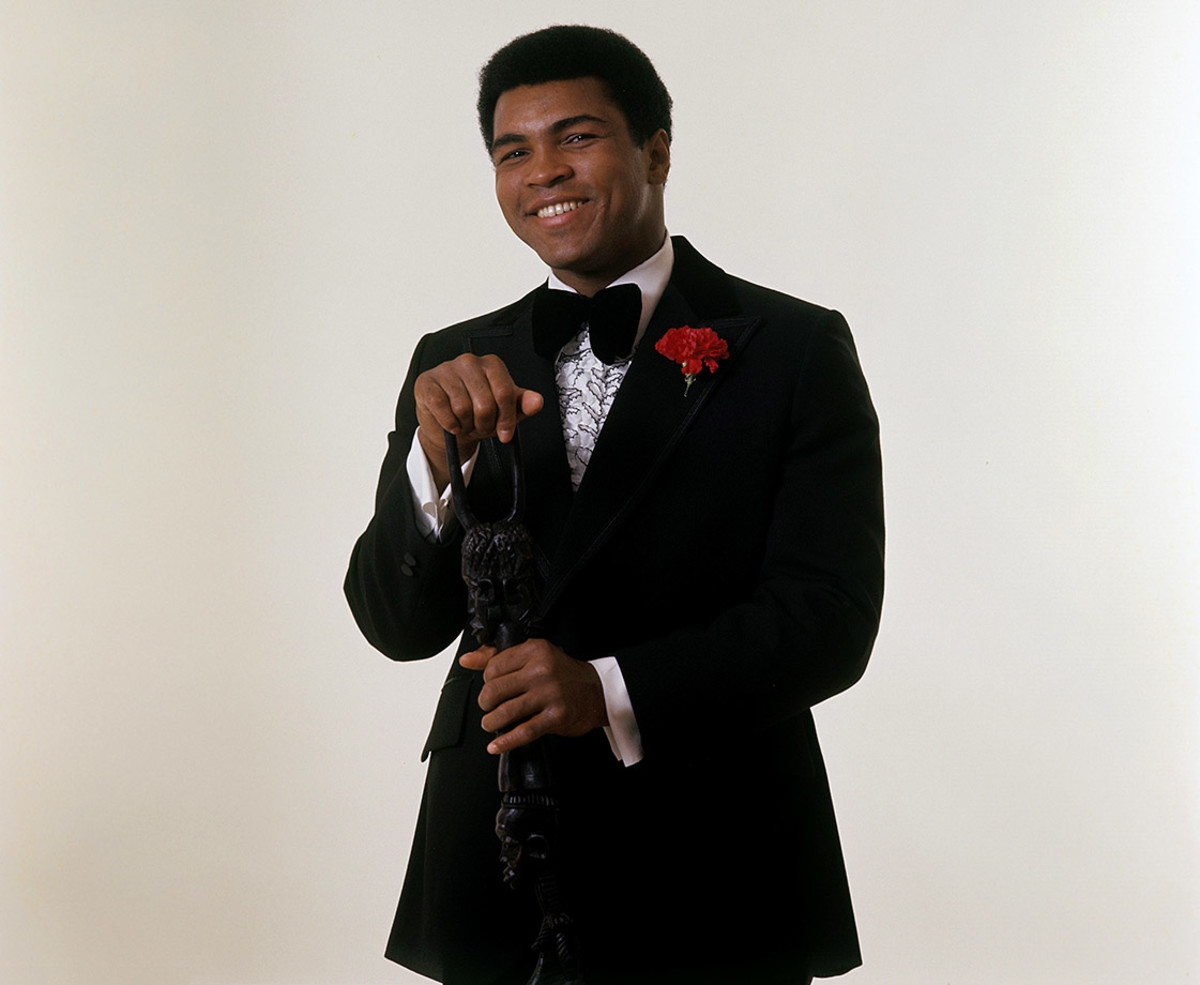
This time Ali wears a tuxedo, but keeps the walking stick, during the November photo shoot for Sports Illustrated's Sportsman of the Year.
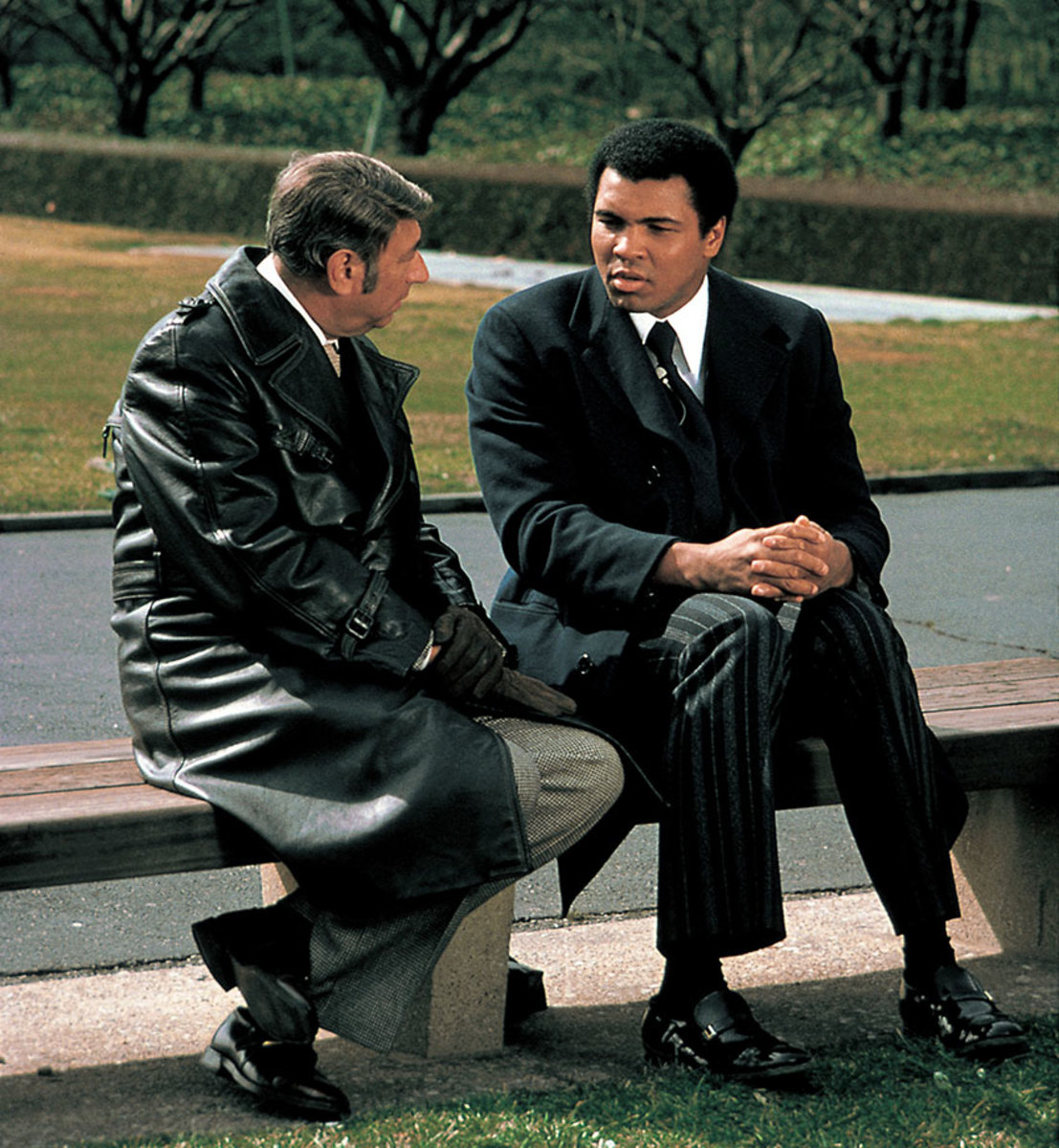
Ali talks with Howard Cosell outside of the United Nations Headquarters for a segment on the Wide World of Sports. Later that day, Ali held a press conference to announce that he would donate part of the proceeds from his fight against Chuck Wepner to help Africans in the Sahel drought.
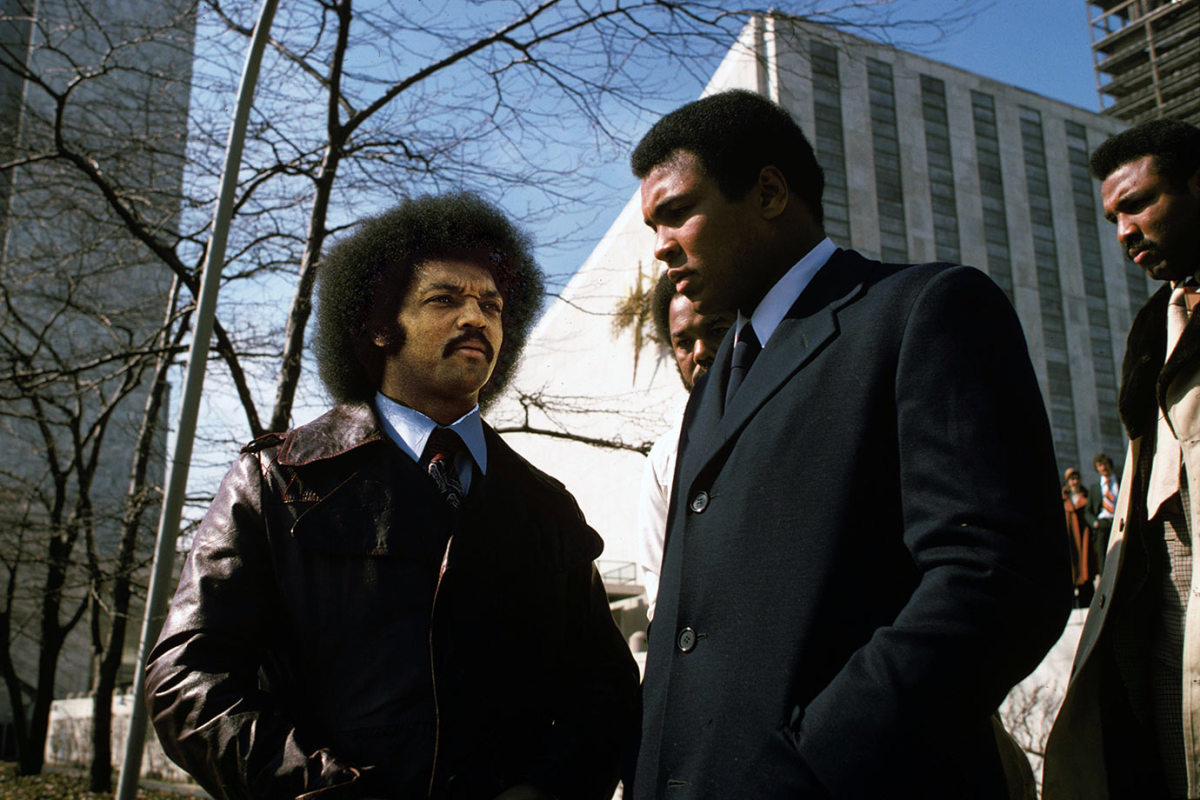
Ali talks with Reverend Jesse Jackson outside of the United Nations Headquarters before a press conference to announce that he would donate part of the proceeds from his fight against Chuck Wepner to help Africans in the Sahel drought.
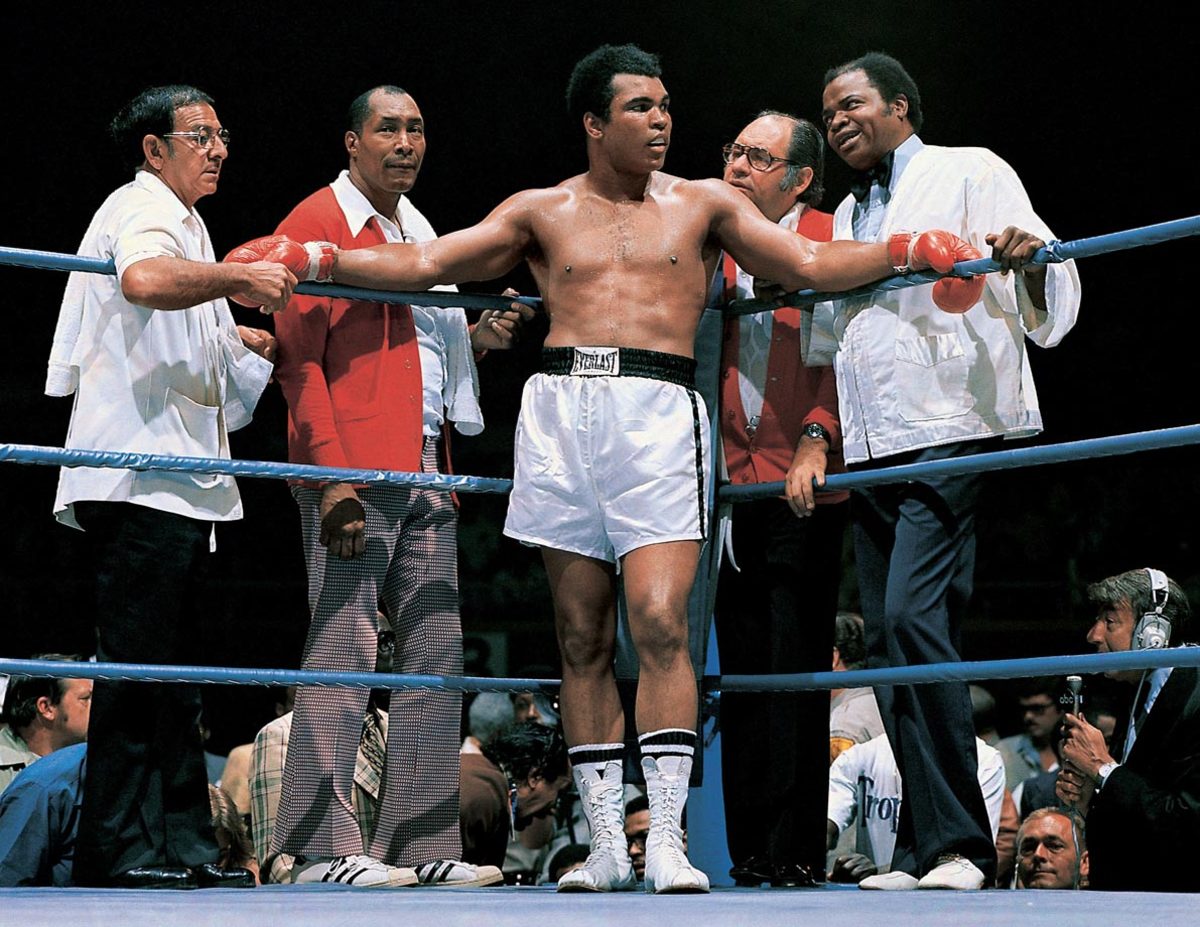
Ali stands with trainer Angelo Dundee, assistant trainer Wali Muhammad, physician Dr. Ferdie Pacheco and assistant trainer Drew Bundini Brown before his bout with Ron Lyle in May 1975. Ali won the fight by technical knockout in the 11th round.
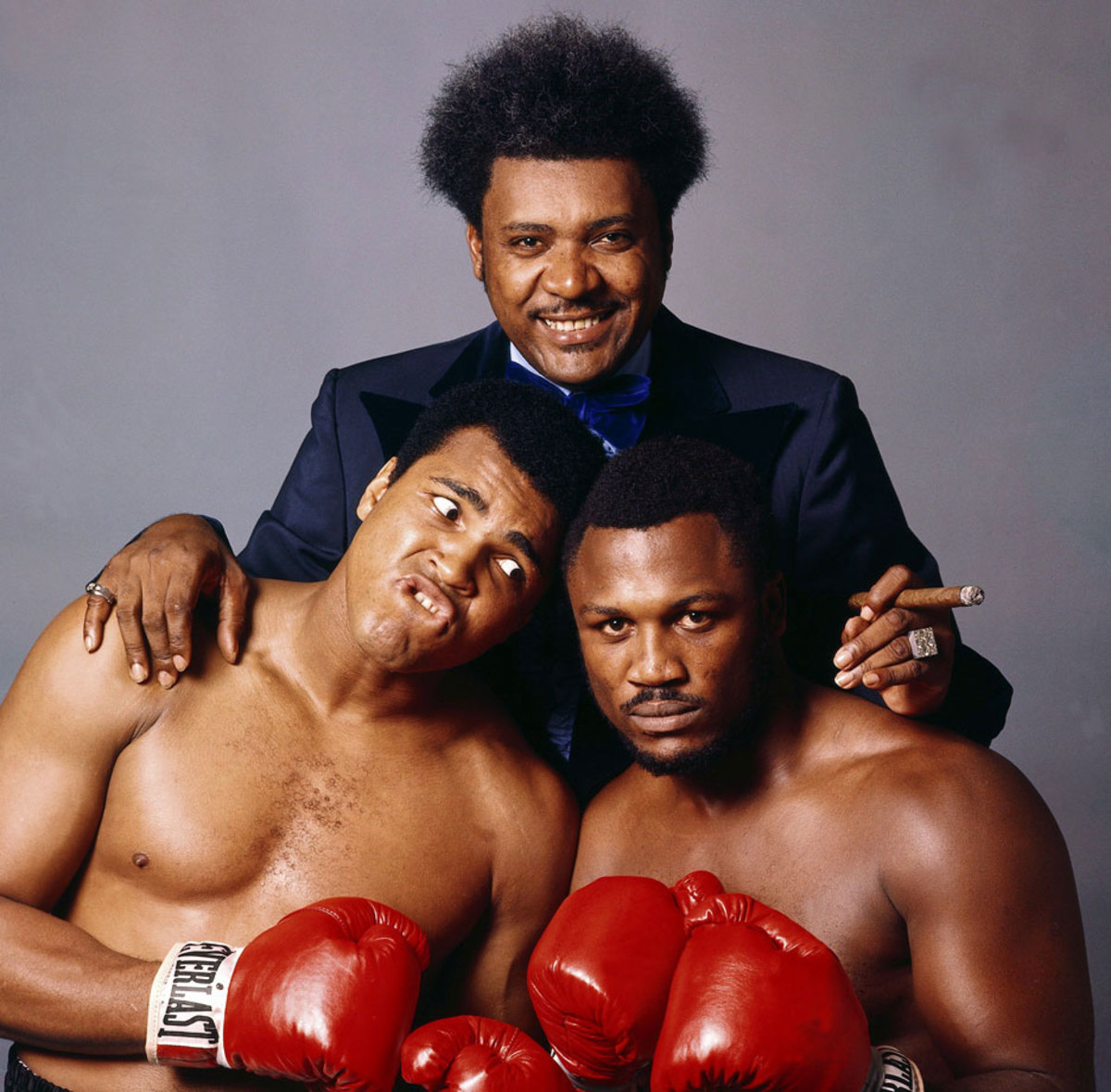
Along with Don King and Joe Frazier, Ali sat for a portrait leading up to the Thrilla in Manila. Ali verbally abused Frazier during the buildup to the fight, telling the media that "it will be a killa and a thrilla and a chilla when I get the gorilla in Manila."
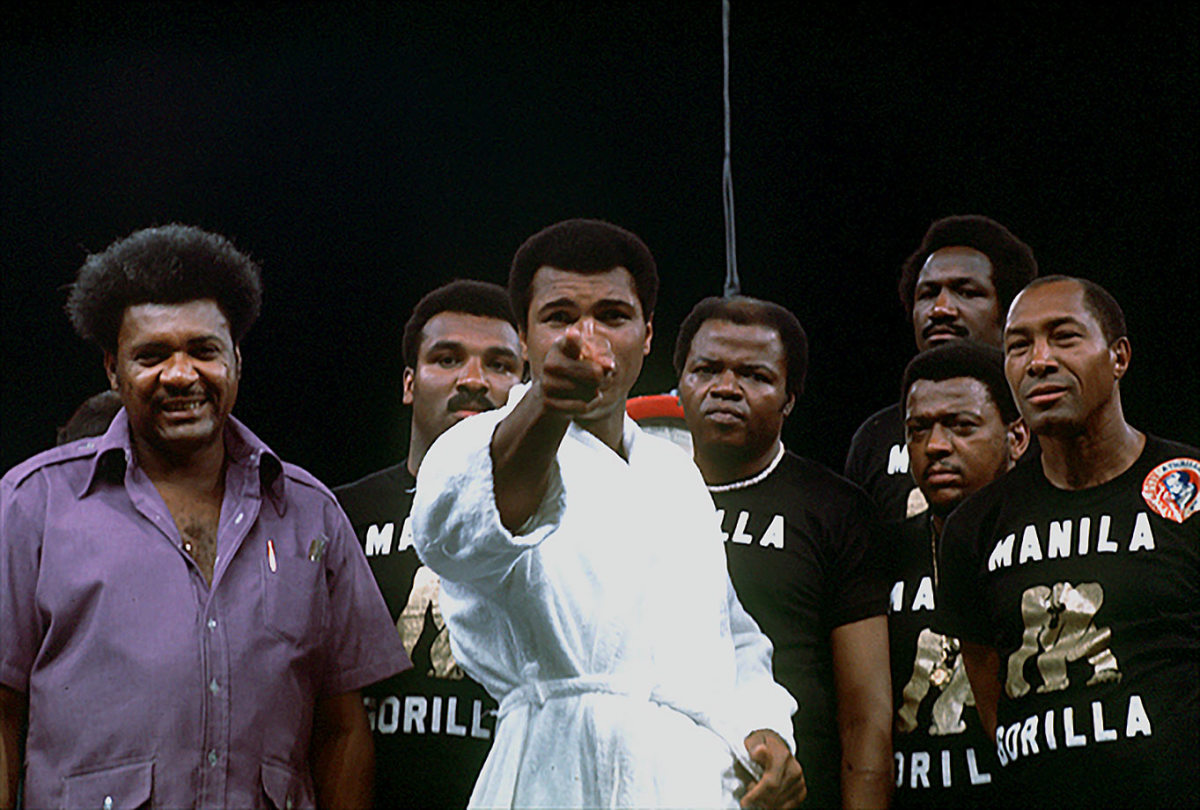
Ali points at the camera with Don King and his training staff behind him before the weigh-in for the Thrilla in Manila in October 1975. Philippine president Ferdinand Marcos offered to sponsor the bout and hold it in Metro Manila to divert attention from the turmoil in the country that had forced the imposition of martial law in 1972.
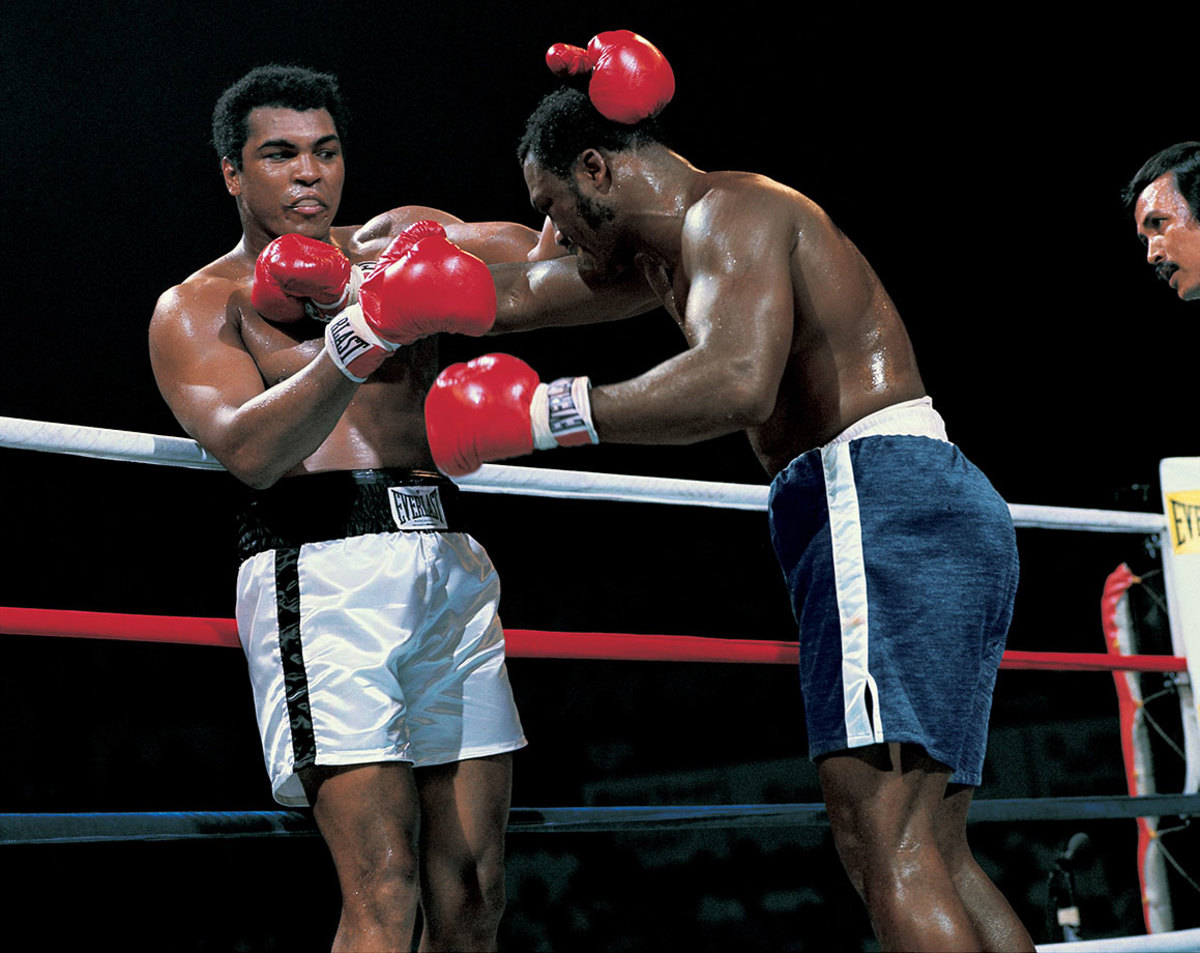
Wrapping up Joe Frazier proved more difficult than Ali expected, having thought Frazier would represent an easy payday and be unable to live up to his billing. The fight turned out to be a brutal affair.
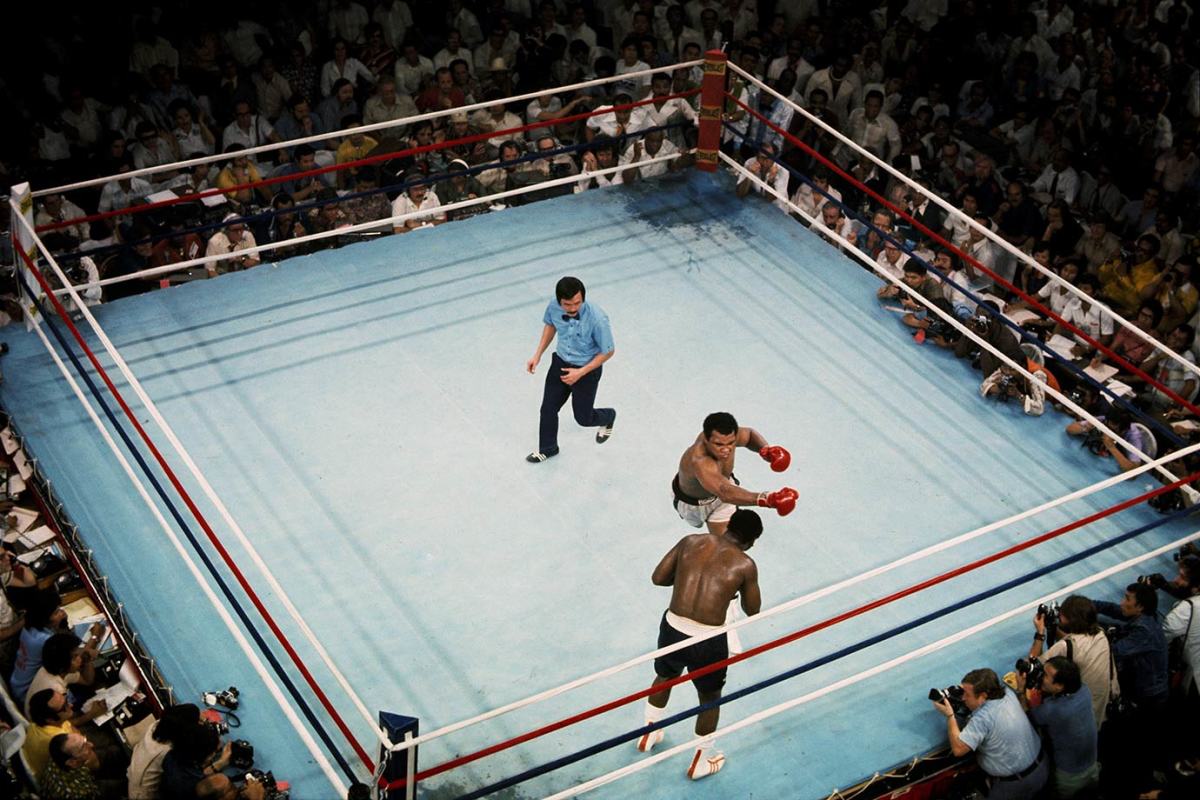
Frazier faces an Ali right hook in their fight in Quezon City, Philippines. The two fighters traded vicious blows during their 14 rounds. "Man, I hit him with punches that'd bring down the walls of a city," Frazier said. Ali withstood the blows to win by TKO in the 15th round.
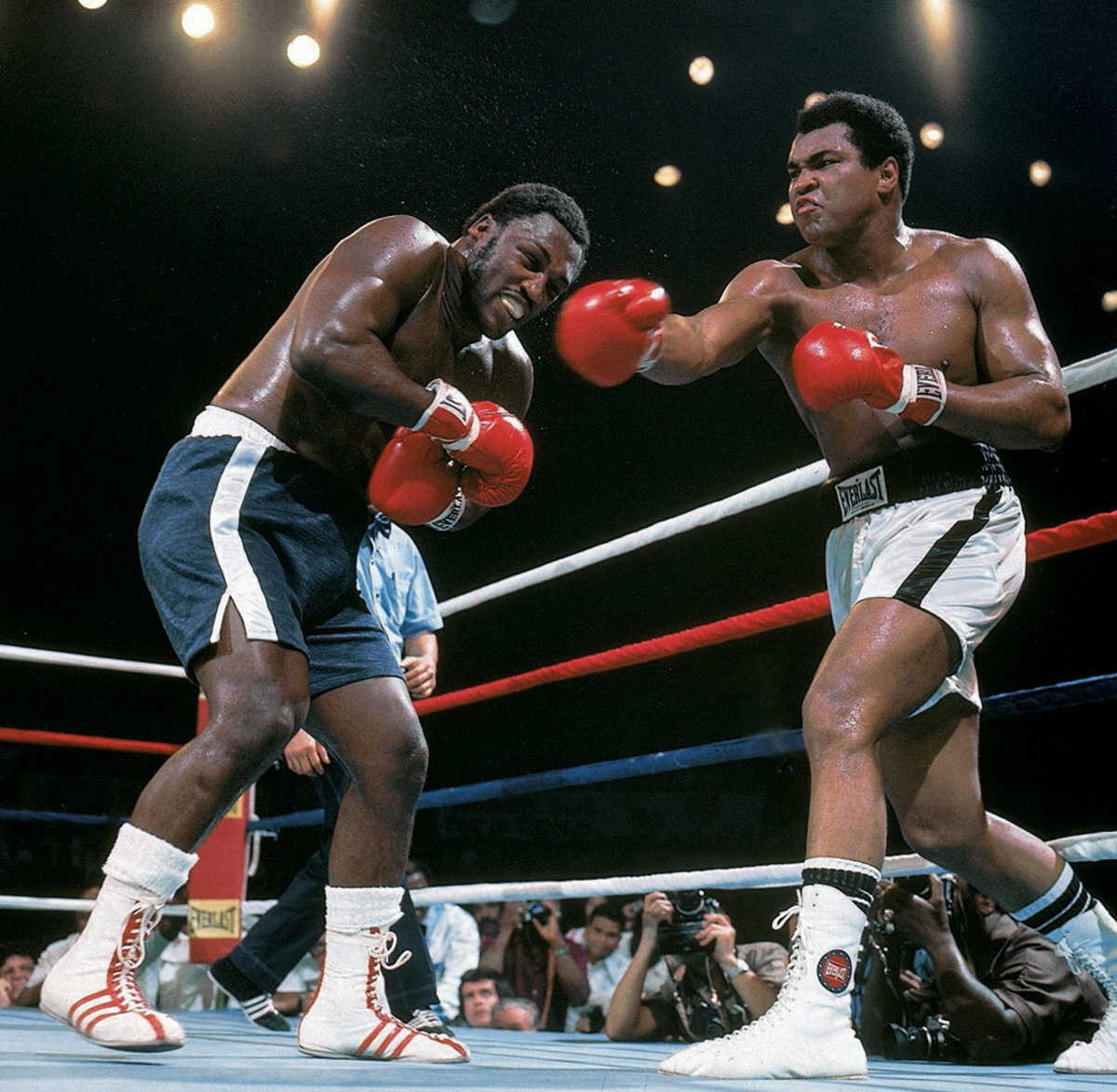
The third fight between Ali and Frazier, Ali won the bruising battle between the two powerful punching heavyweights when Frazier's trainer, Eddie Futch, stopped the fight before the 15th round.
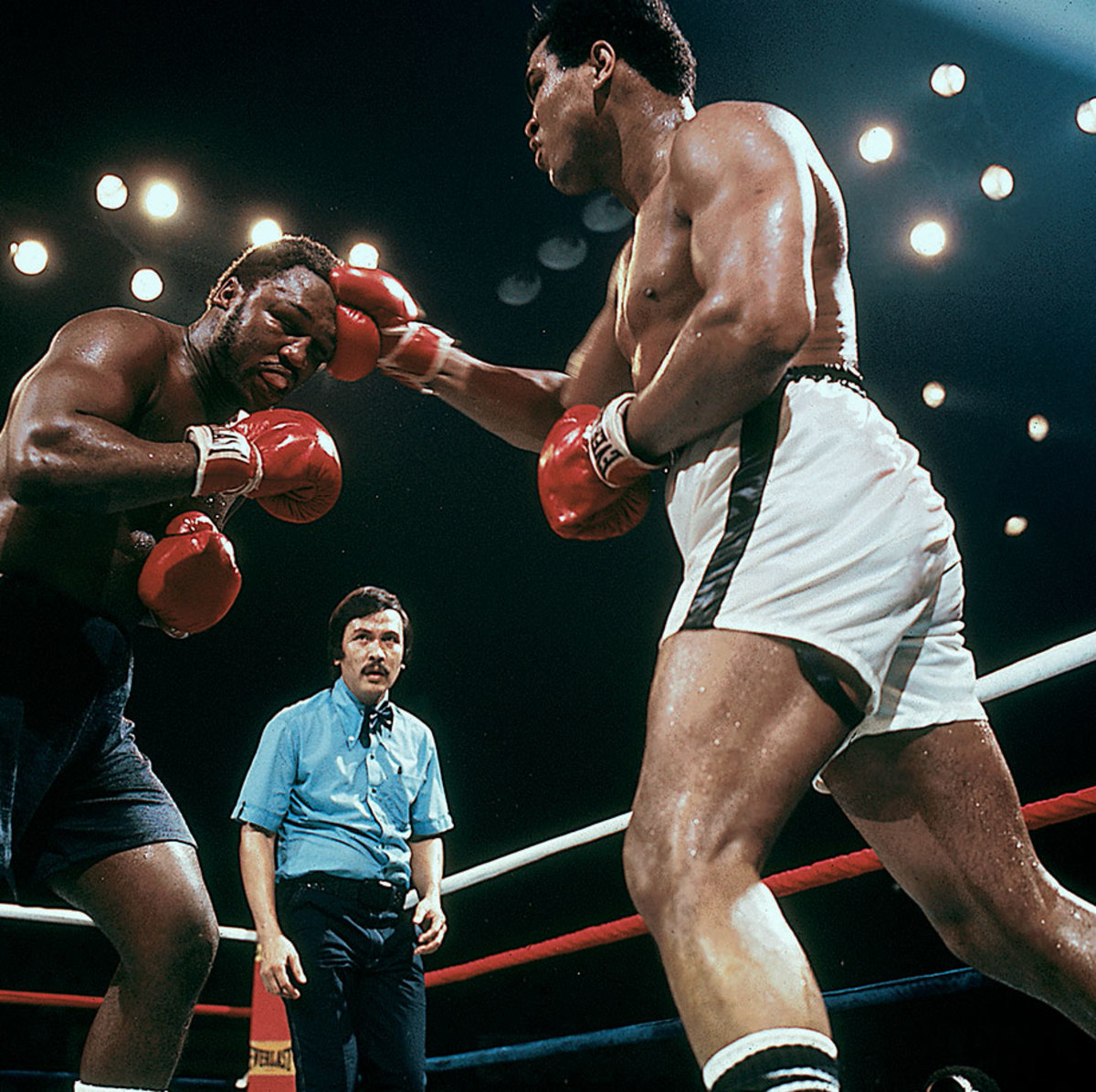
A back and forth exchange, Ali controlled the early rounds of the Thrilla in Manila before Frazier fought back with powerful hooks. Ali finished strong, regaining momentum in the later rounds.
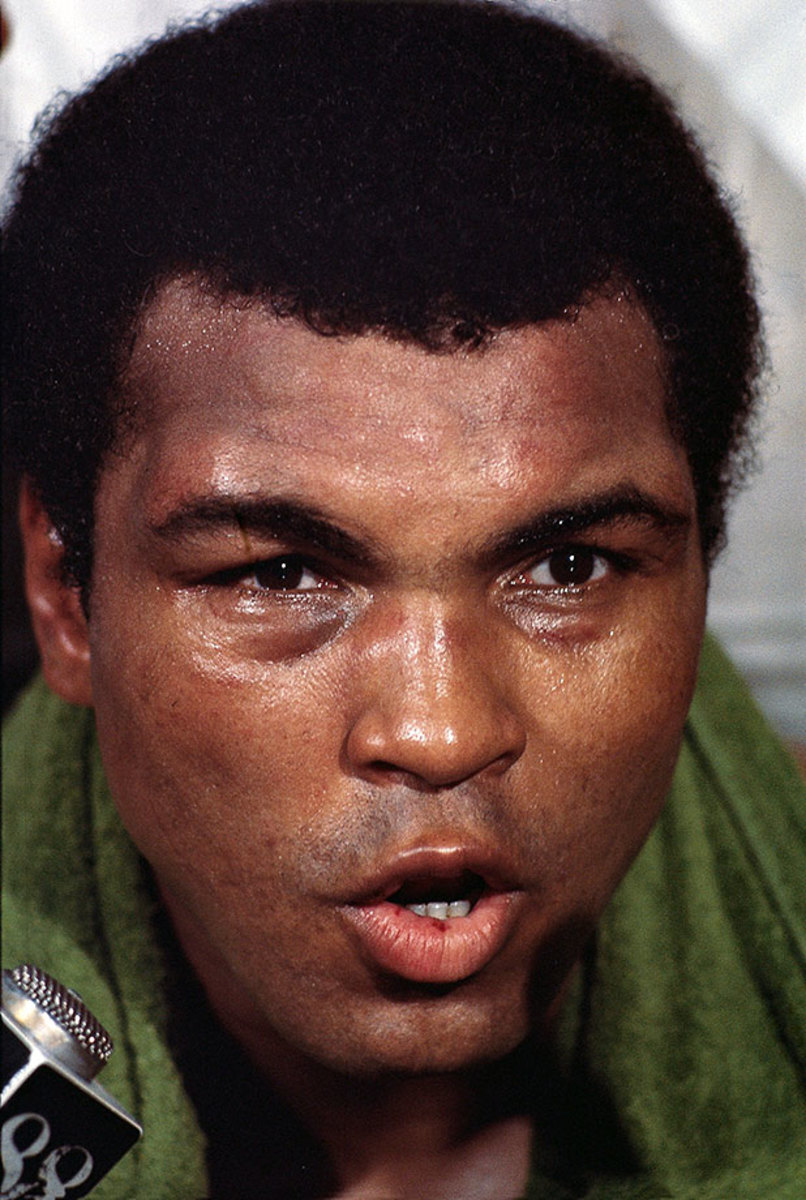
Ali speaks to the press after winning the Thrilla in Manila bout with Frazier.
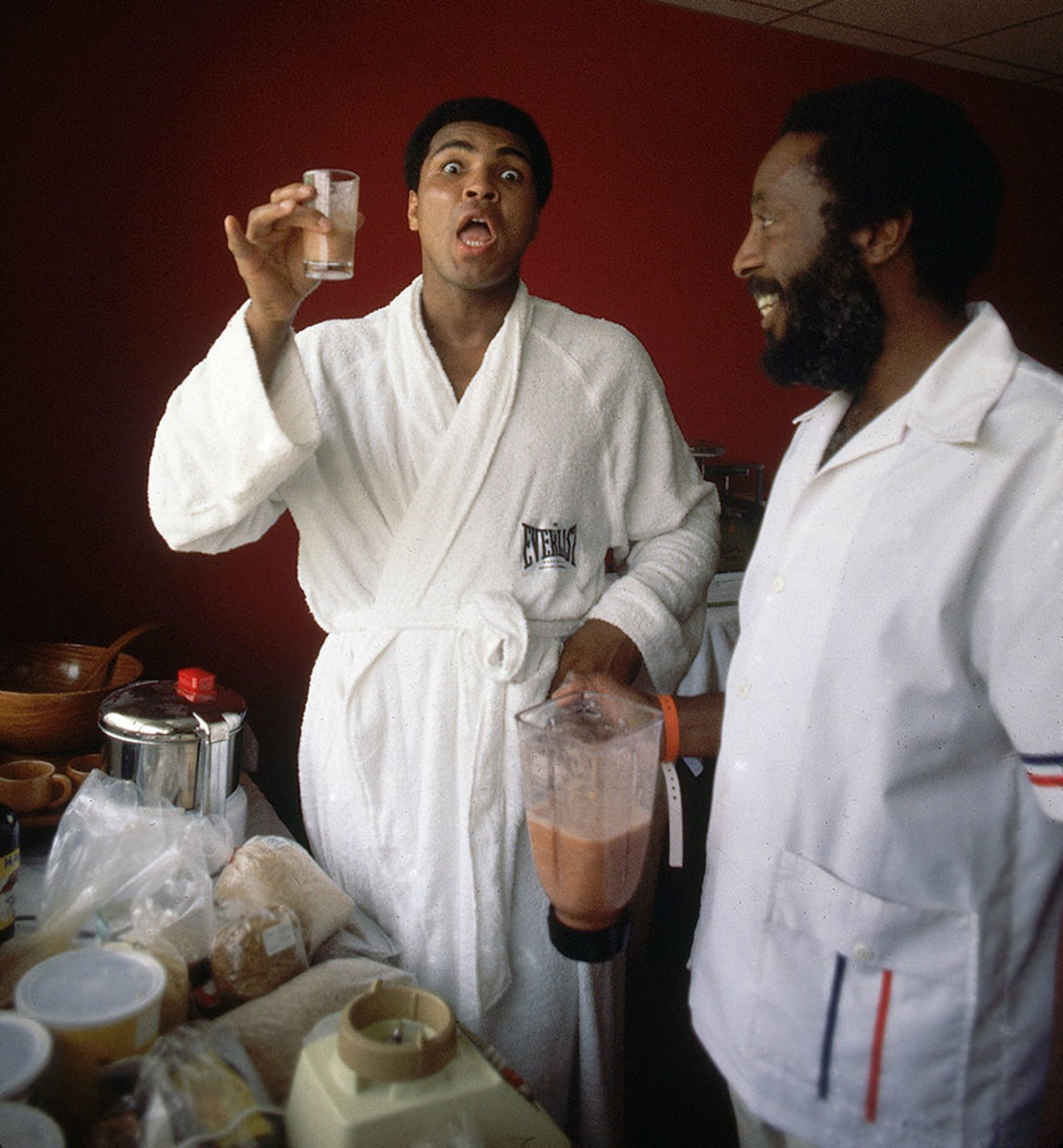
Ali holds a drinking concoction given to him by Dick Gregory, an advocate of a raw fruit and vegetable diet, in 1976.
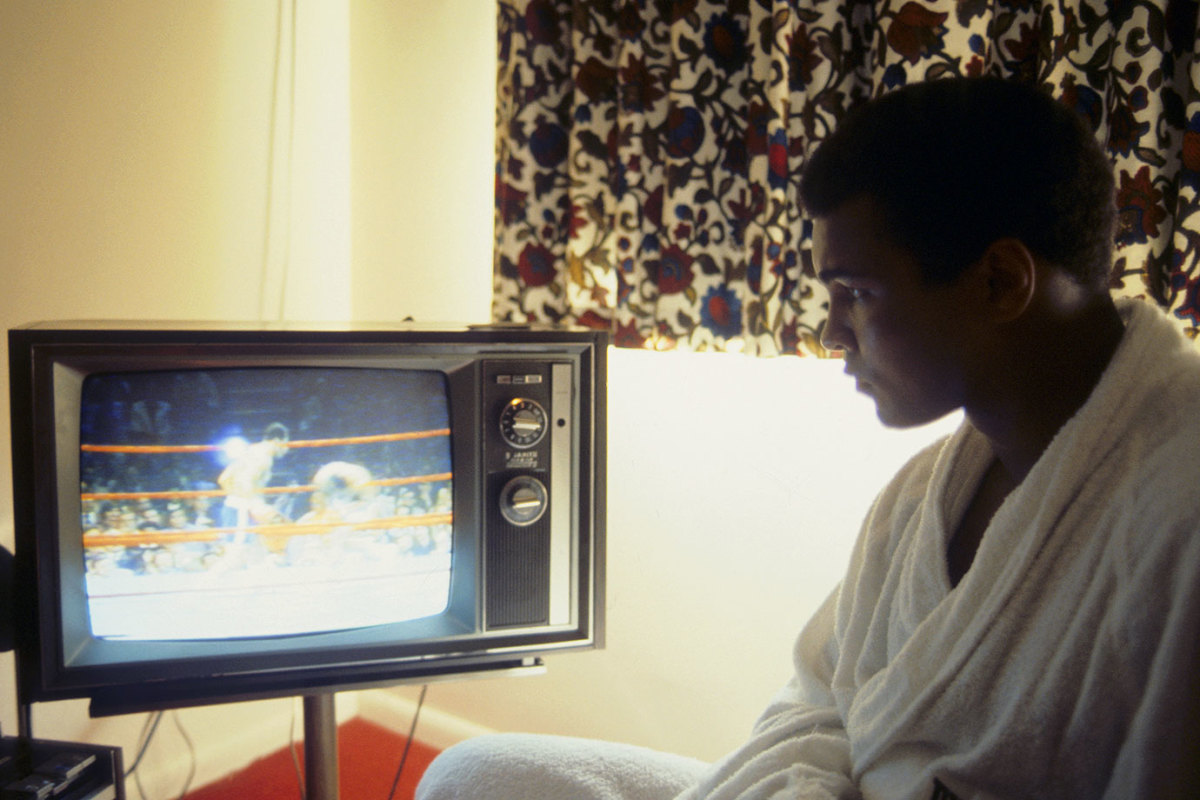
Before his 1976 fight against Ken Norton at Yankee Stadium, Ali watches a fight on television from his hotel room. A police strike at the time of the fight created a dangerous environment outside the stadium that all but eliminated walk-up sales.
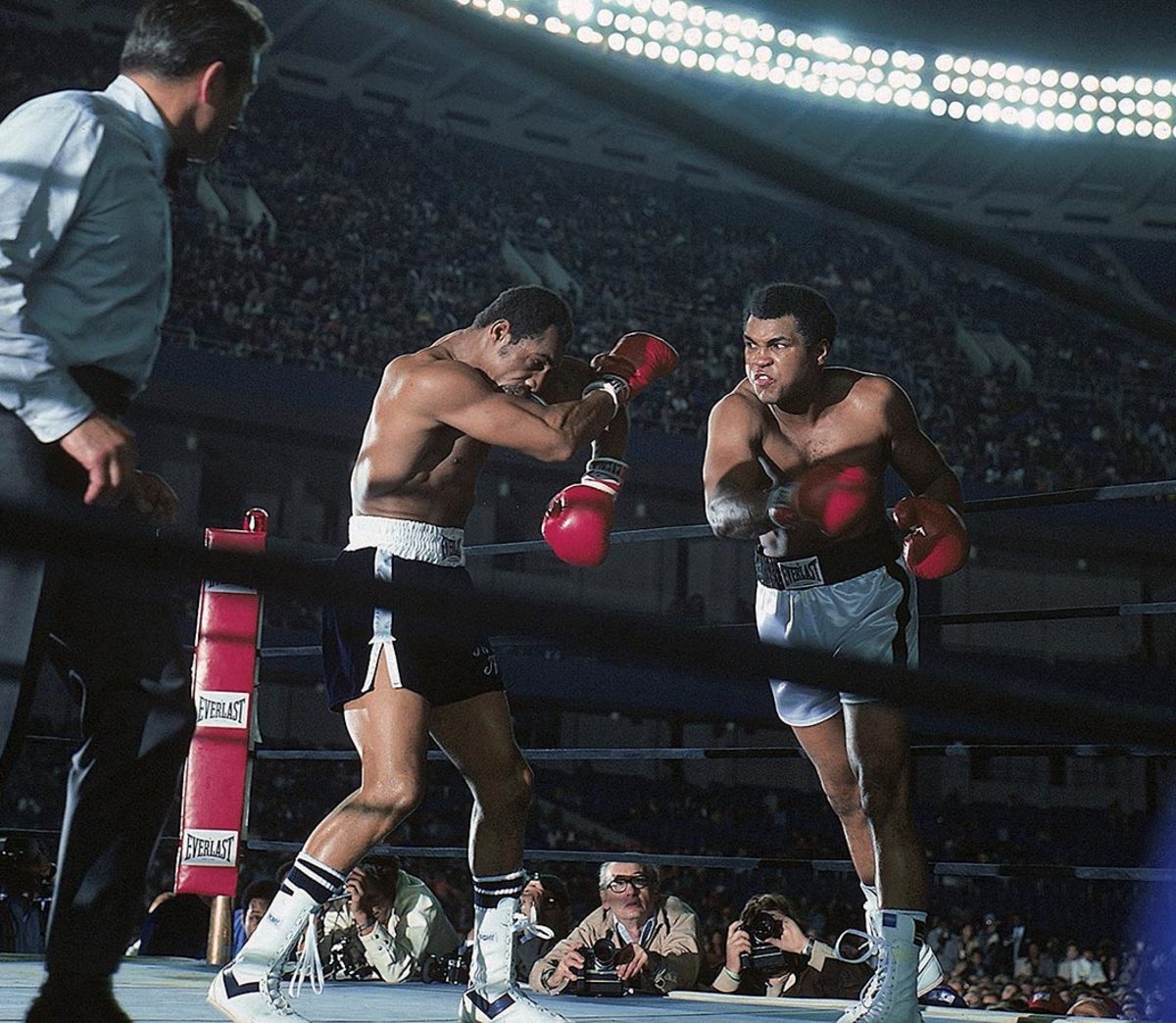
Norton takes a right hook during the heavyweight title fight against Ali. The bout, which Ali won by a unanimous, but controversial, decision, was the last boxing match at Yankee Stadium until 2010.
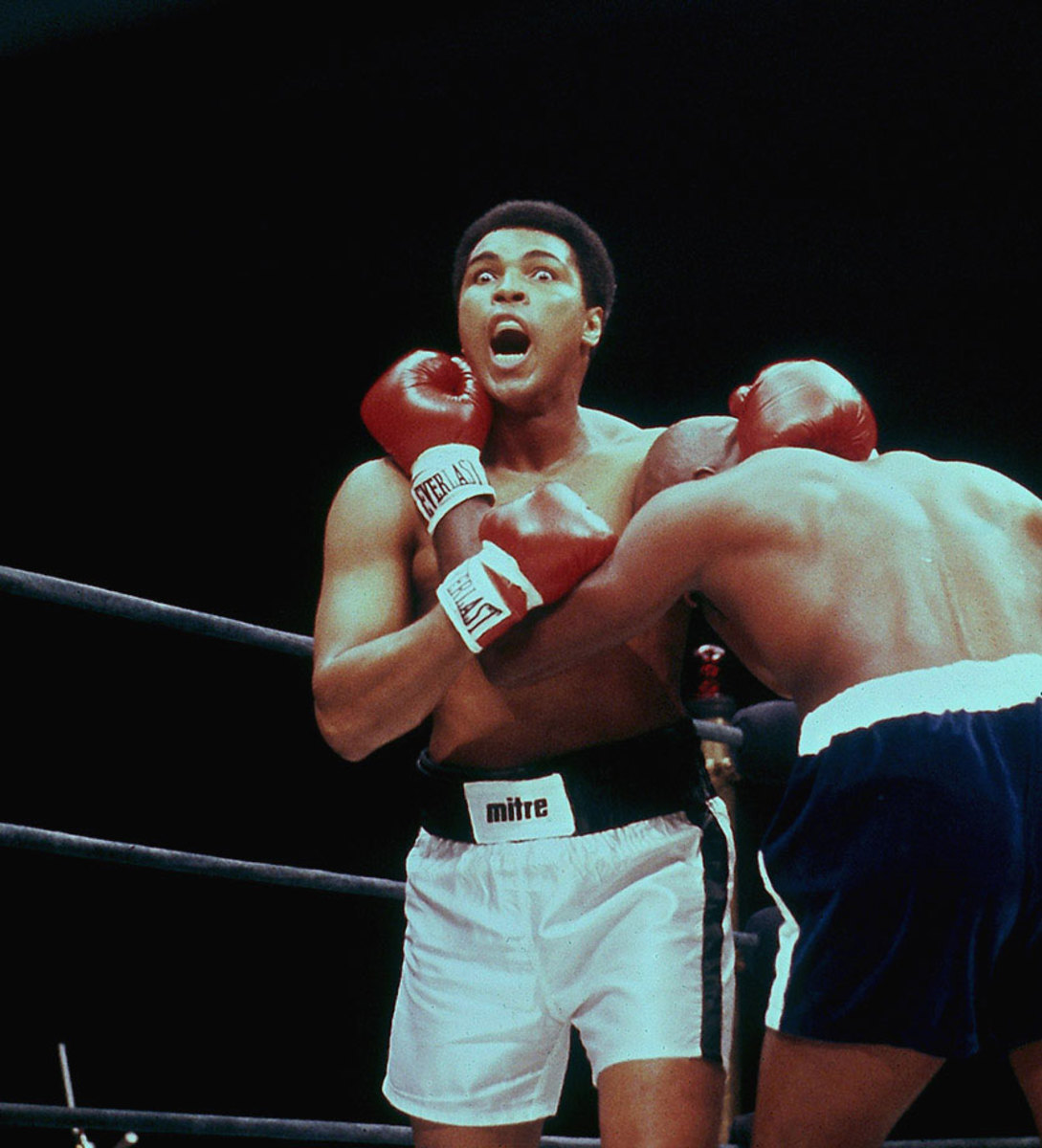
Ali makes a face during his fight with Earnie Shavers in 1977 at Madison Square Garden. Hurt badly by Shavers in the second round, Ali rebounded and outboxed Shavers throughout to build a lead on points before Shavers came on again in the later rounds. Seemingly exhausted going into the 15th and final round, Ali remained victorious by producing a closing flurry that left Shavers wobbling at the bell and the Garden crowd once again in delirium over his Ali magic.
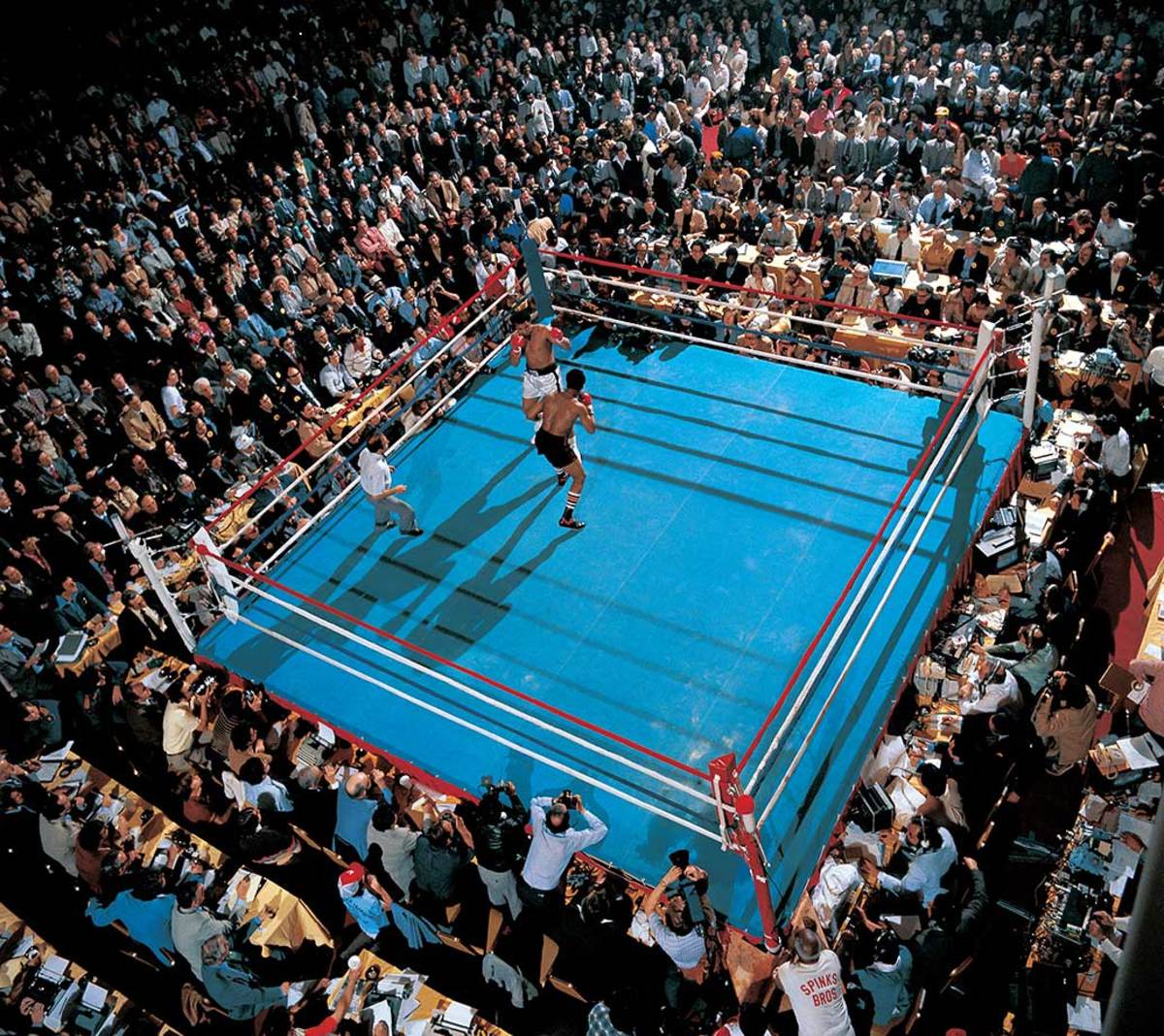
Ali squares off with Leon Spinks at the Las Vegas Hilton Hotel in February 1978. Spinks won the fight in a split decision, ending Ali's 3.5-year reign as the heavyweight champion. It was the only time in Ali's career that he lost his championship title in the ring.
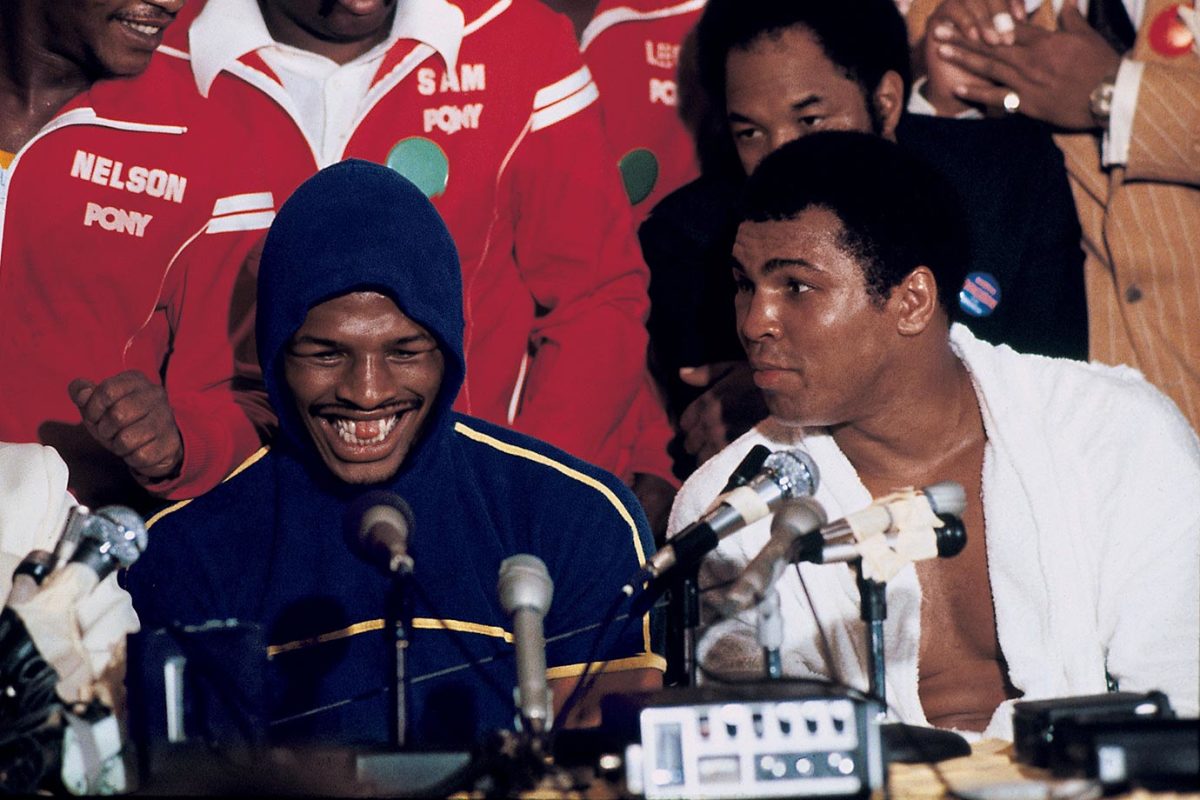
Leon Spinks took center stage over Ali at the press conference after their fight. The victorious Spinks and his gap-toothed grin were featured on the Feb. 19, 1978 cover of Sports Illustrated.
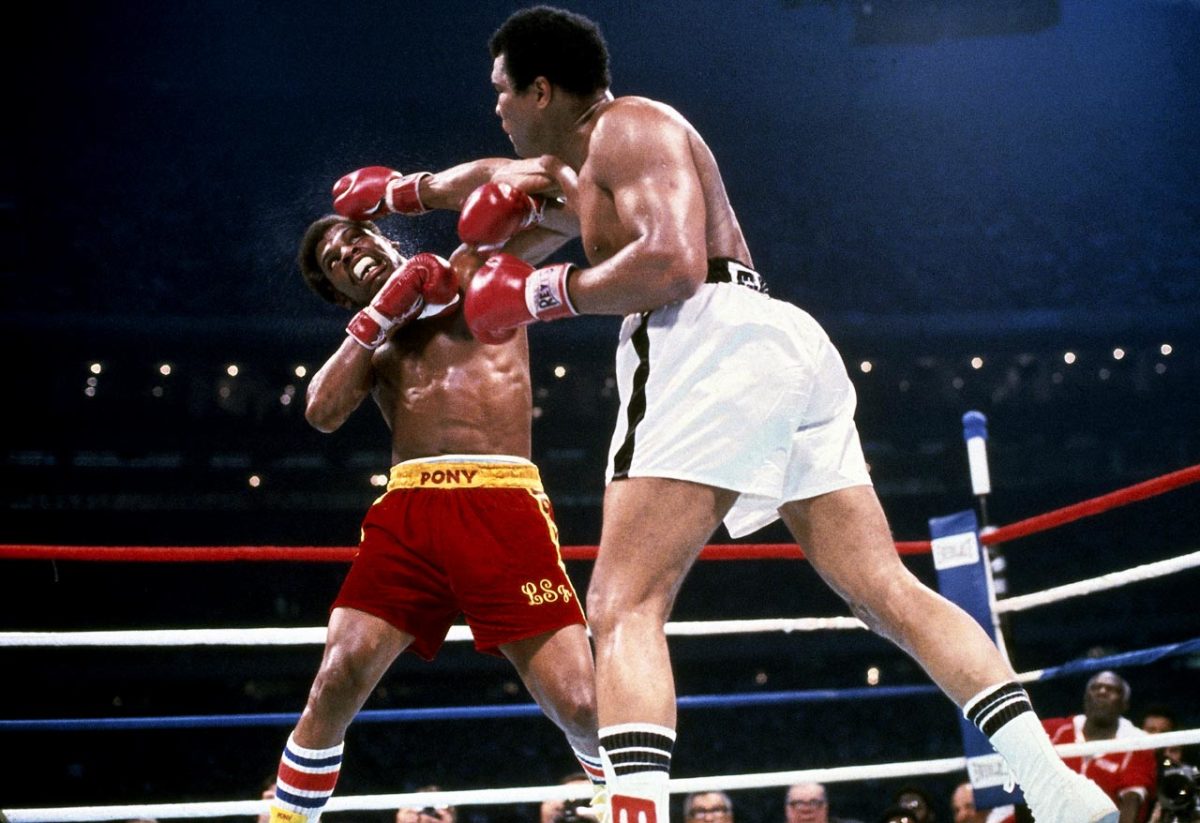
Ali lands a straight right hand to the head of Spinks in the rematch of their title bout in 1978. Ali won on a 15 round decision.
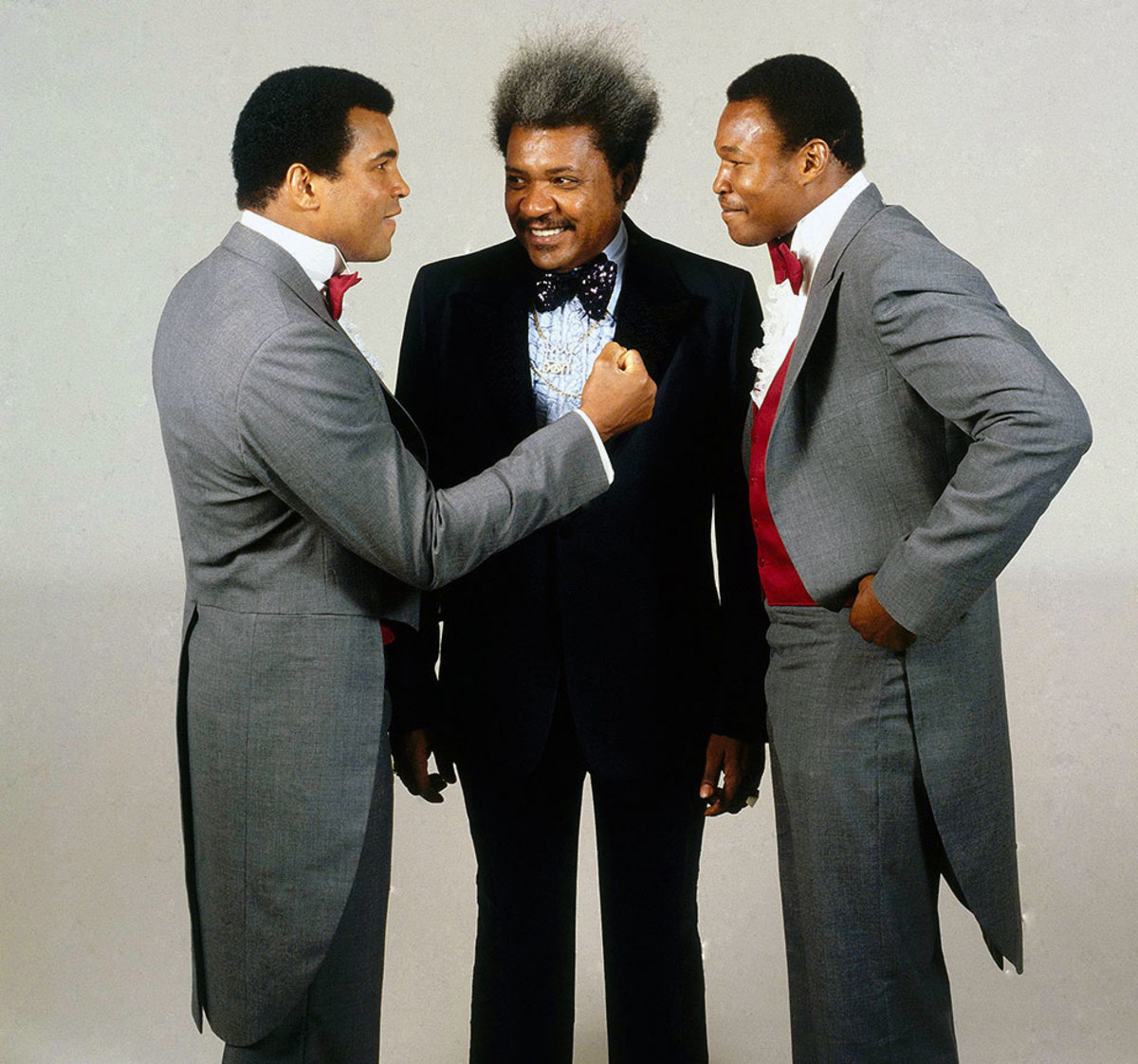
Don King pulled the strings again when Ali faced Larry Holmes before their November 1980 fight. King became a key figure in Ali's career, promoting his biggest fights, the Thrilla in Manila and the Rumble in the Jungle.
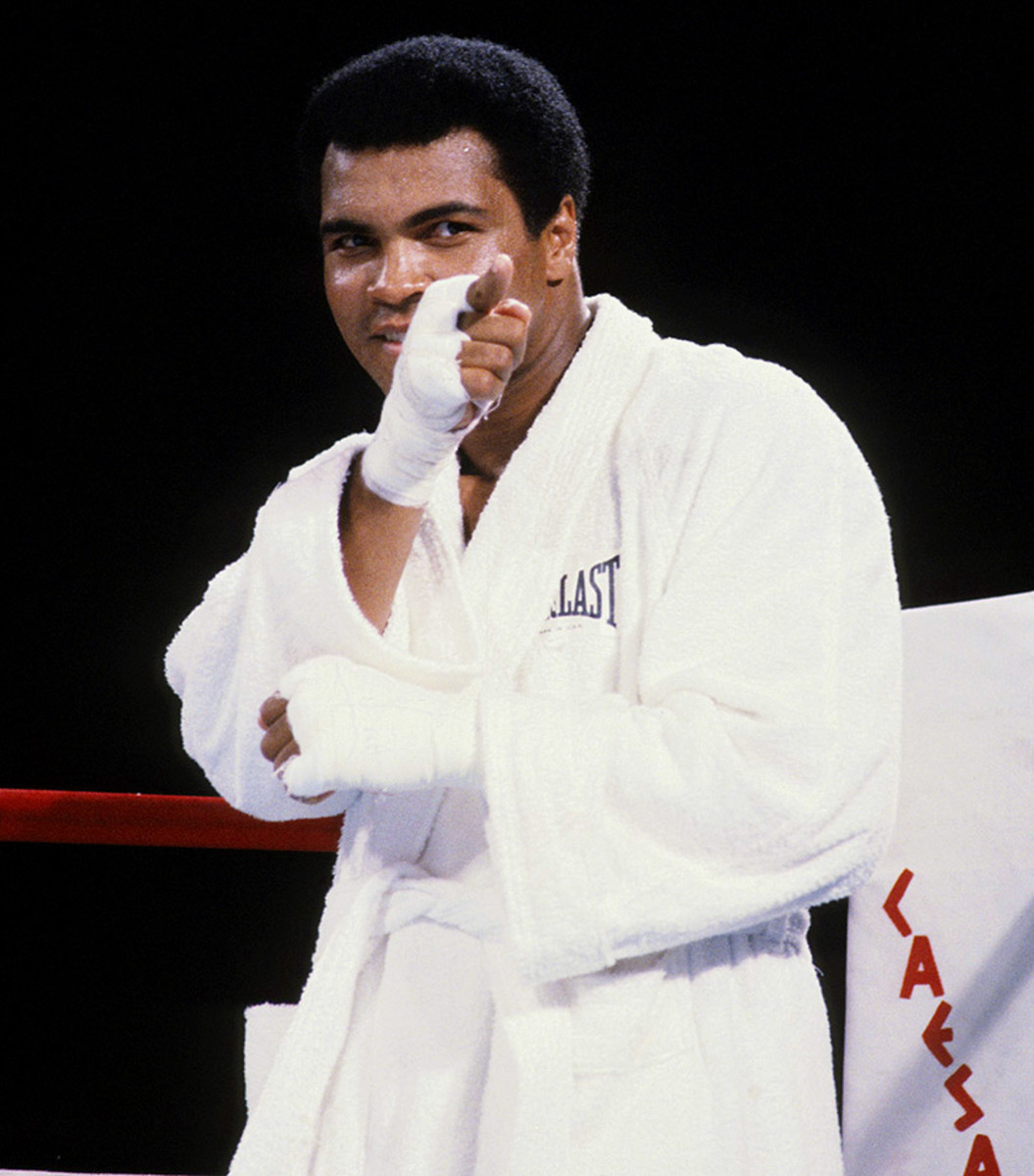
Ali points at Larry Holmes before their bout at Caesars Palace in 1980.
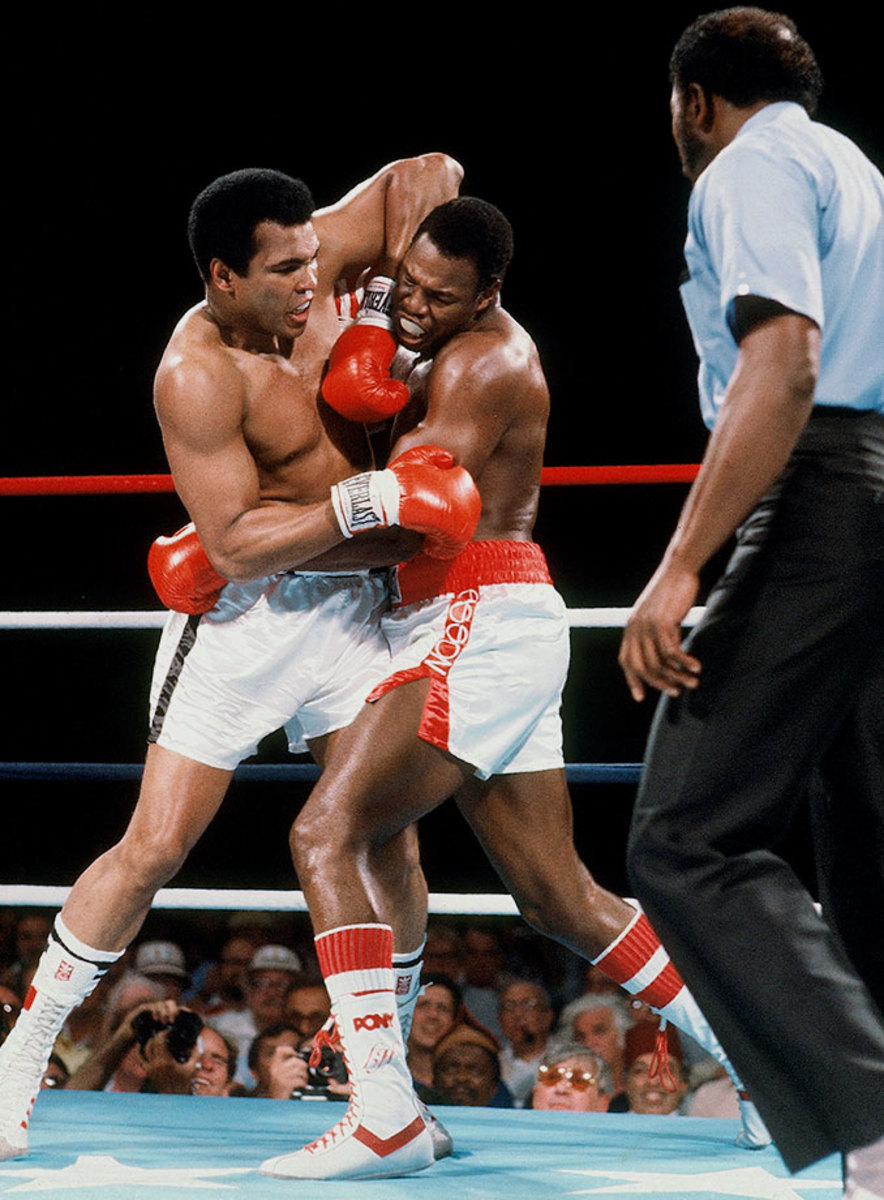
Ali grapples with Holmes during their bout in 1980. Trainer Angelo Dundee stopped the fight in the 11th round, marking the fight as Ali's only career loss by knockout.
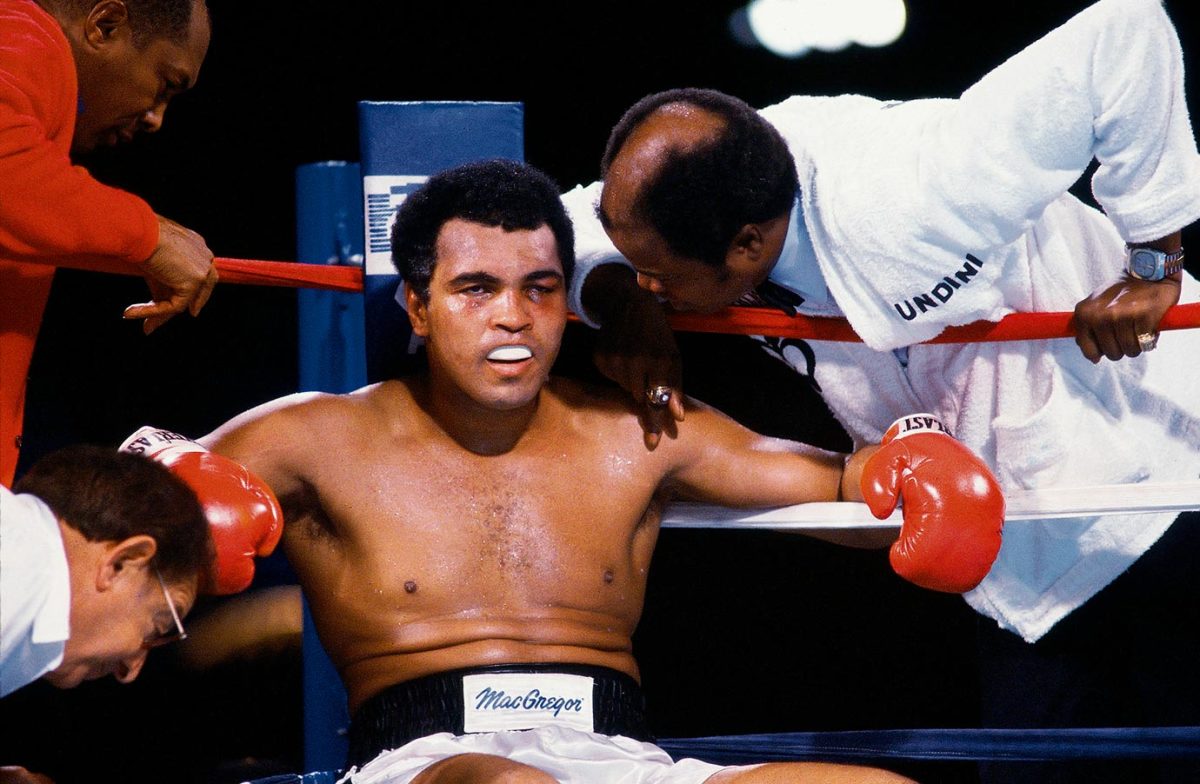
Drew Bundini Brown leans in to speak to Ali, who returned to fight Holmes after a brief retirement. By this time, Ali had already begun developing a vocal stutter and trembling hands and taken thyroid medication to lose weight that left him tired and short of breath.
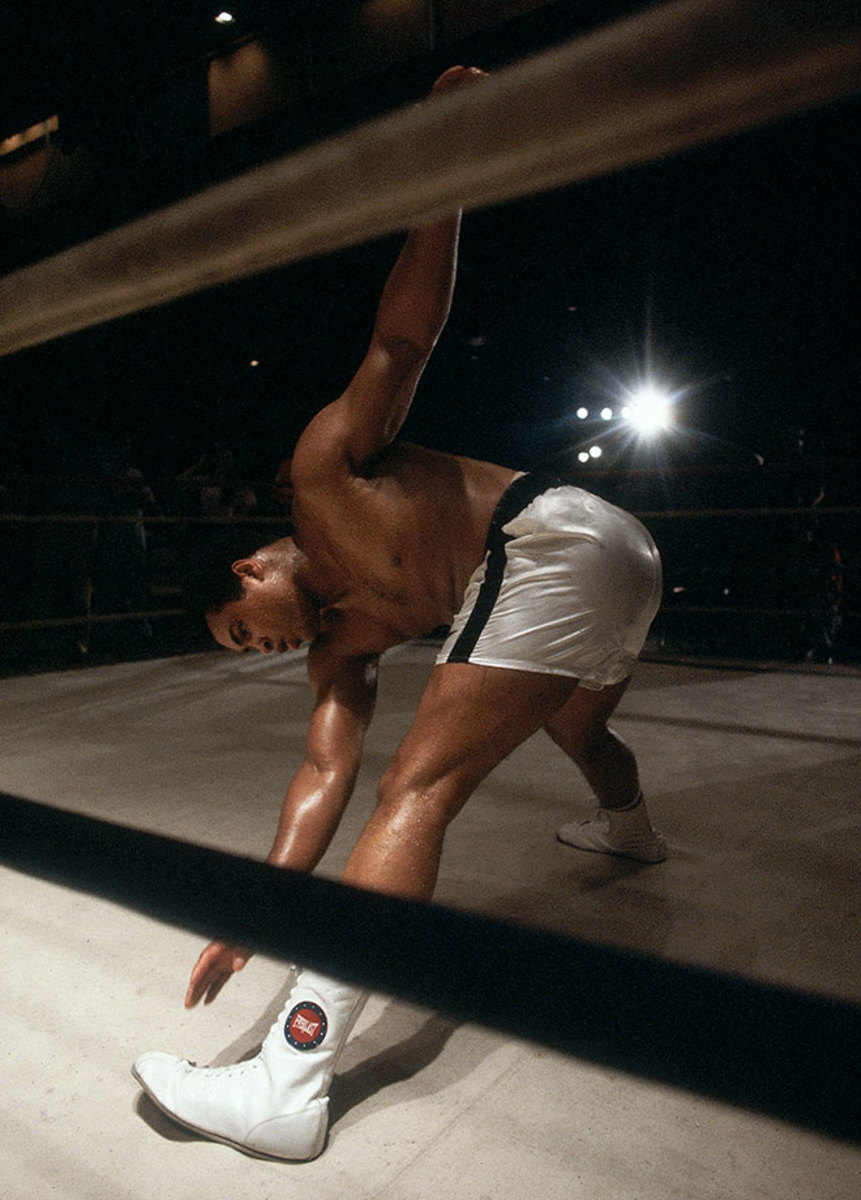
Ignoring pleas for his retirement, Ali stretches before a fight against Trevor Berbick in Nassau, Bahamas. Ali lost to Berbick in a unanimous decision and retired after the bout, the 61st of his career.
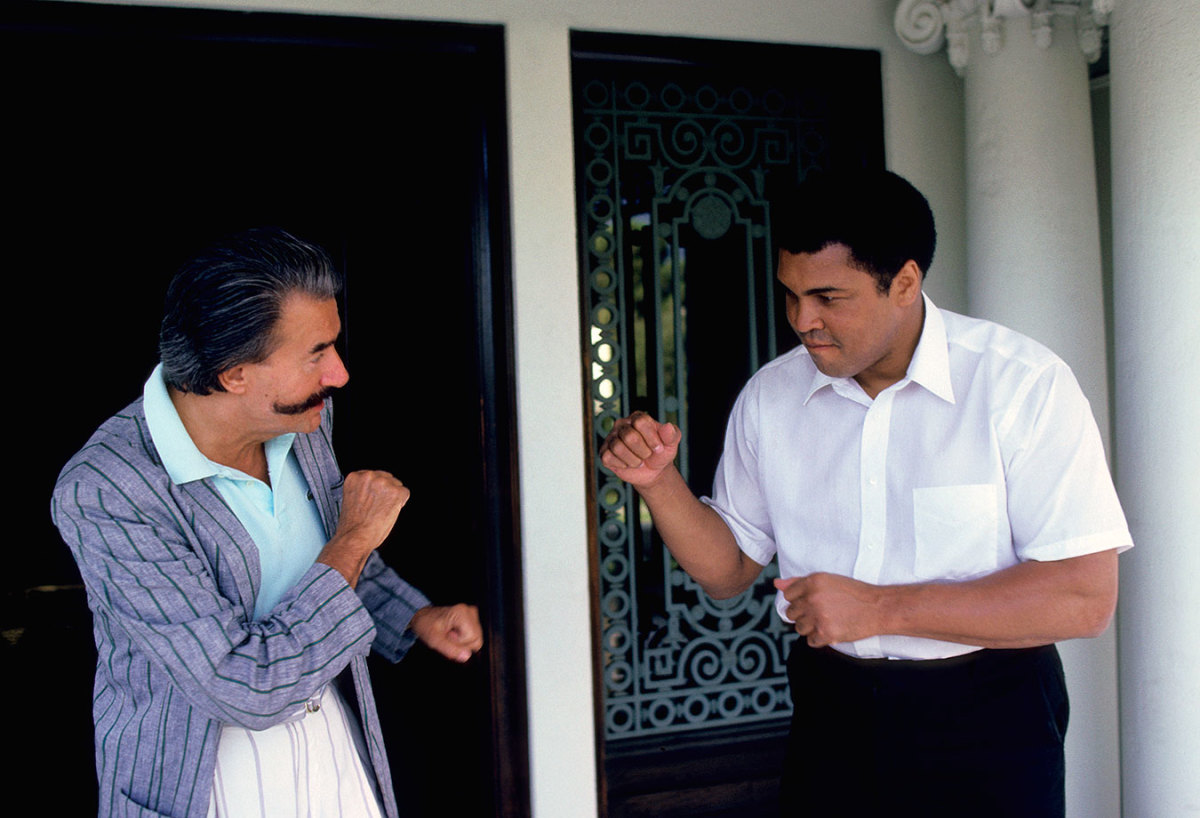
Ali pretends to spar with artist LeRoy Neiman at his home in Los Angeles. Neiman met Ali in 1962 and made many paintings and sketches from throughout Ali's life.
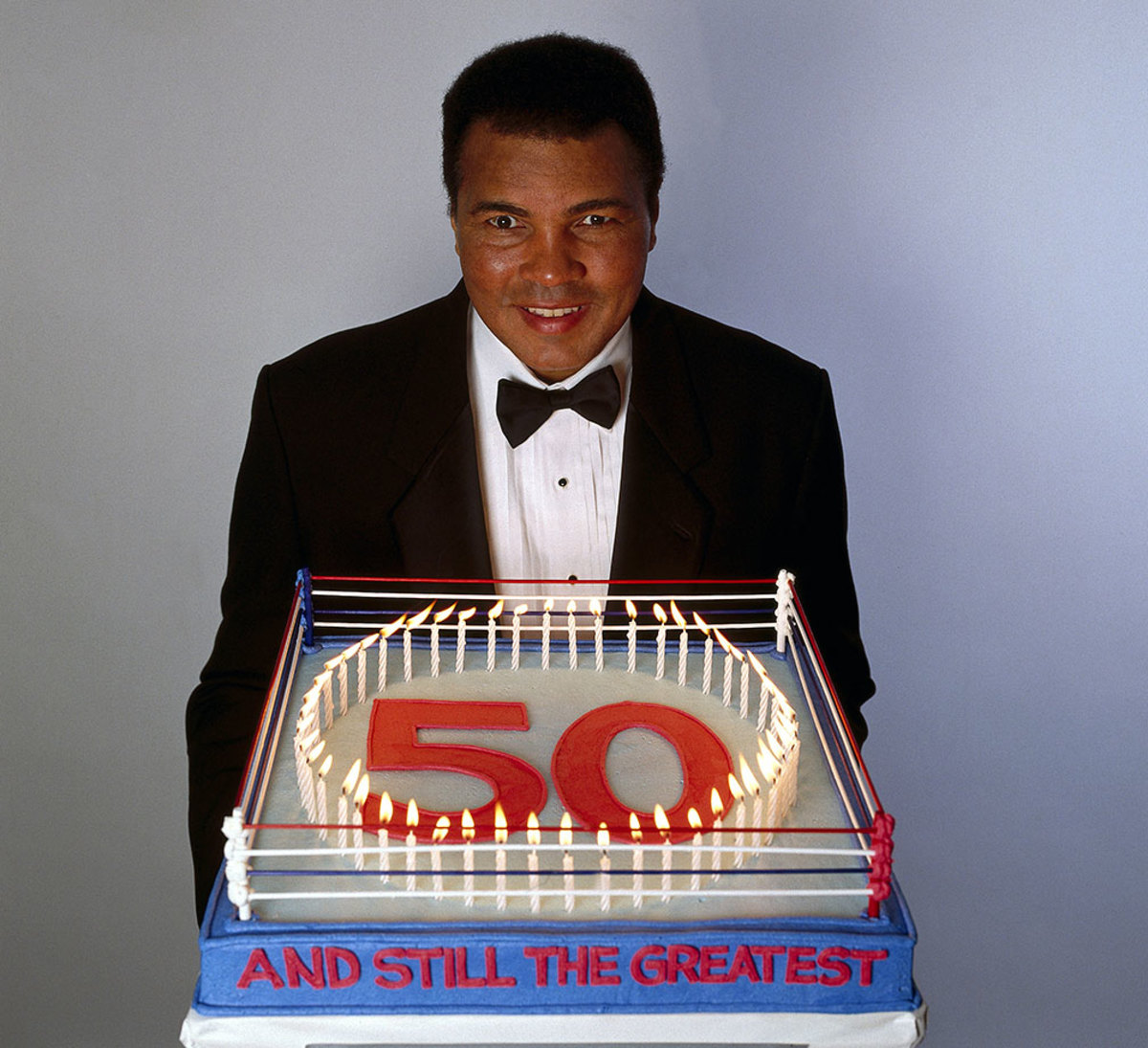
Cake in hand, Ali poses for a 50th birthday portrait in 1991. Although diagnosed with Parkinson's syndrome seven years earlier, Ali was still active, traveling to Iraq during the Gulf War to meet with Saddam Hussein in an attempt to negotiate the release of American hostages.
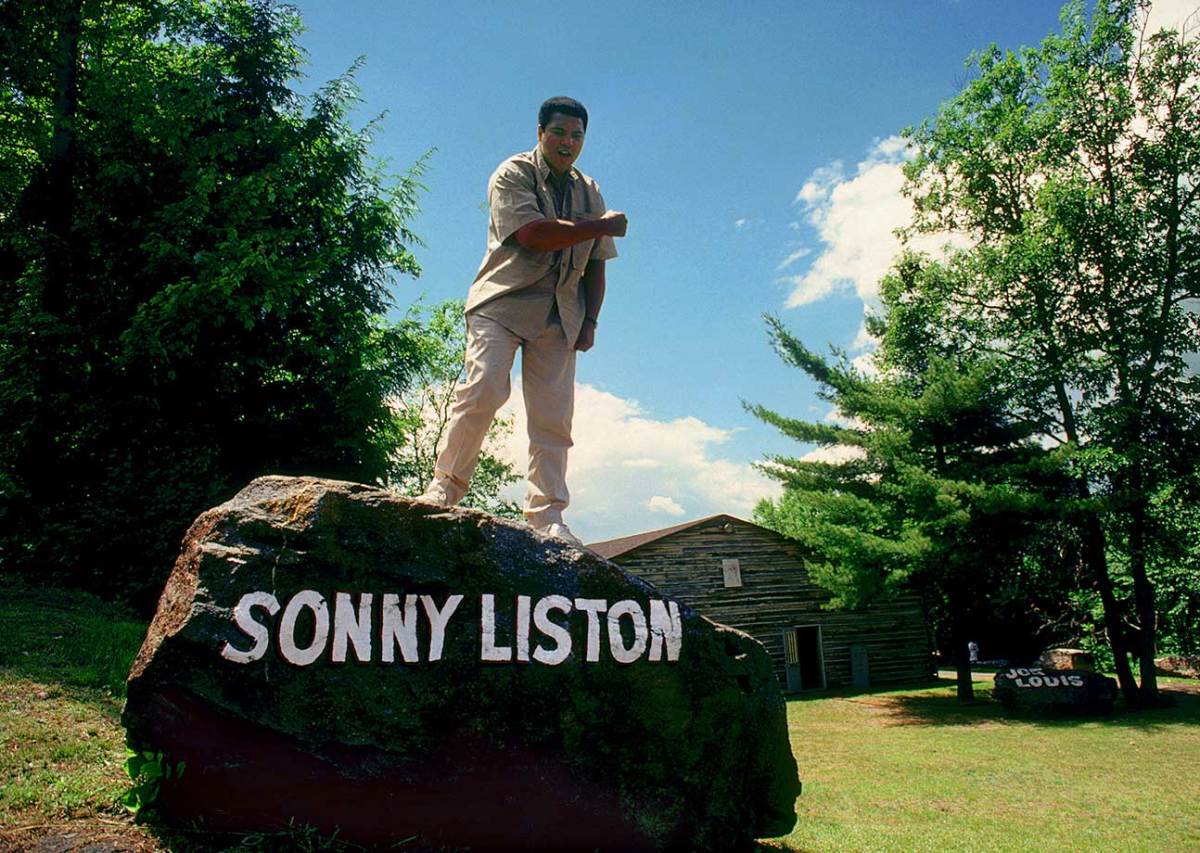
The same year, Ali stands atop of the Sonny Liston rock at his old training camp cabin. Ali and his father painted the names of famous boxers he admired on 18 boulders at the camp.
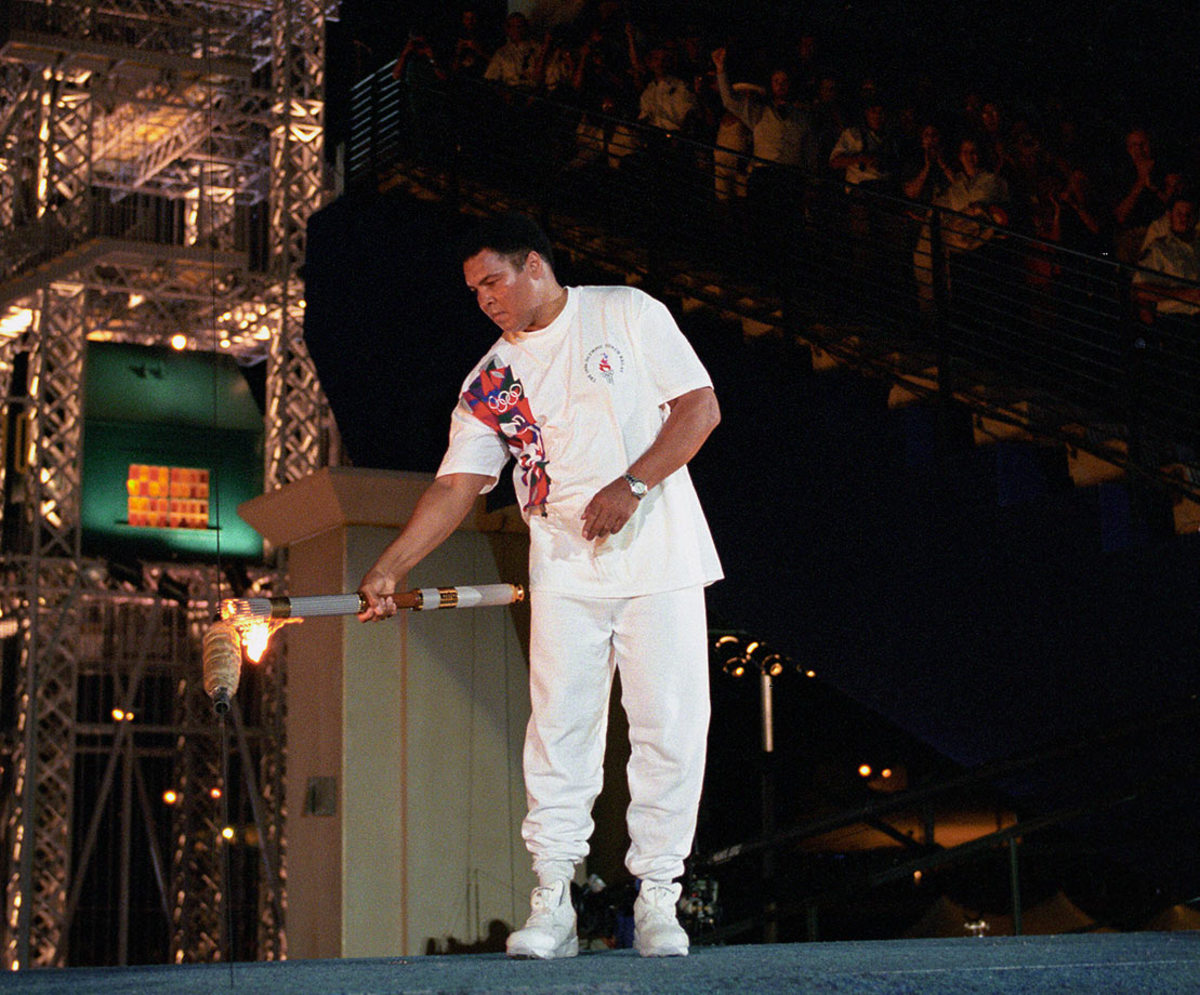
Ali carries the Olympic torch inside Centennial Olympic Stadium at the 1996 Atlanta Olympics. Despite trembling hands, Ali had the honor to light the Olympic flame in the stadium.
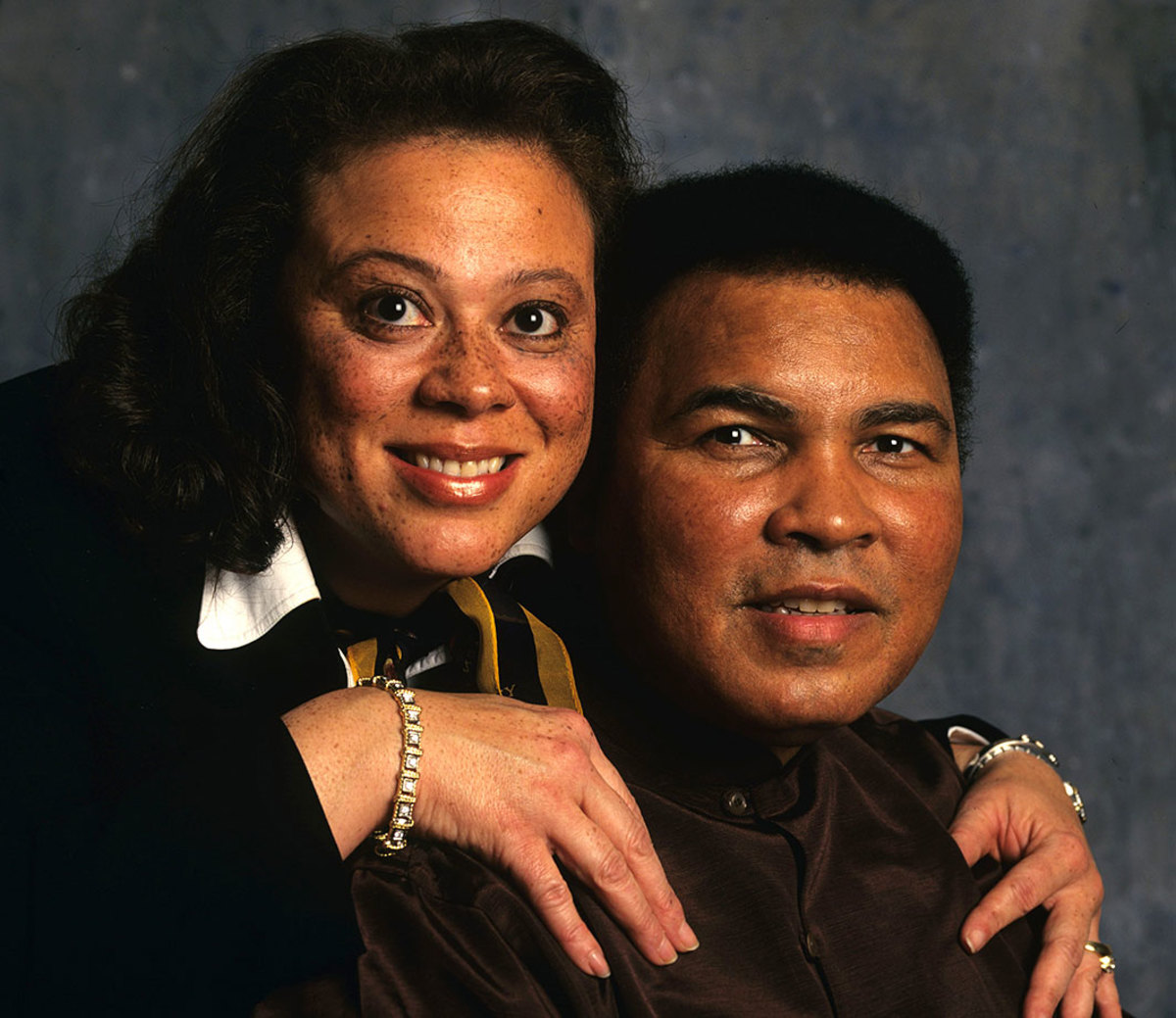
Husband and wife pose for a portrait during a photo shoot in 1997. Muhammad and Lonnie married in 1986 and have an adopted son together, Asaad Amin Ali.
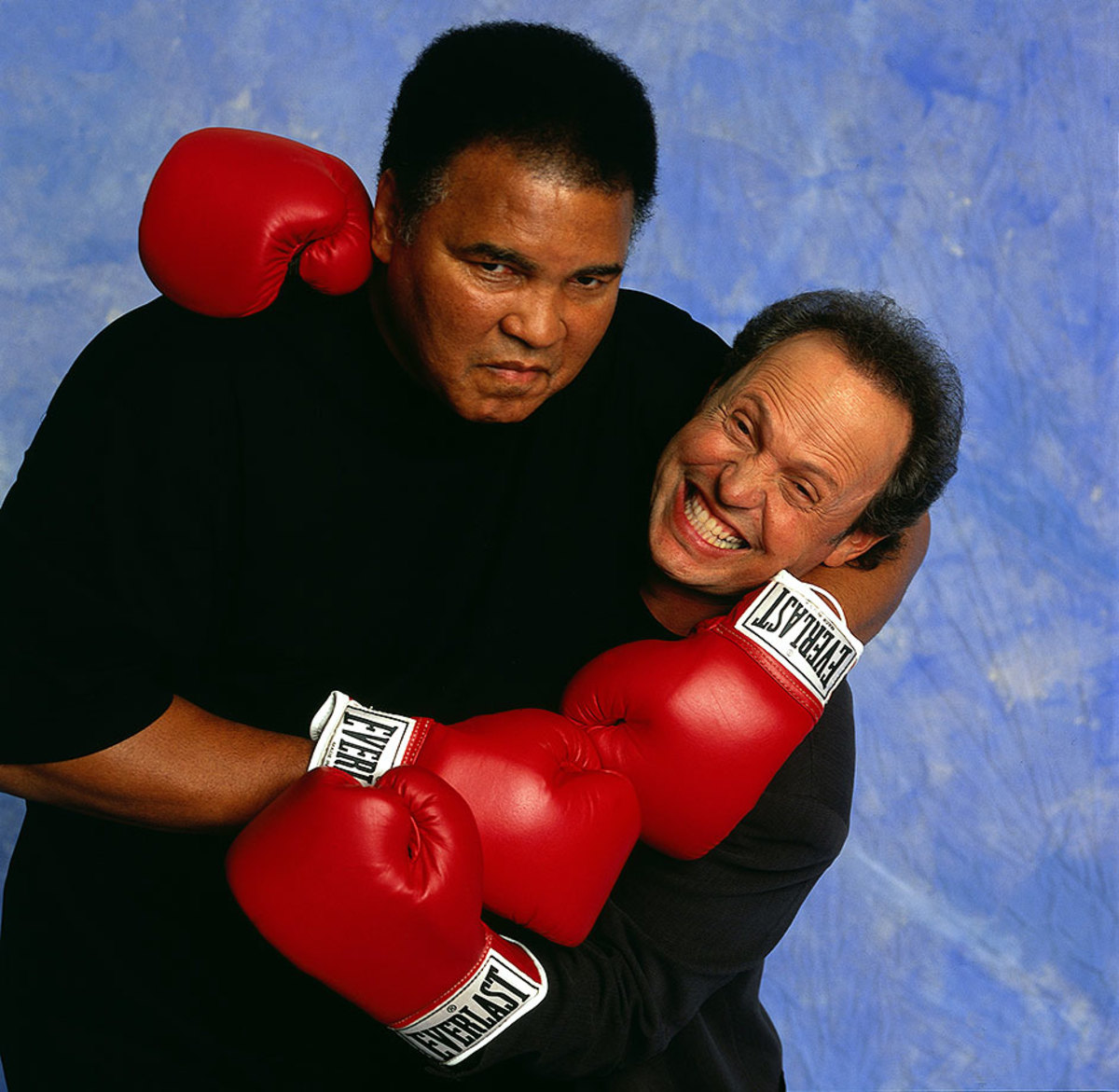
Ali messes around with actor Billy Crystal during a photo shoot in 2000. Crystal's impression of Ali was notorious, and he performed at a tribute to the boxer on his 50th birthday in December 1991.
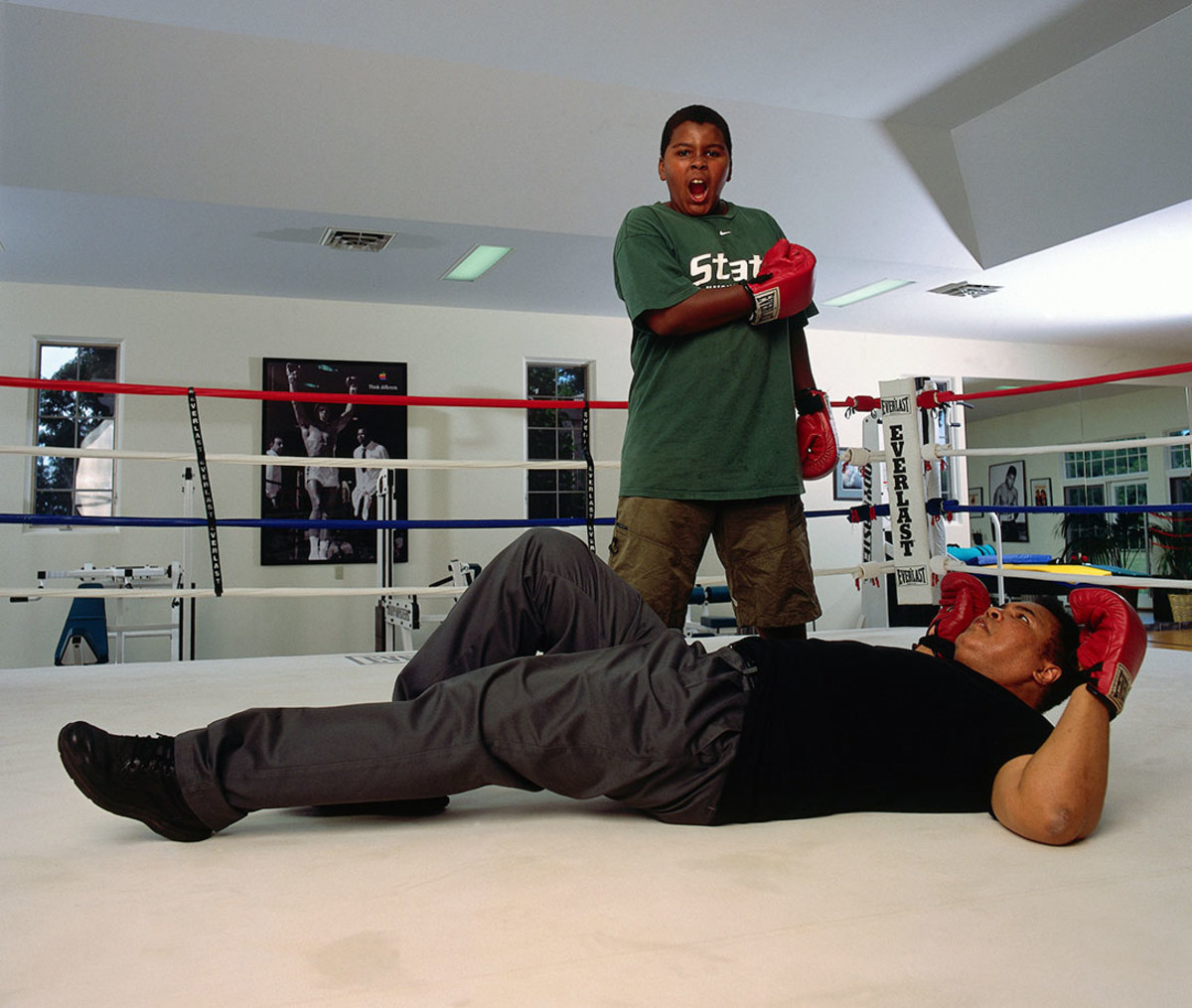
Ali lies on the canvas as his son, Assad Amin Ali, stands over him invoking memories of Ali's victory over Sonny Liston during a photo shoot in the gym at his farm on Kephart Road near Berrien Springs in 2001.
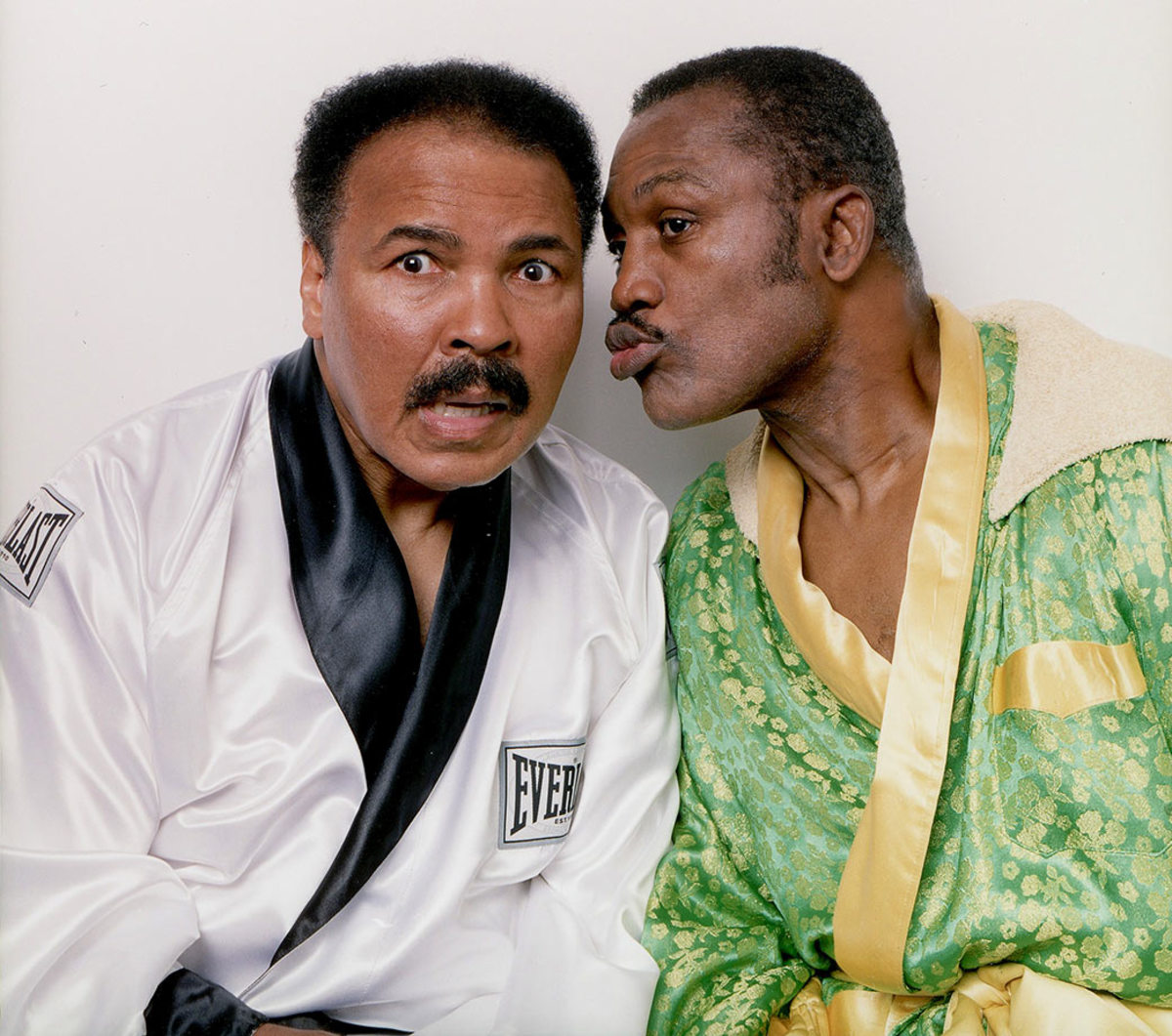
Fierce rivals in the ring, Ali and Joe Frazier pose for a portrait in the boxing robes they wore the night of their first bout at Frazier's Gym in 2003. Ali said after Frazier's death in 2011 that he was "a great champion."
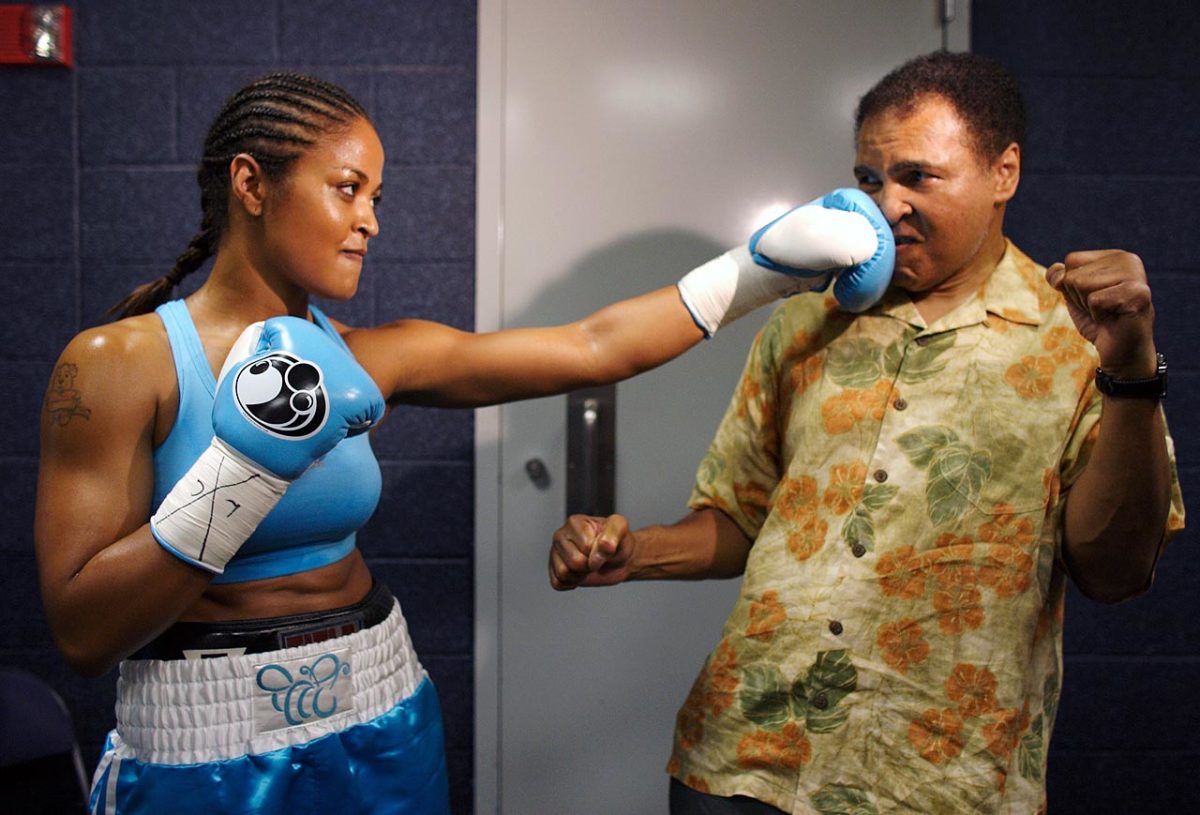
Ali takes a punch from his daughter Laila Ali while sparring before her fight against Erin Toughill in 2005. Laila retired from her own successful boxing career with a professional record of 24-0.
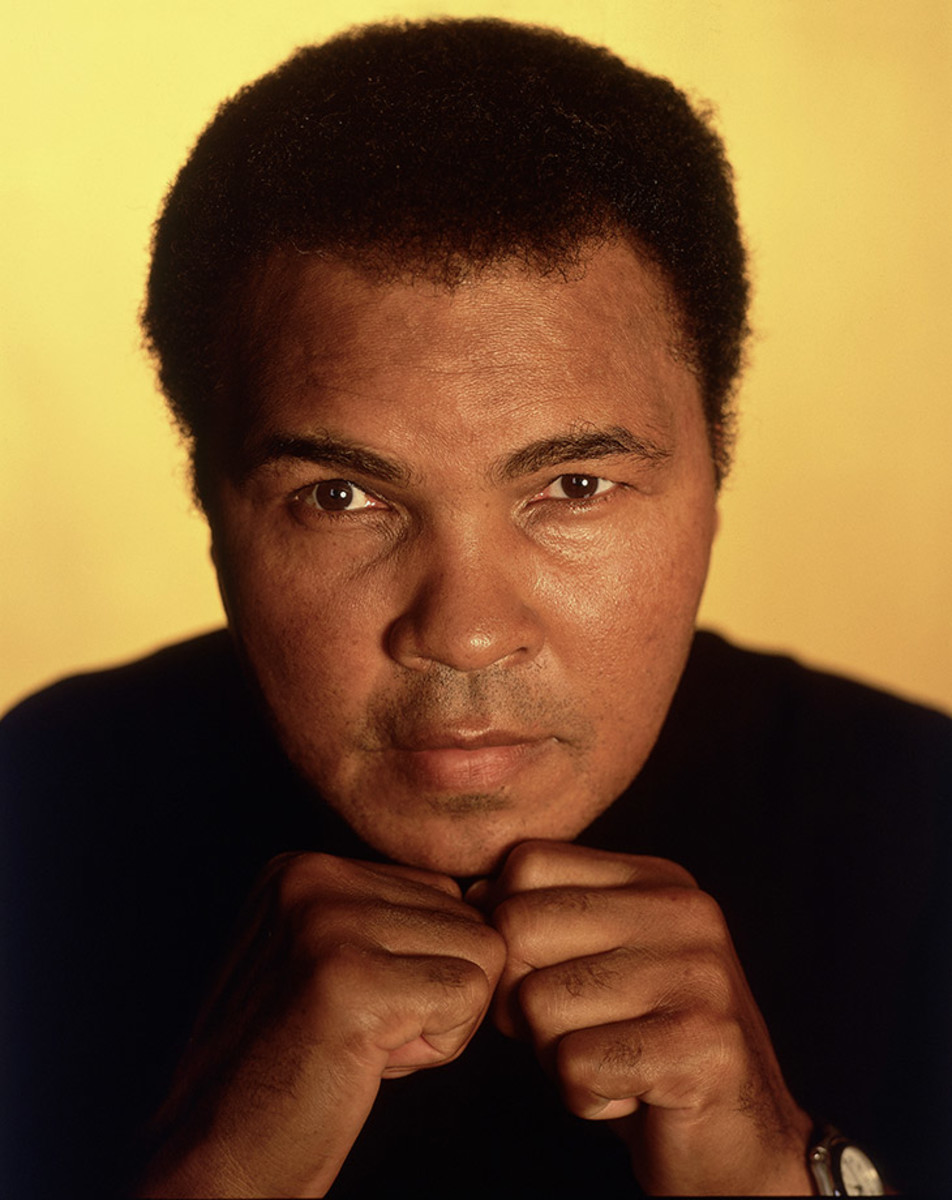
Ali poses with his fists up for a portrait in 2005.
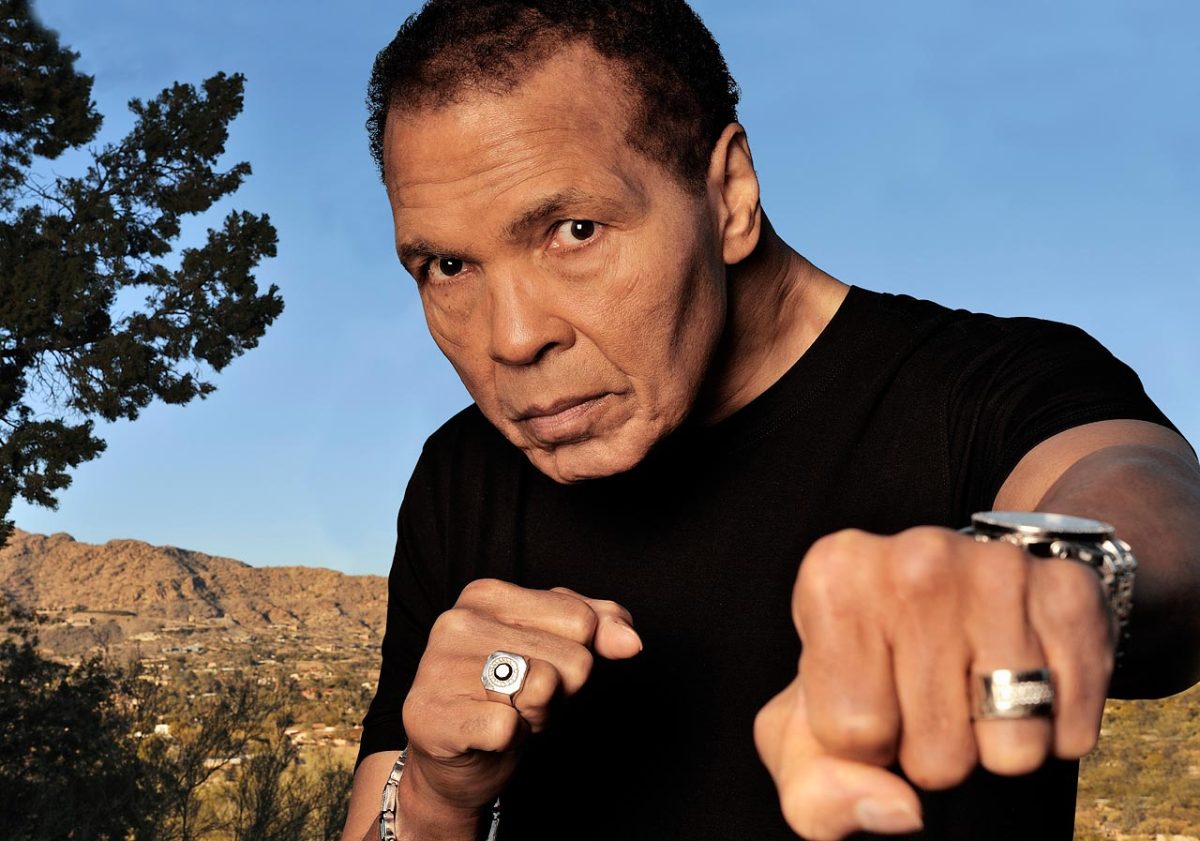
Ali poses with an extended punch in a 2012 photo shoot at his home in Paradise Valley, Ariz., to mark his 70th birthday.
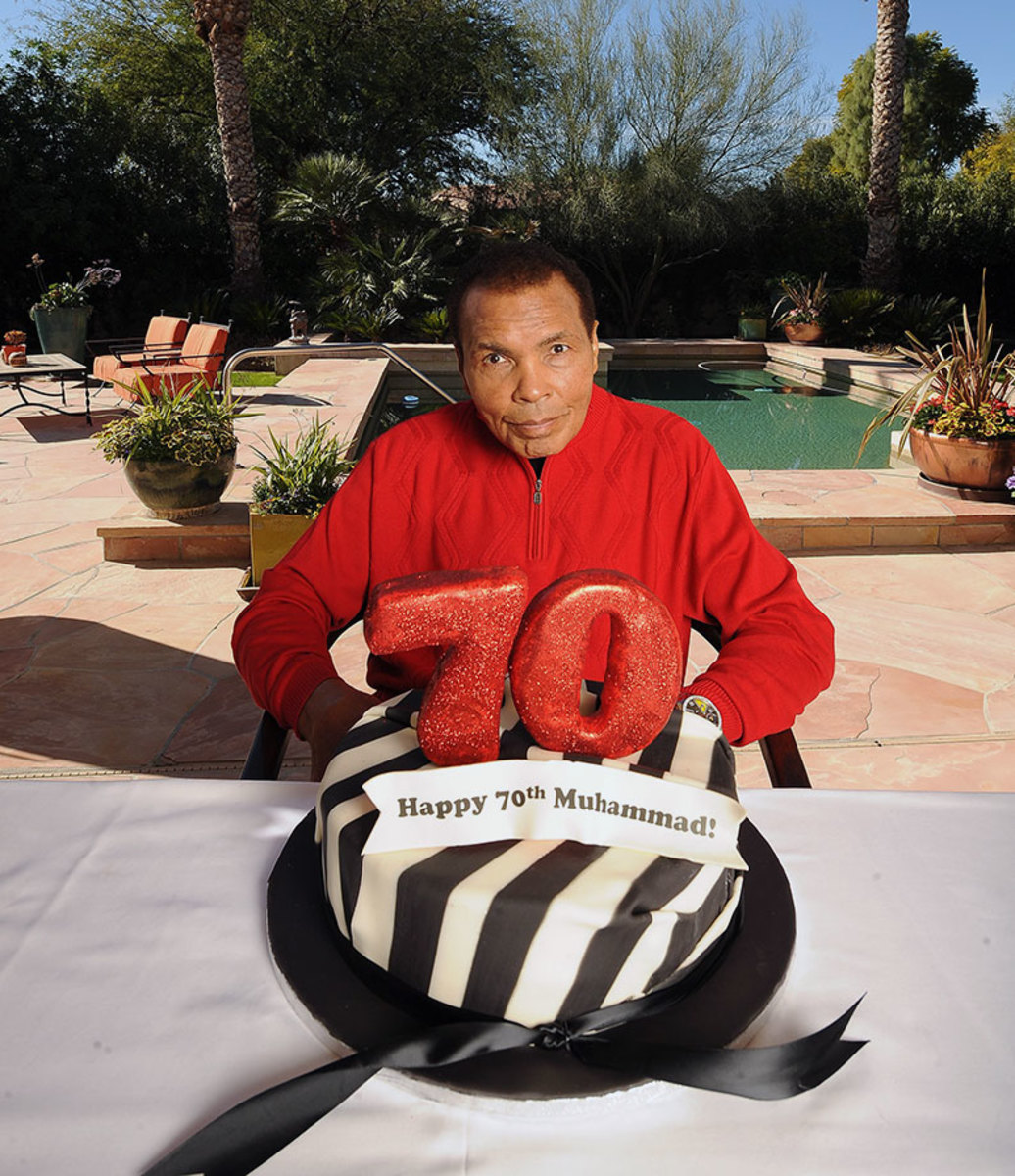
Ali sits in front of a 70th birthday cake in January 2012 at his Arizona home. Later that year he appeared at the opening ceremonies for the 2012 Olympics in London to escort the Olympic flag into the stadium, 52 years after he won gold in Rome.
